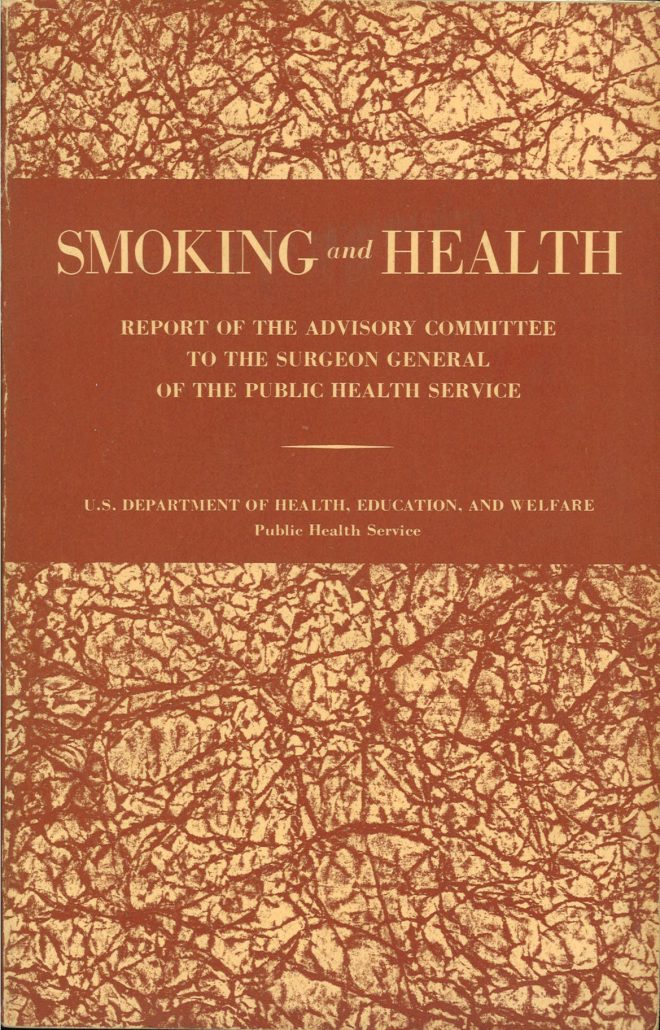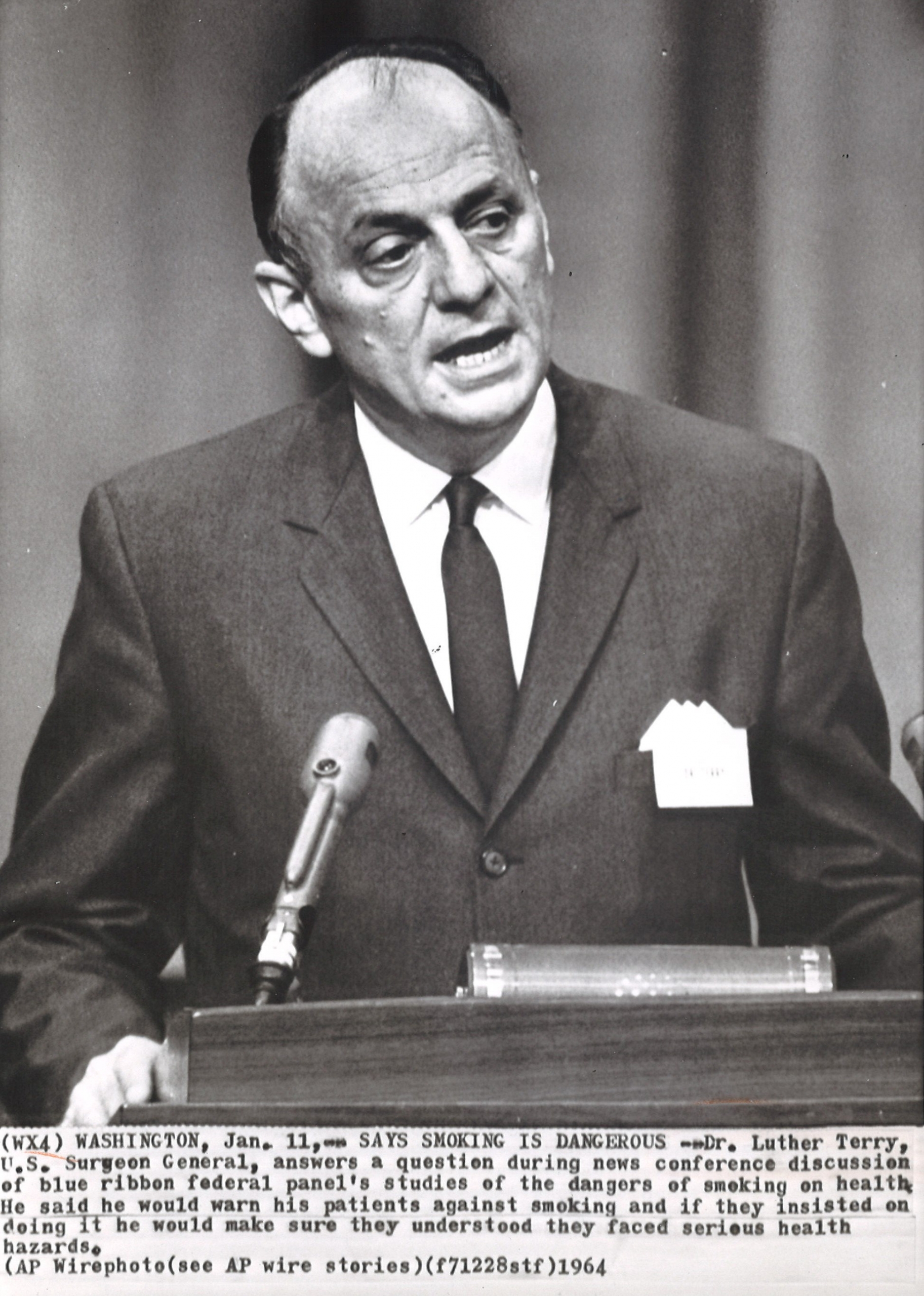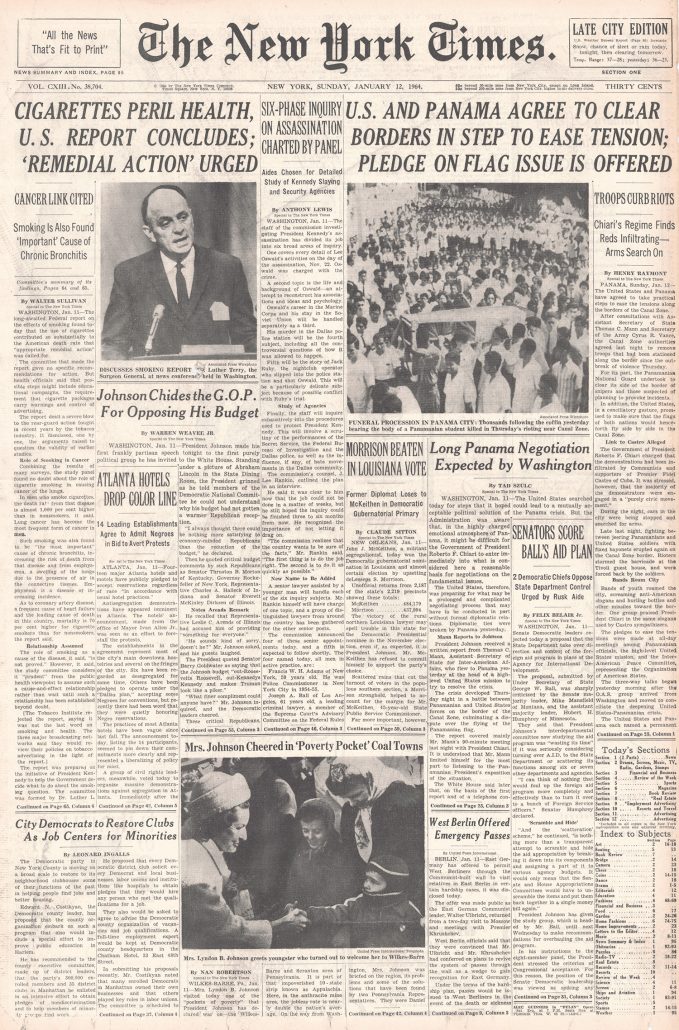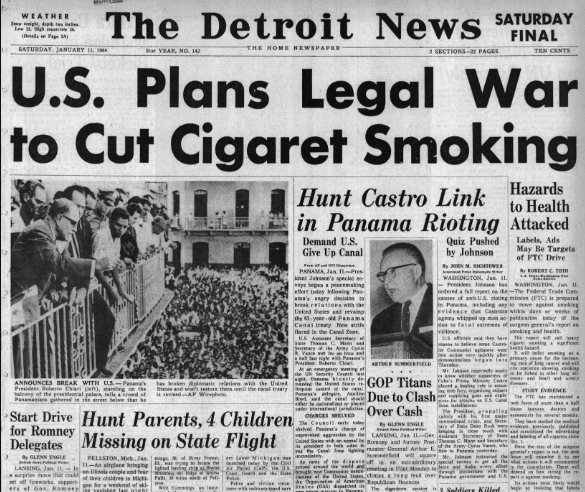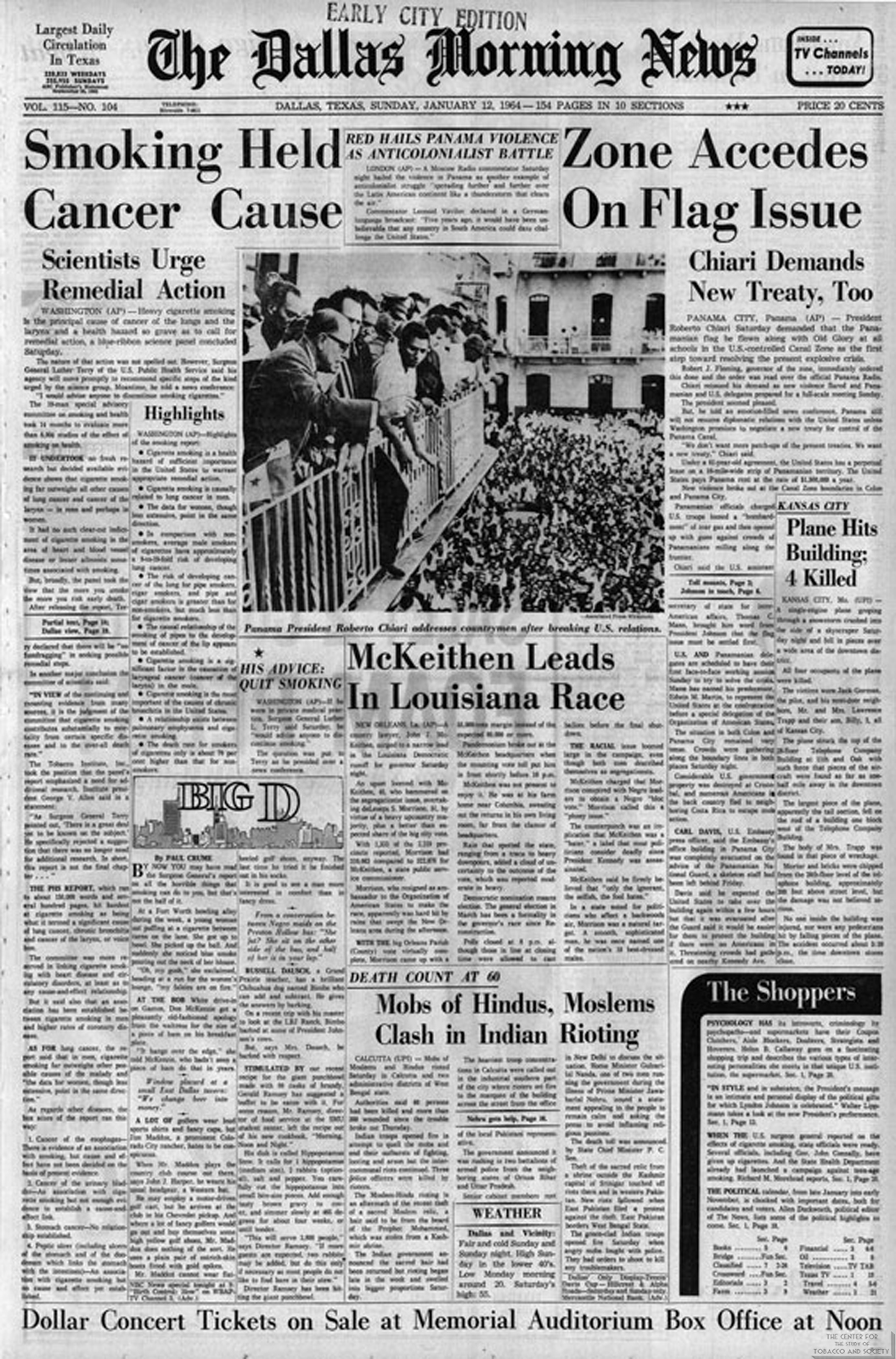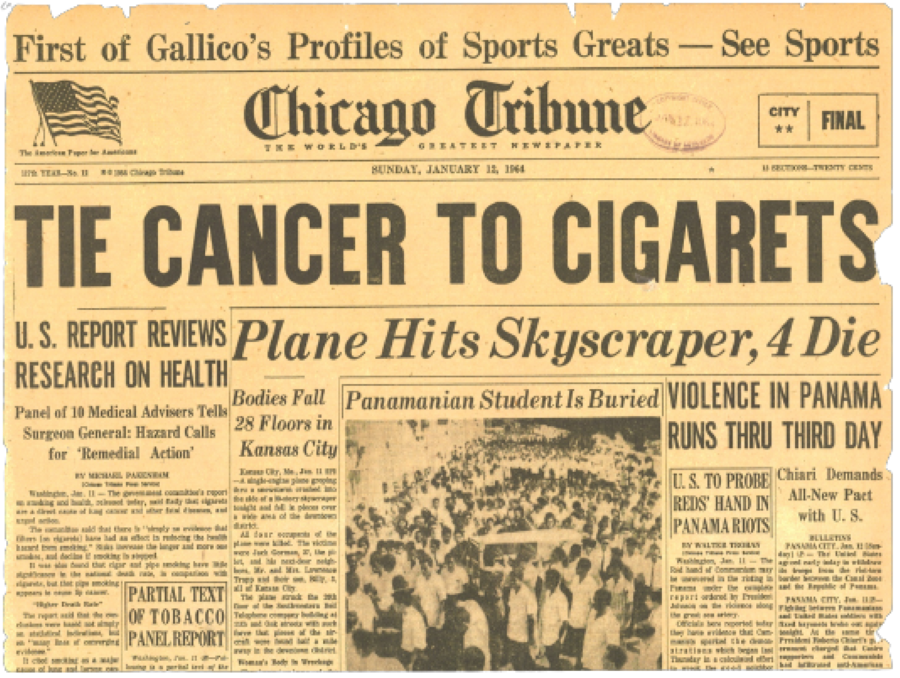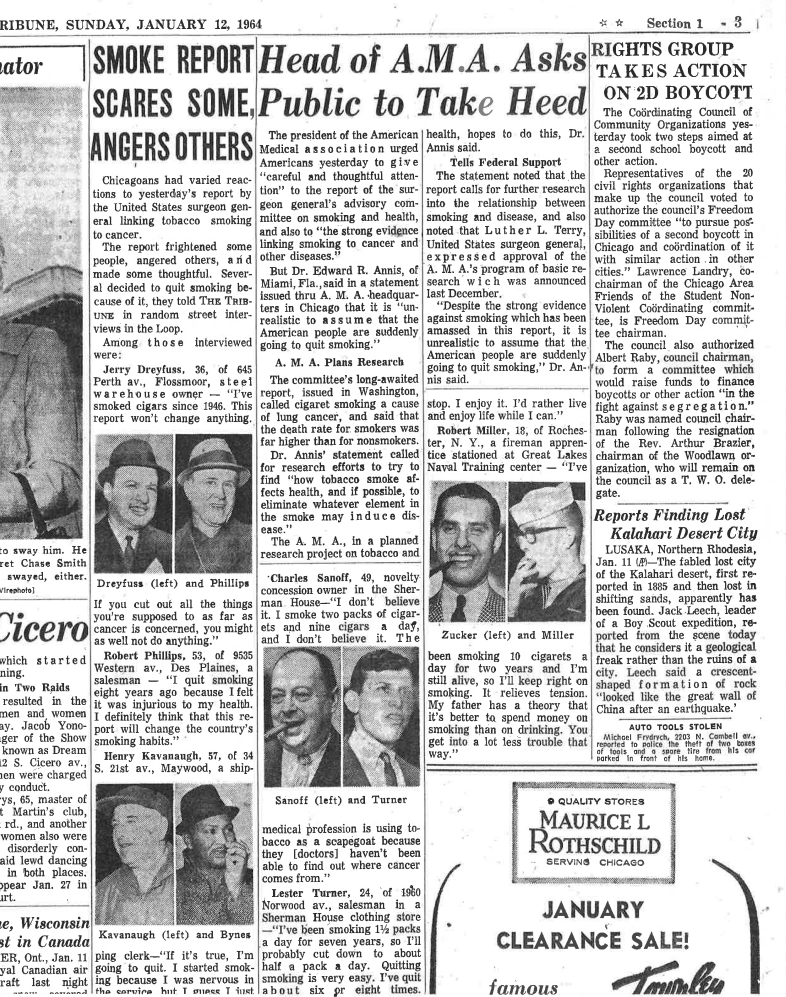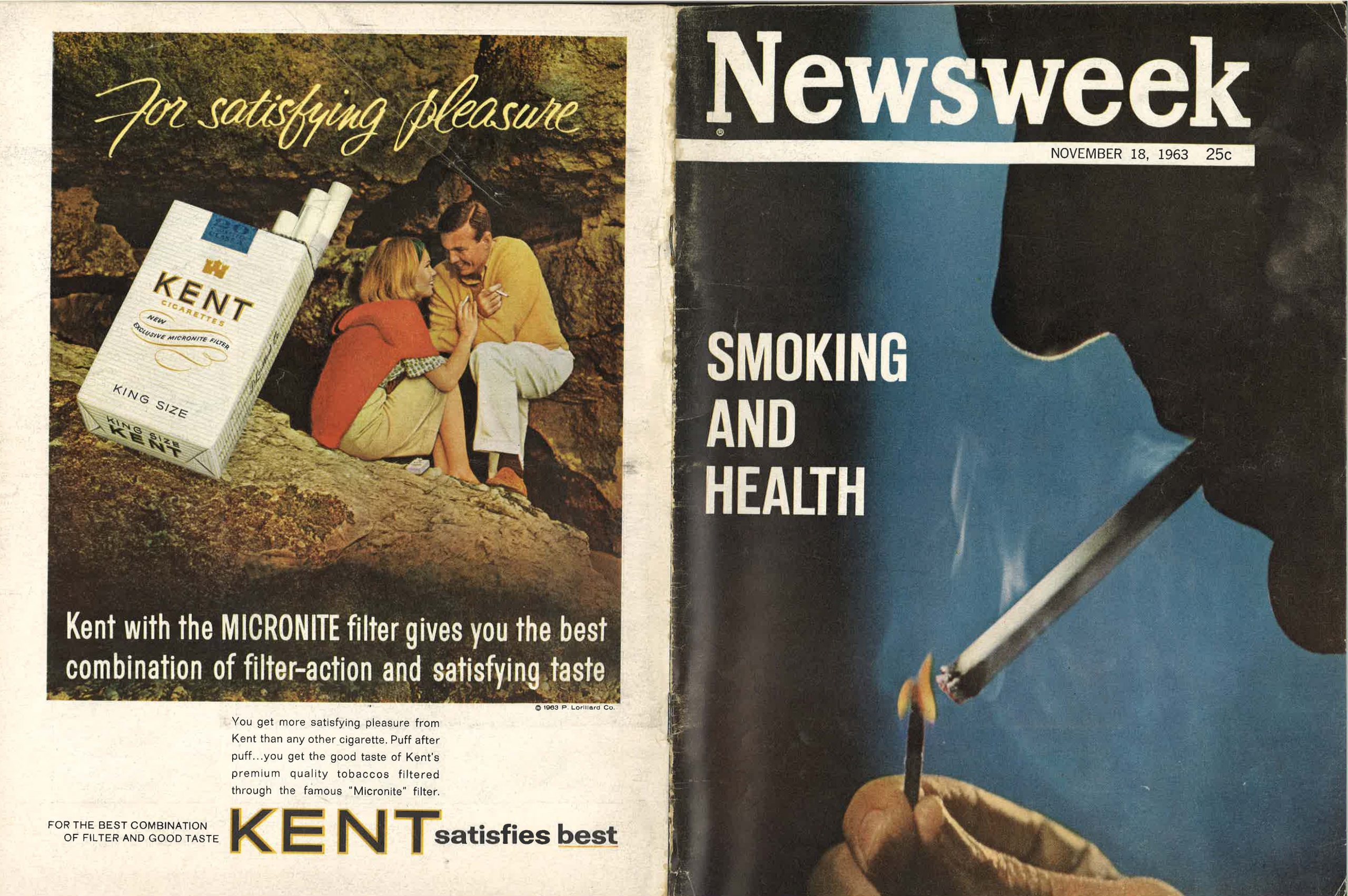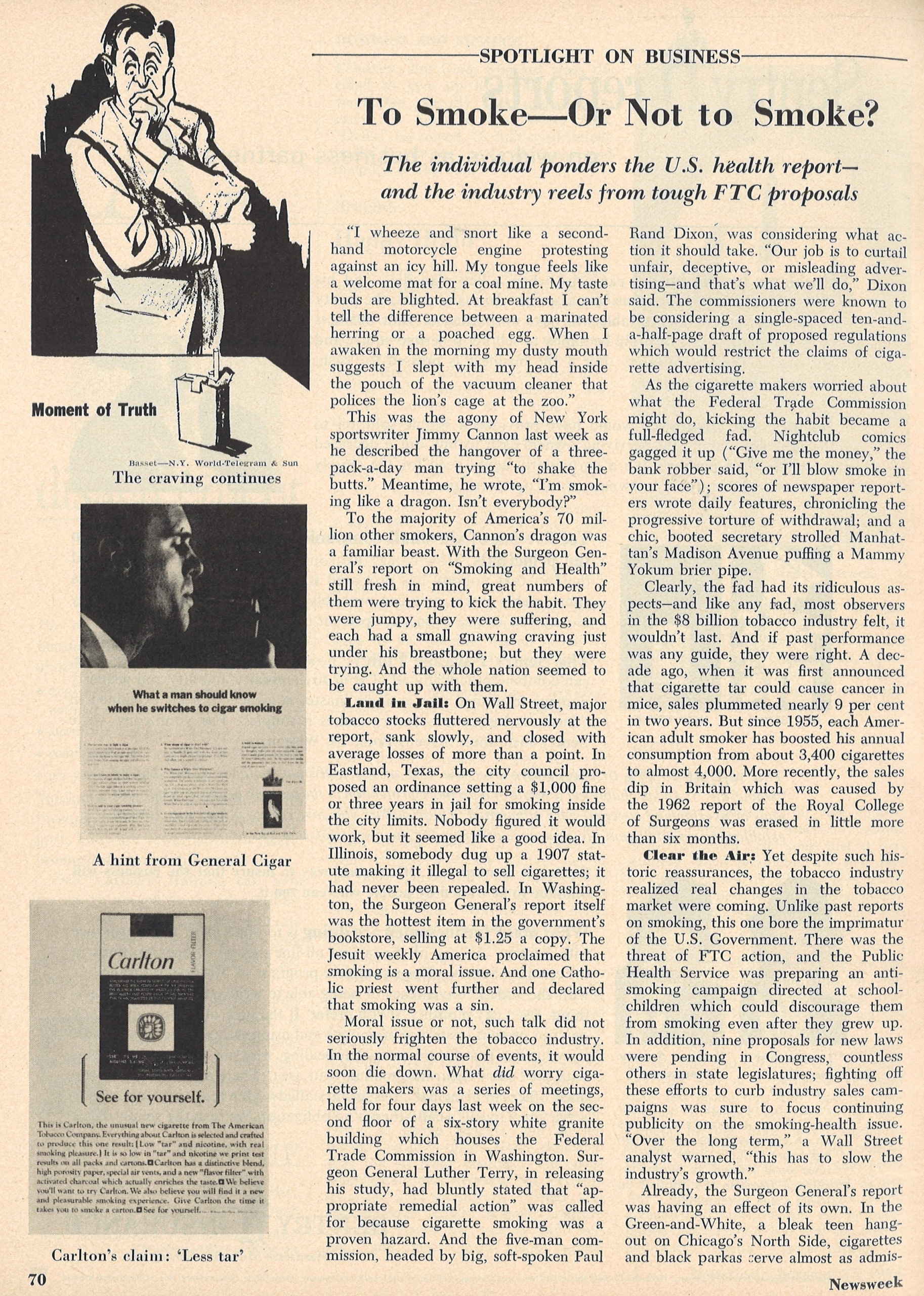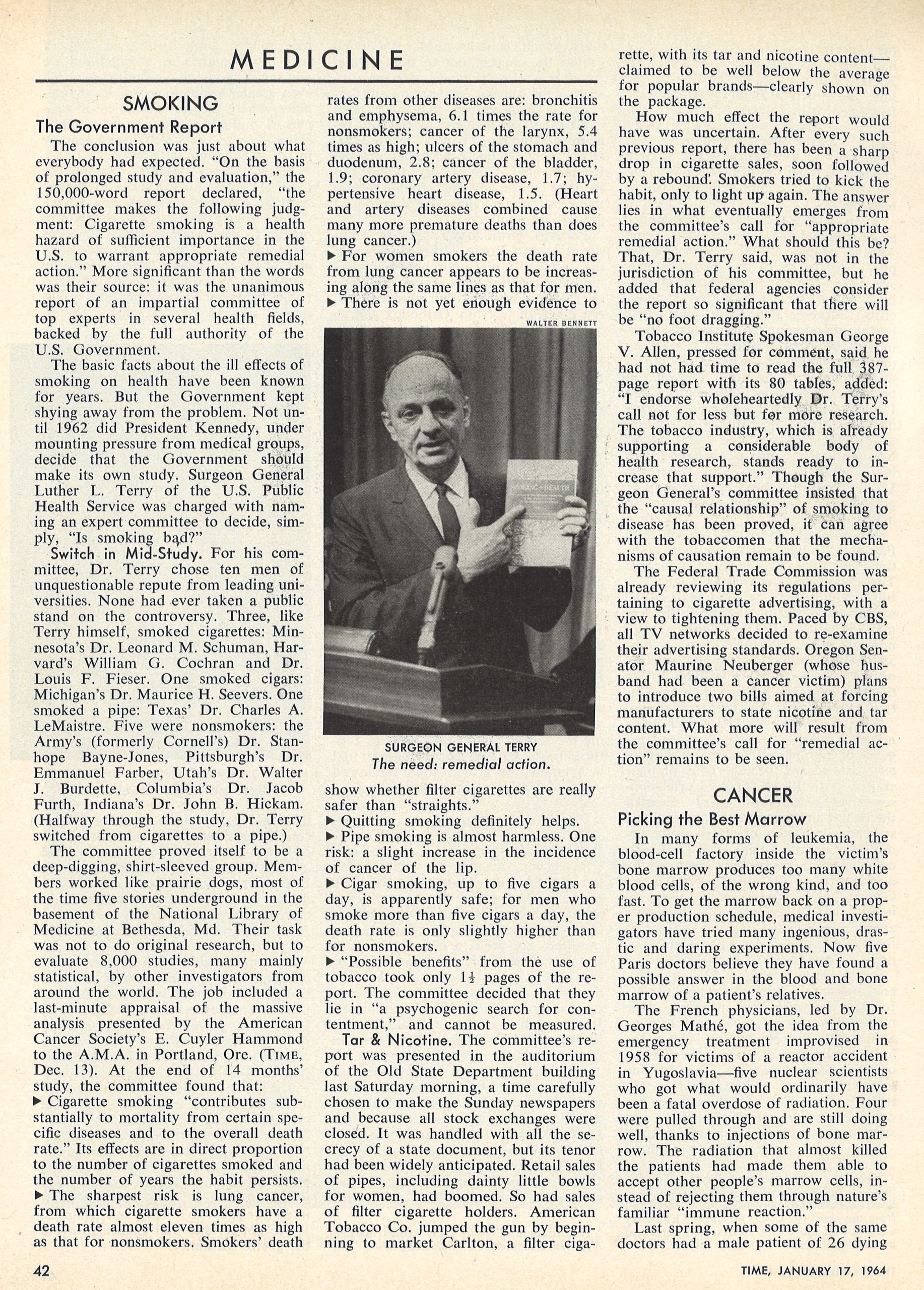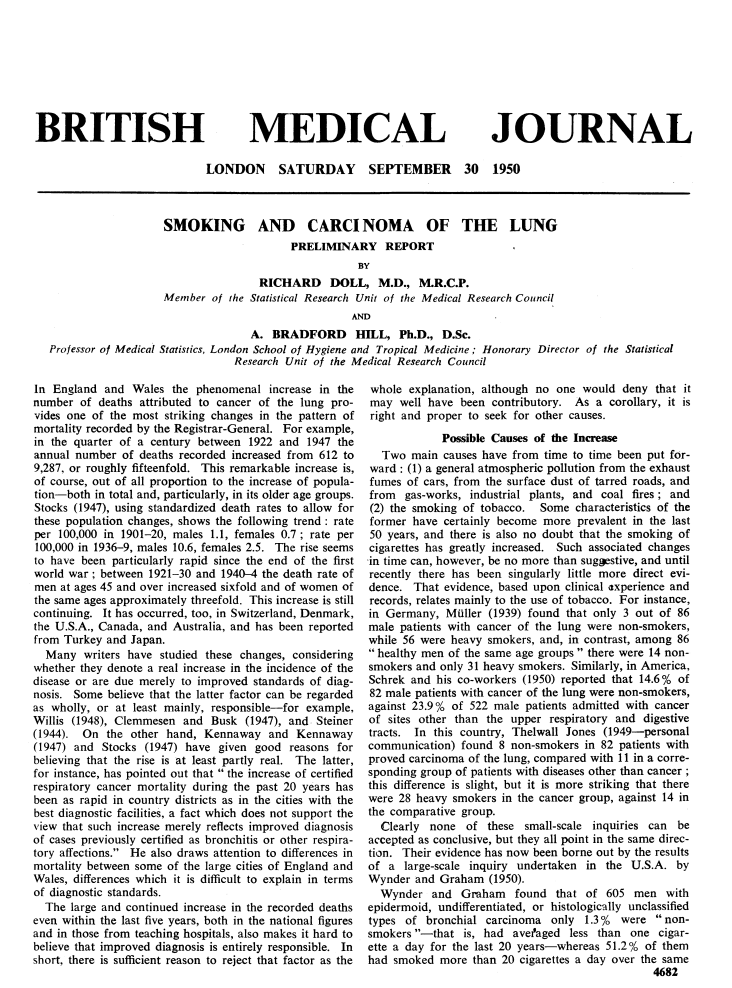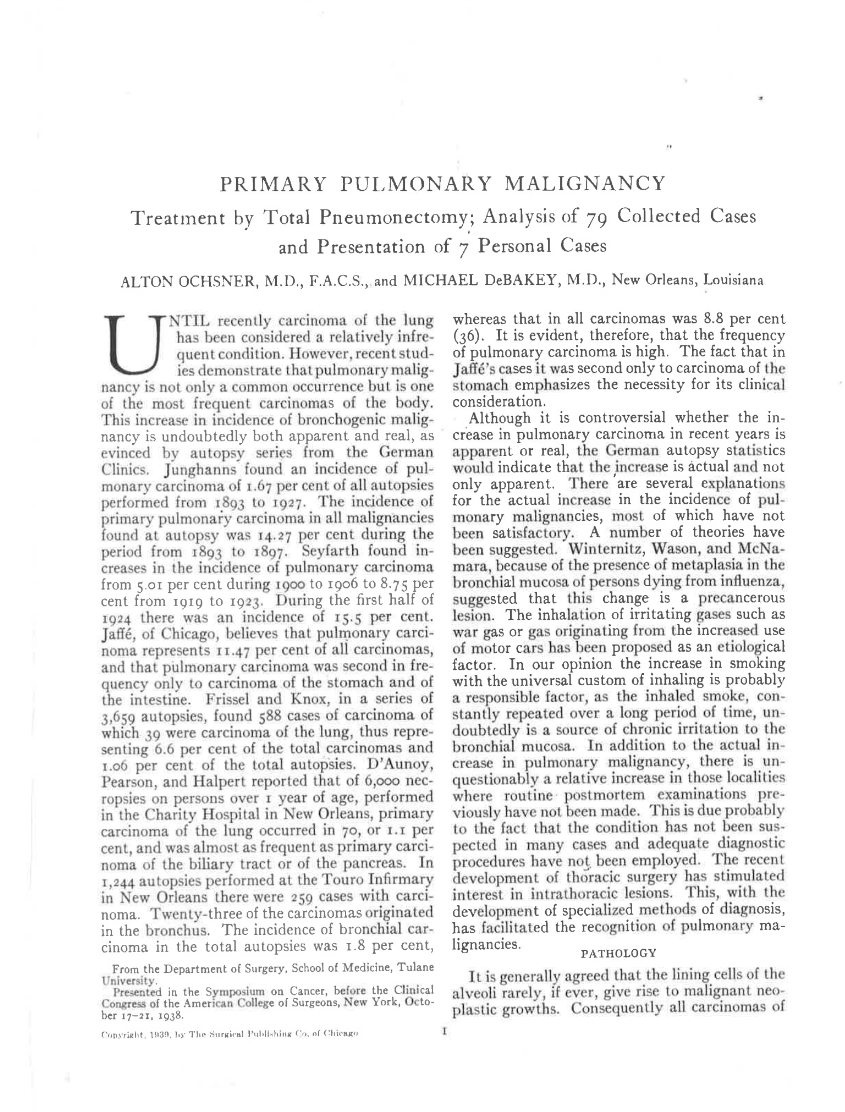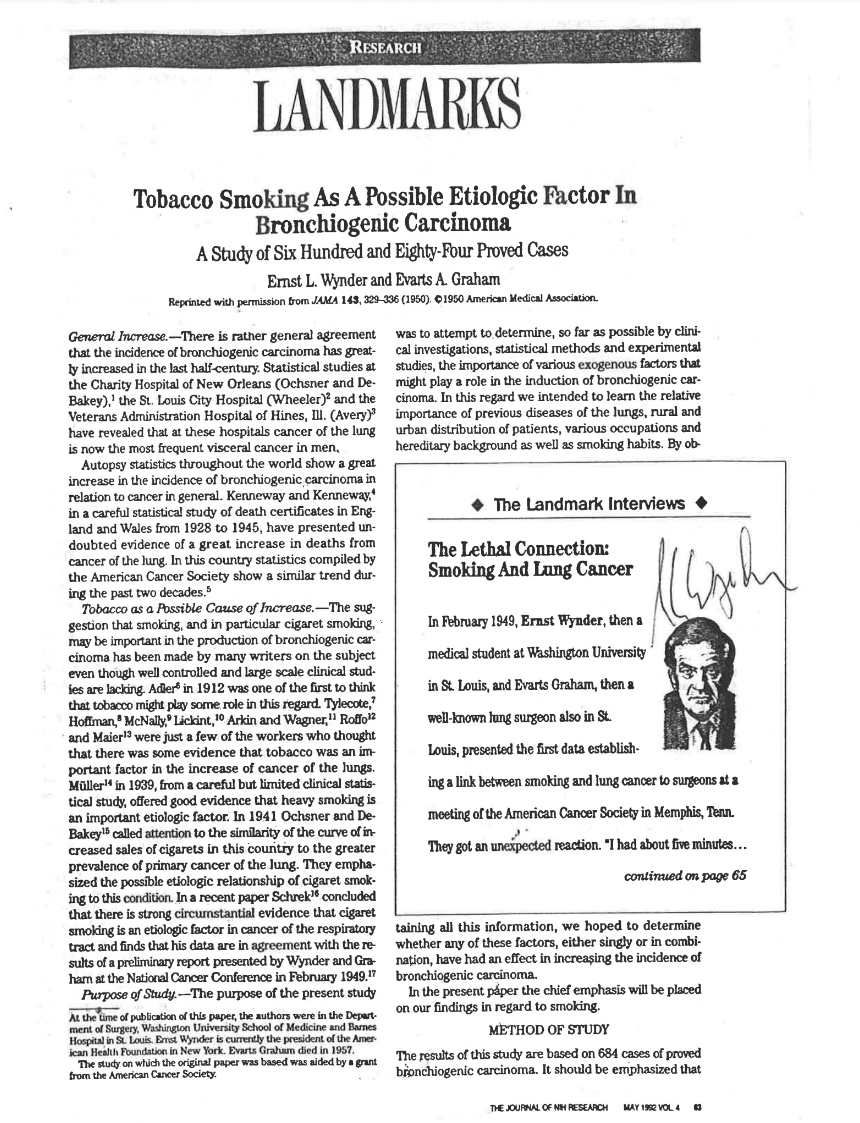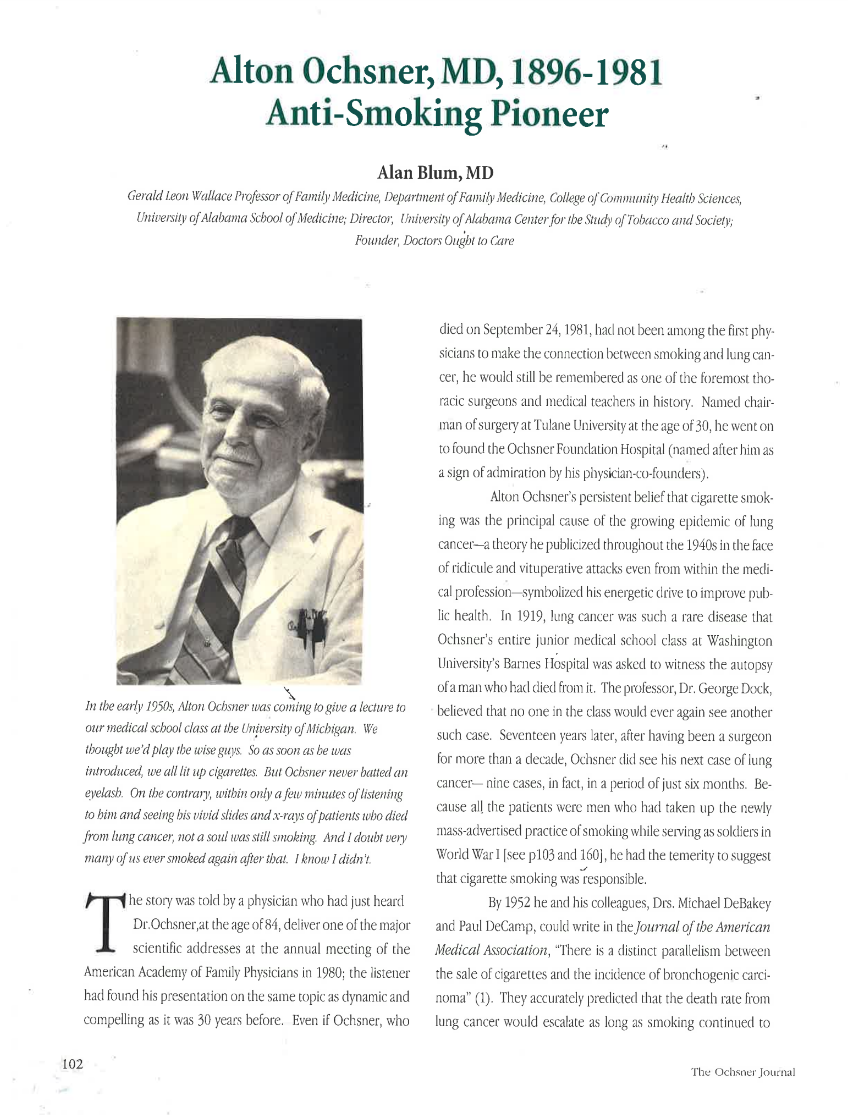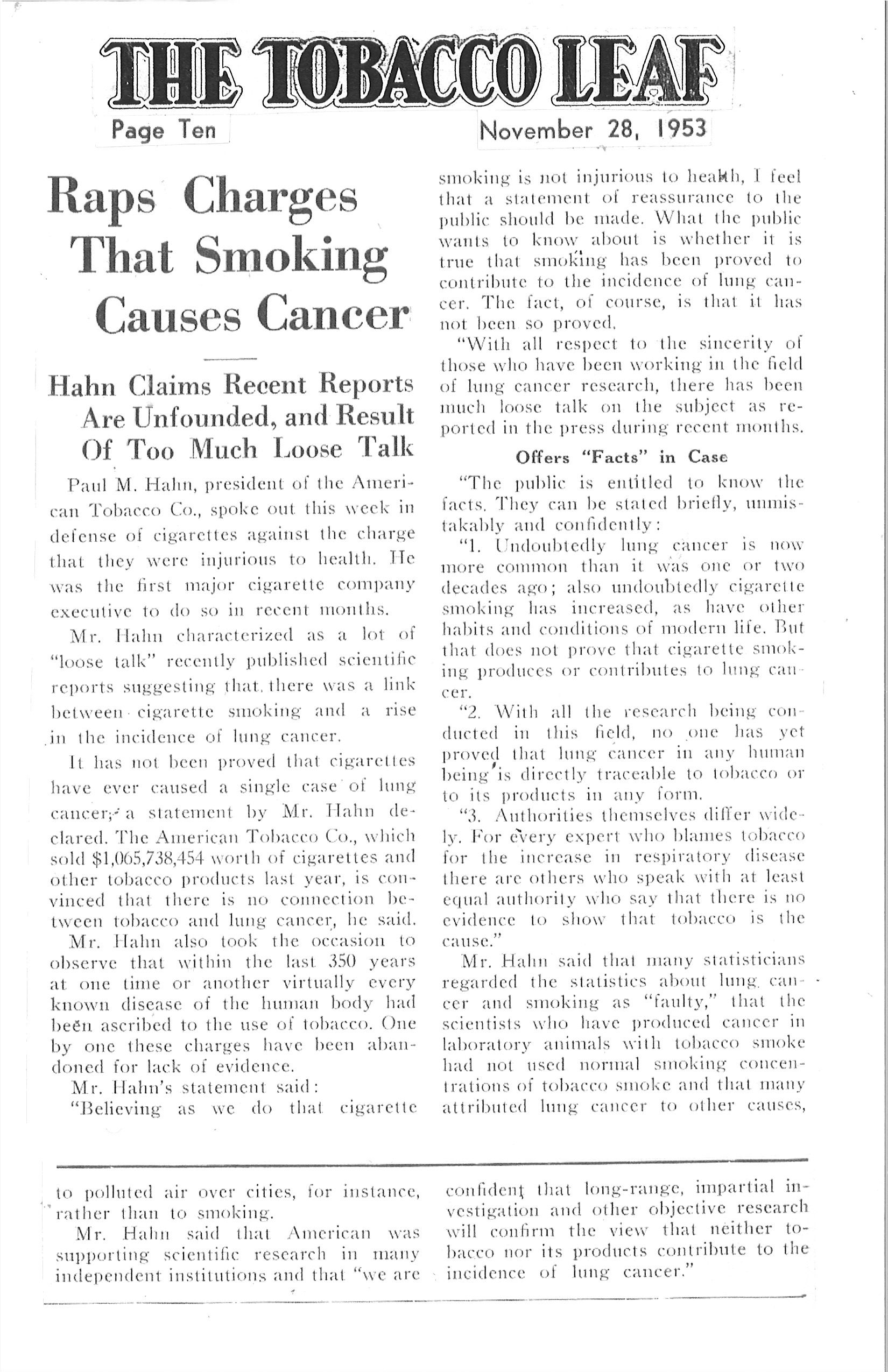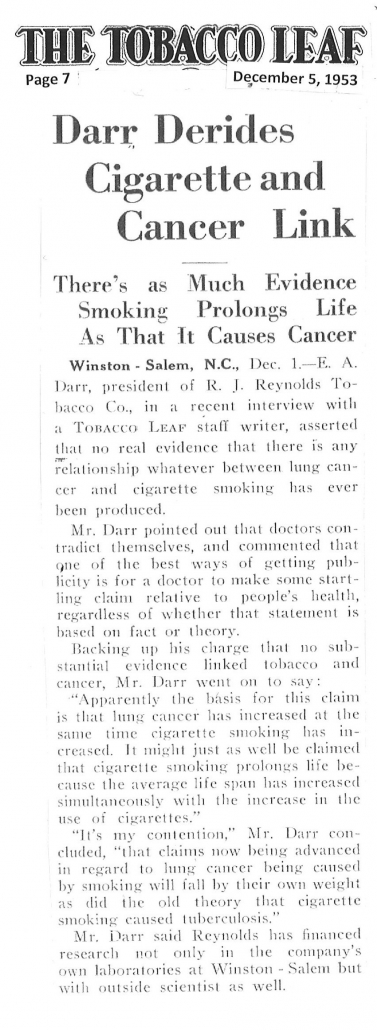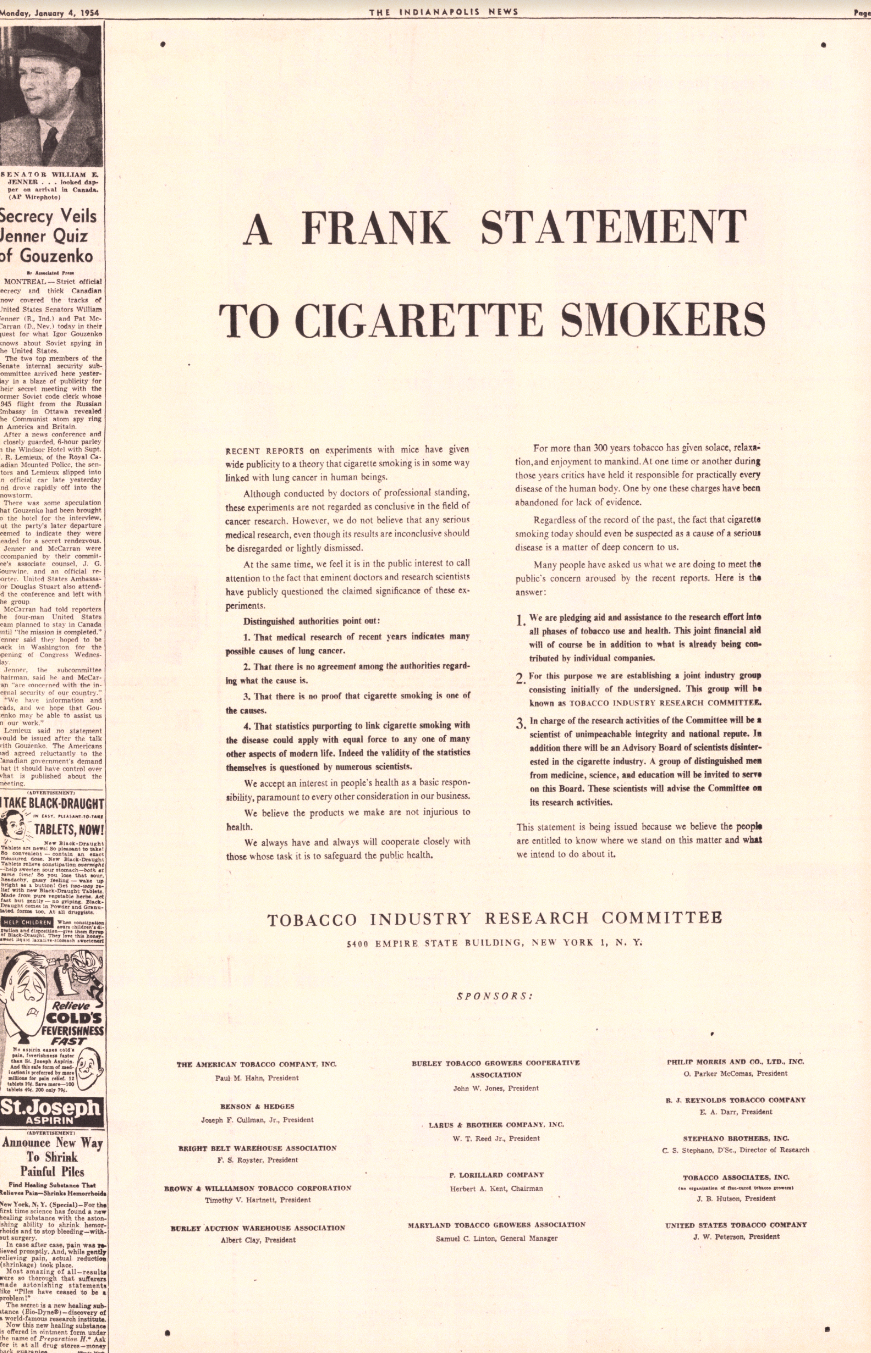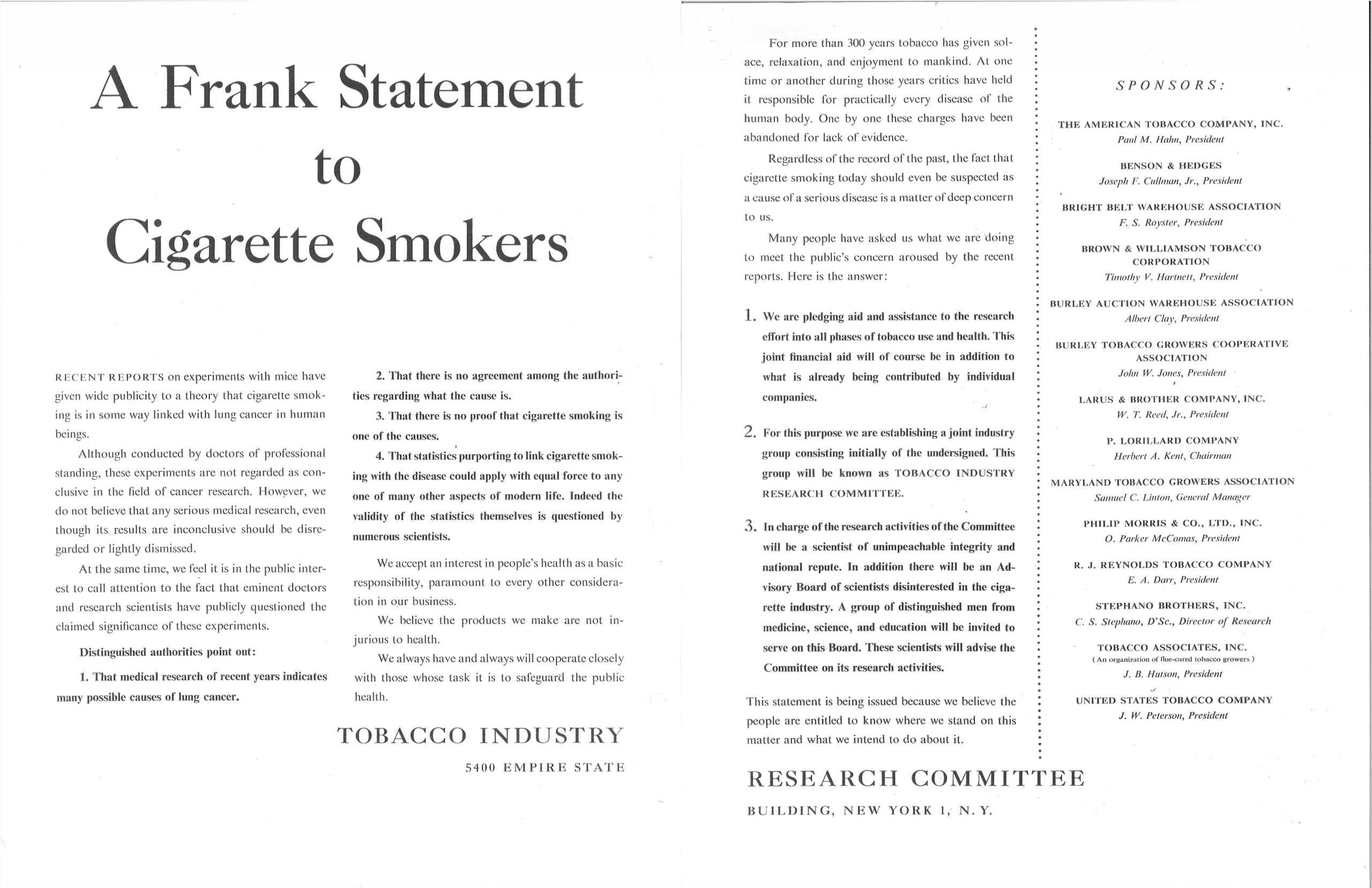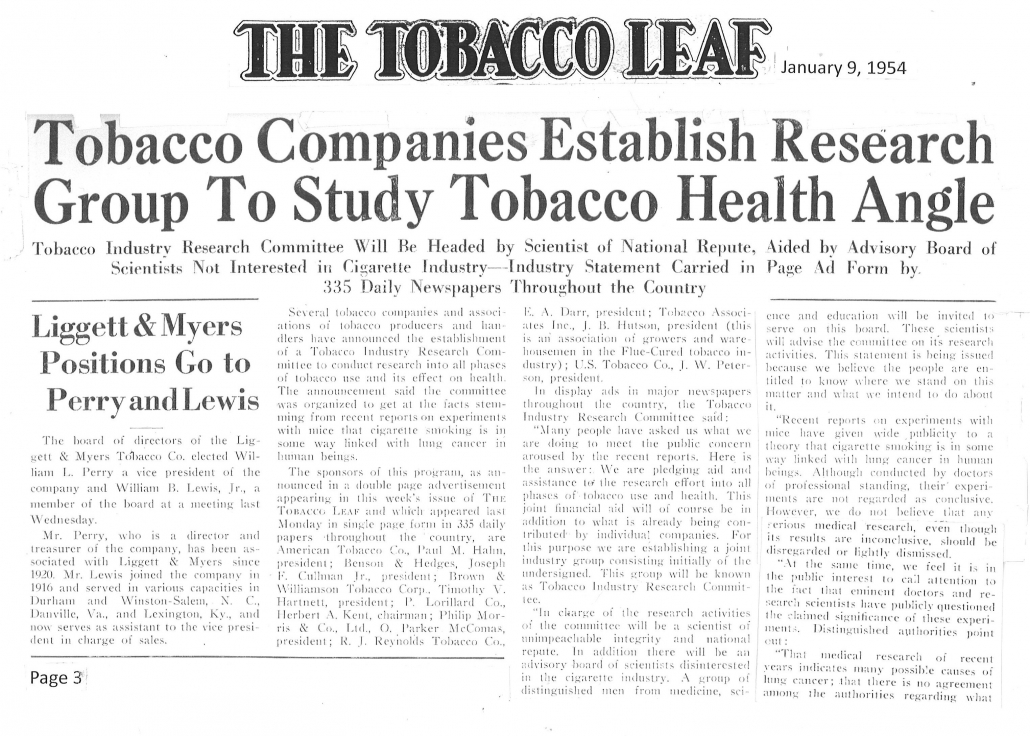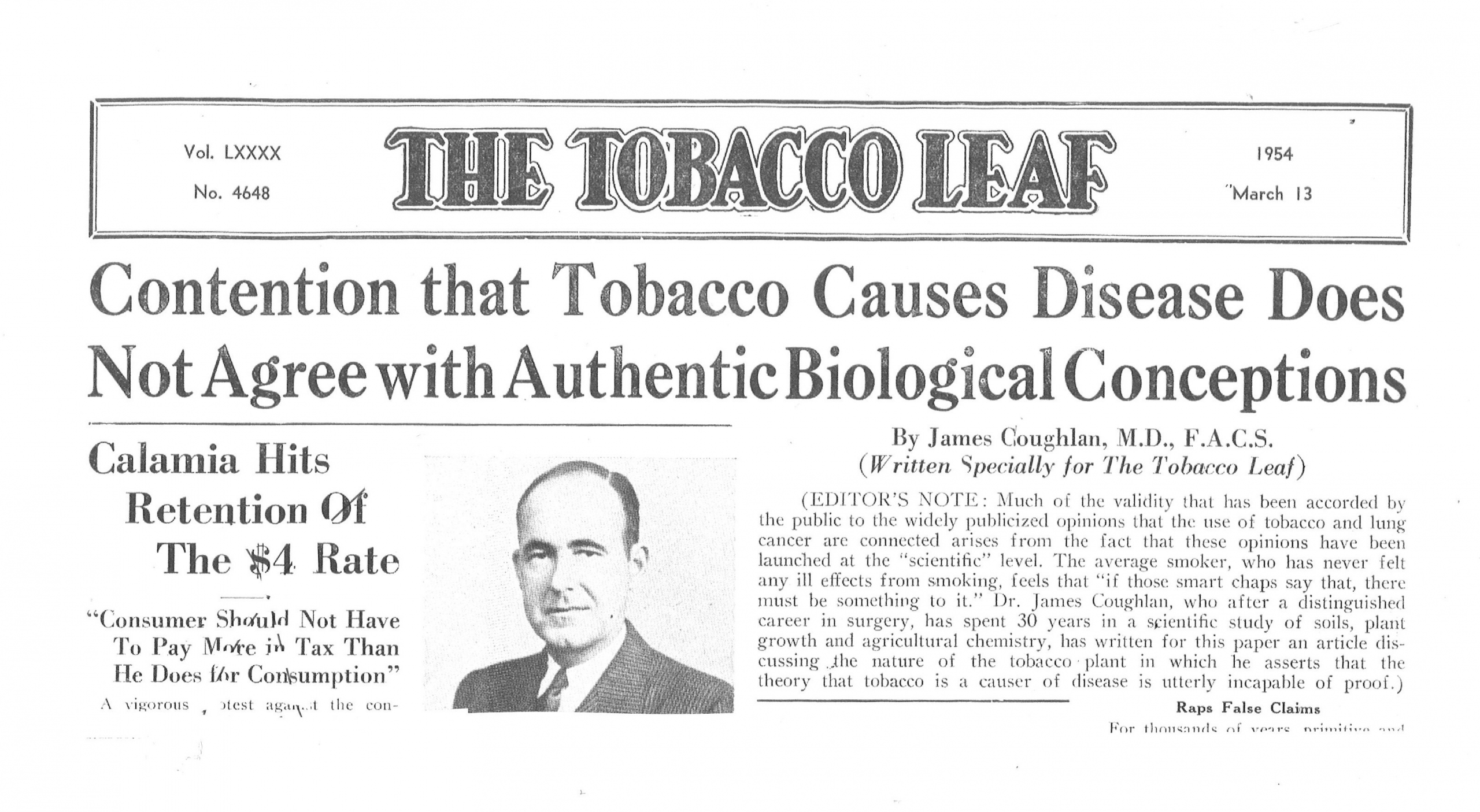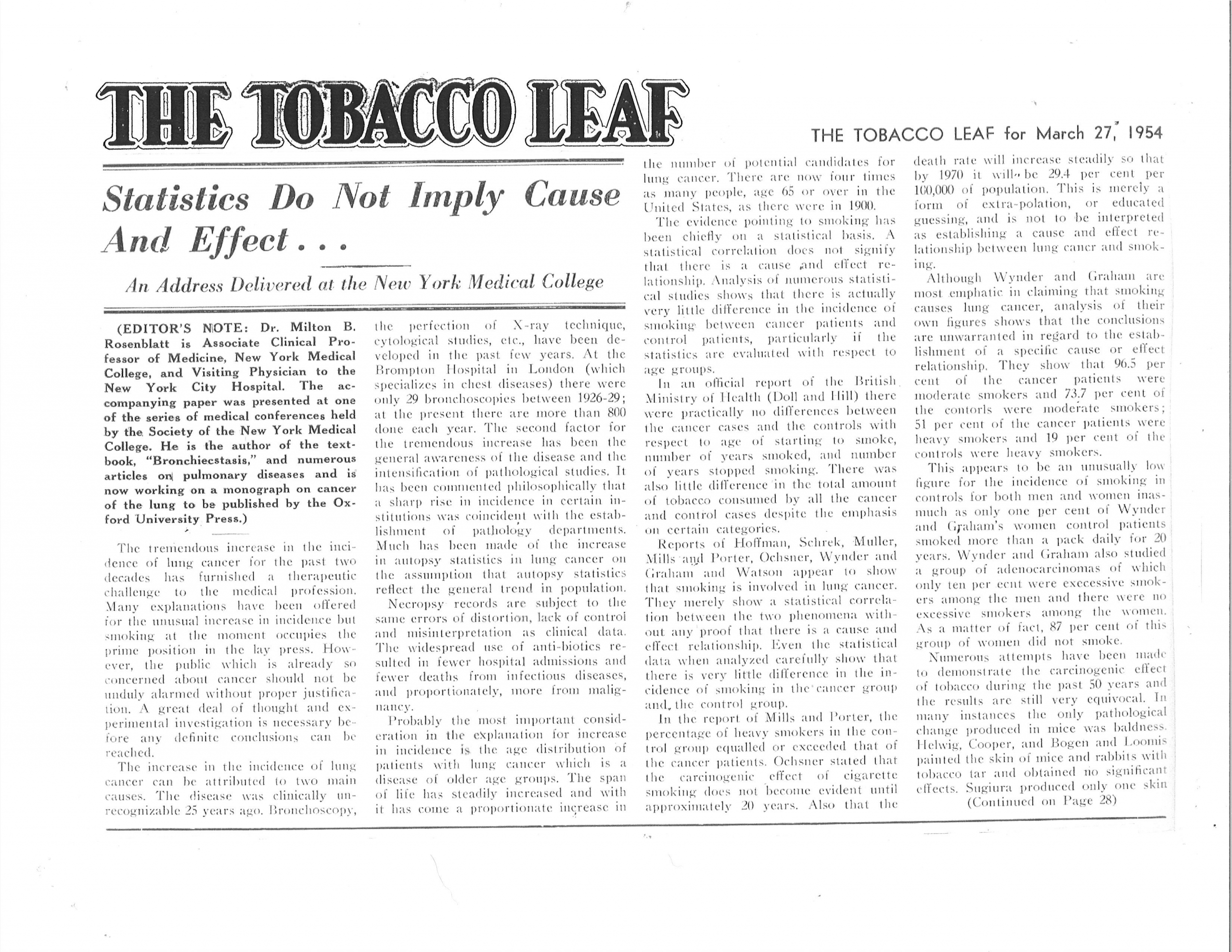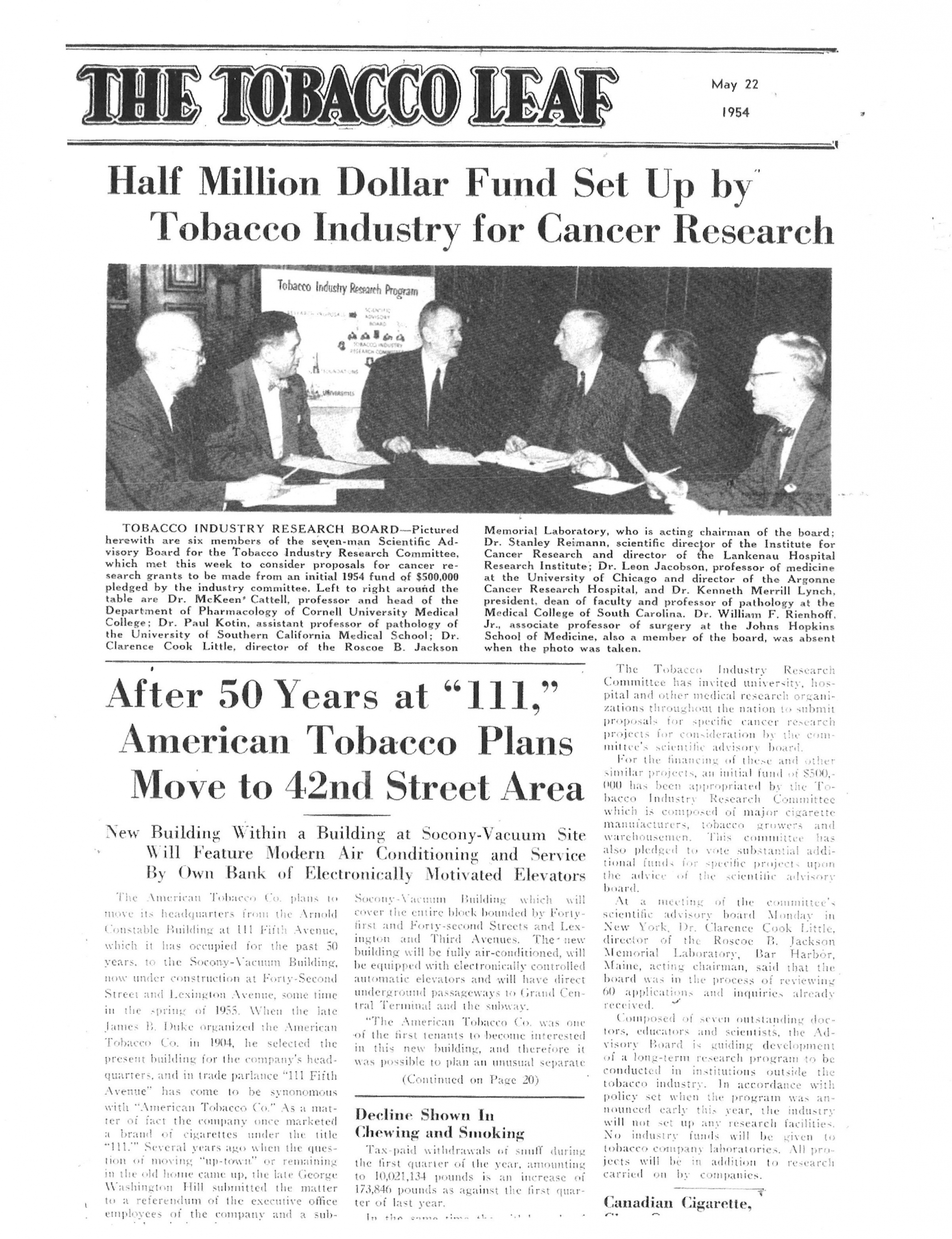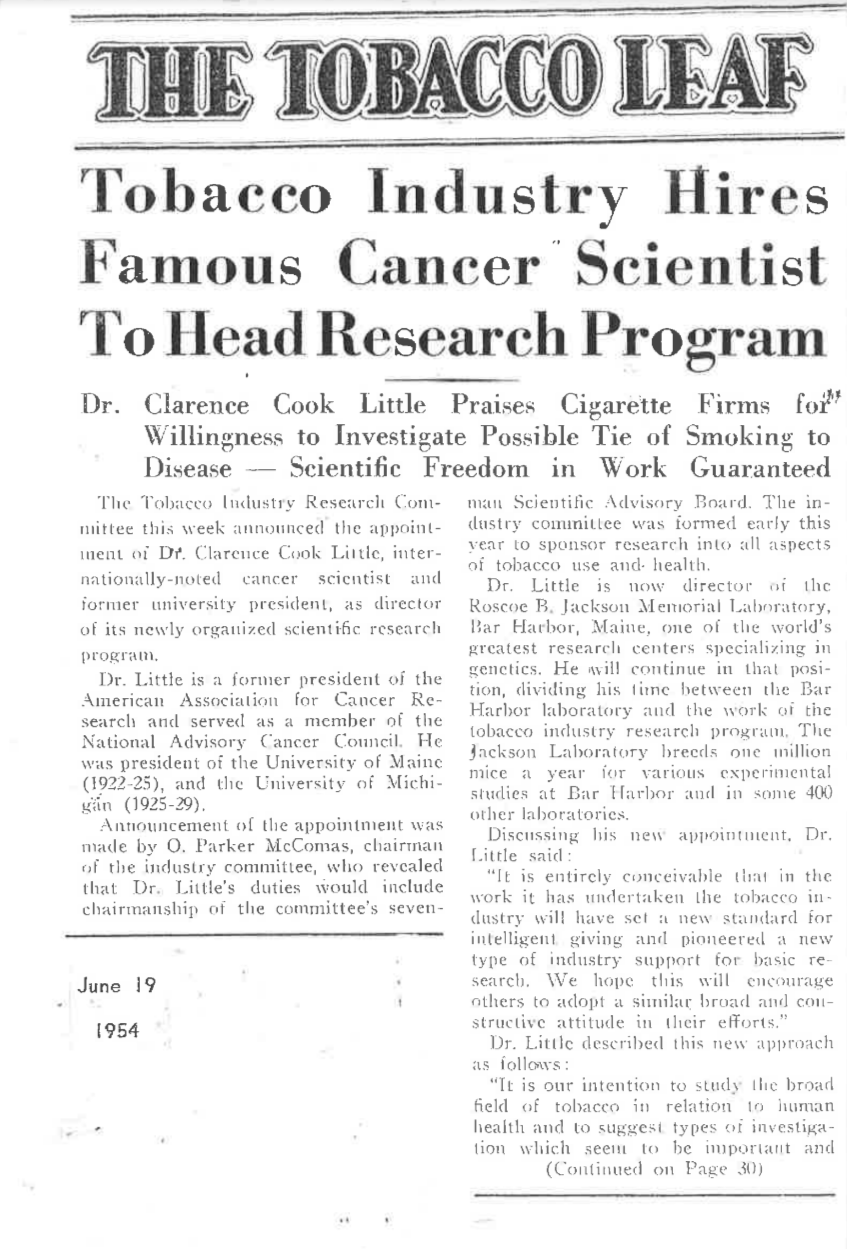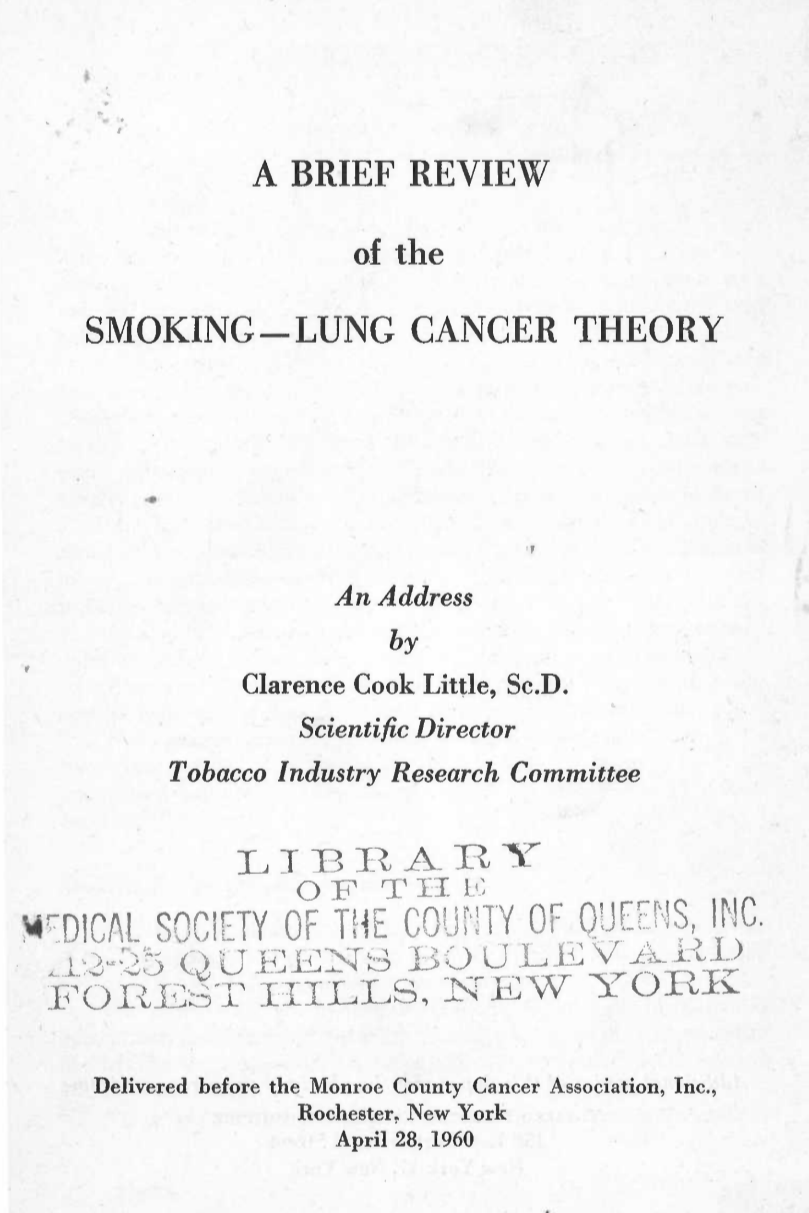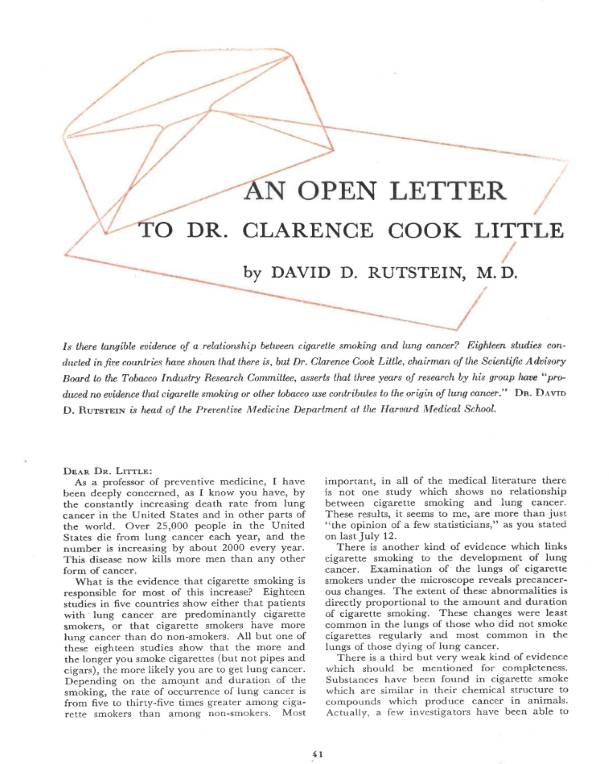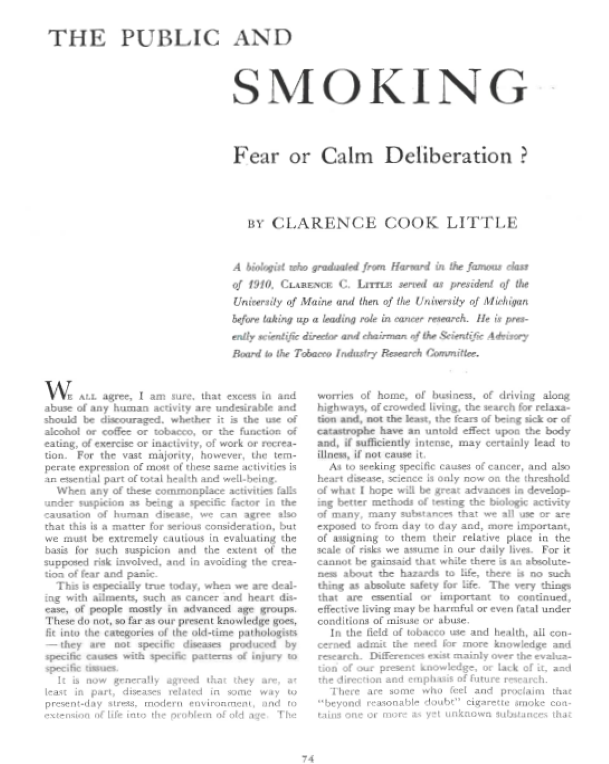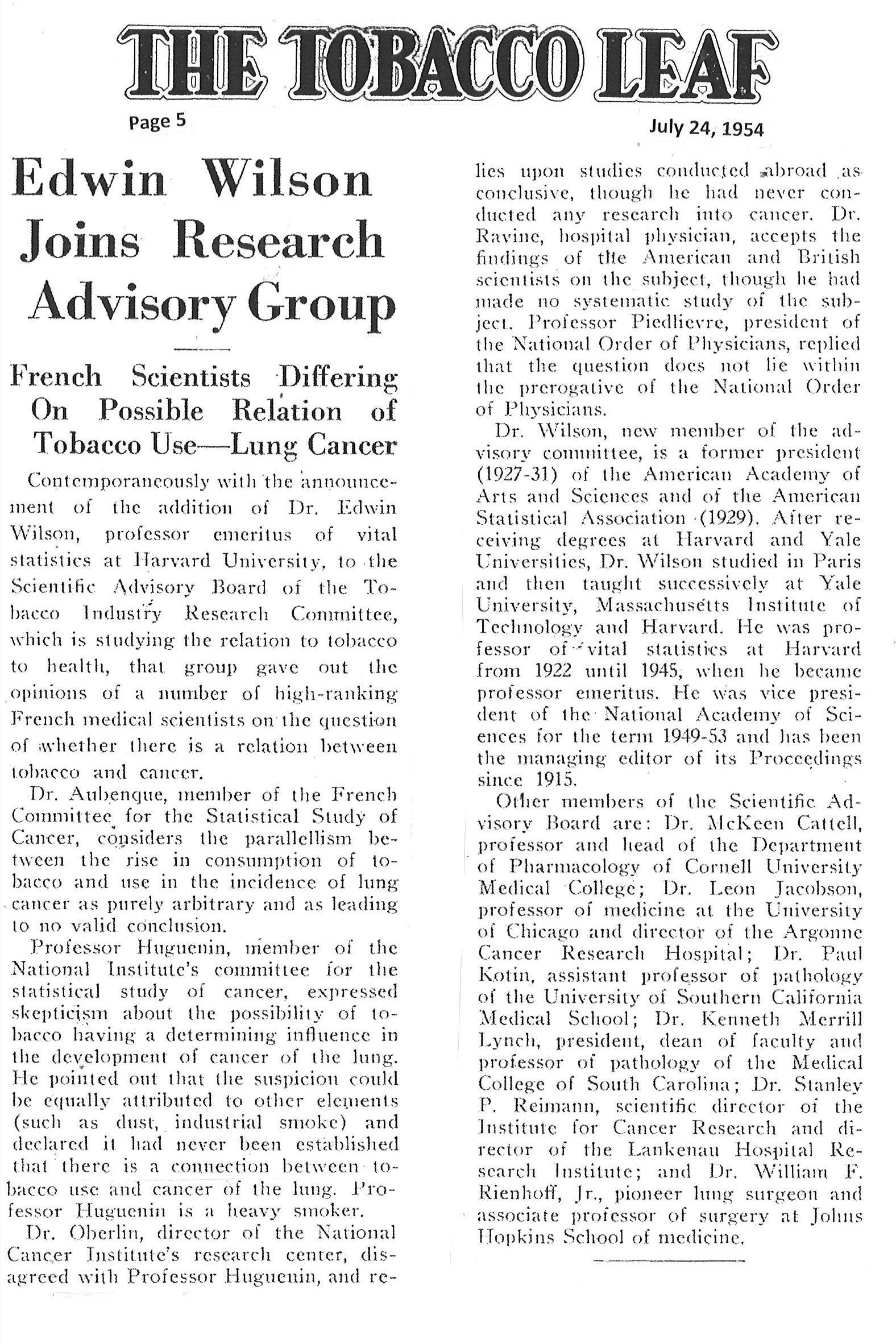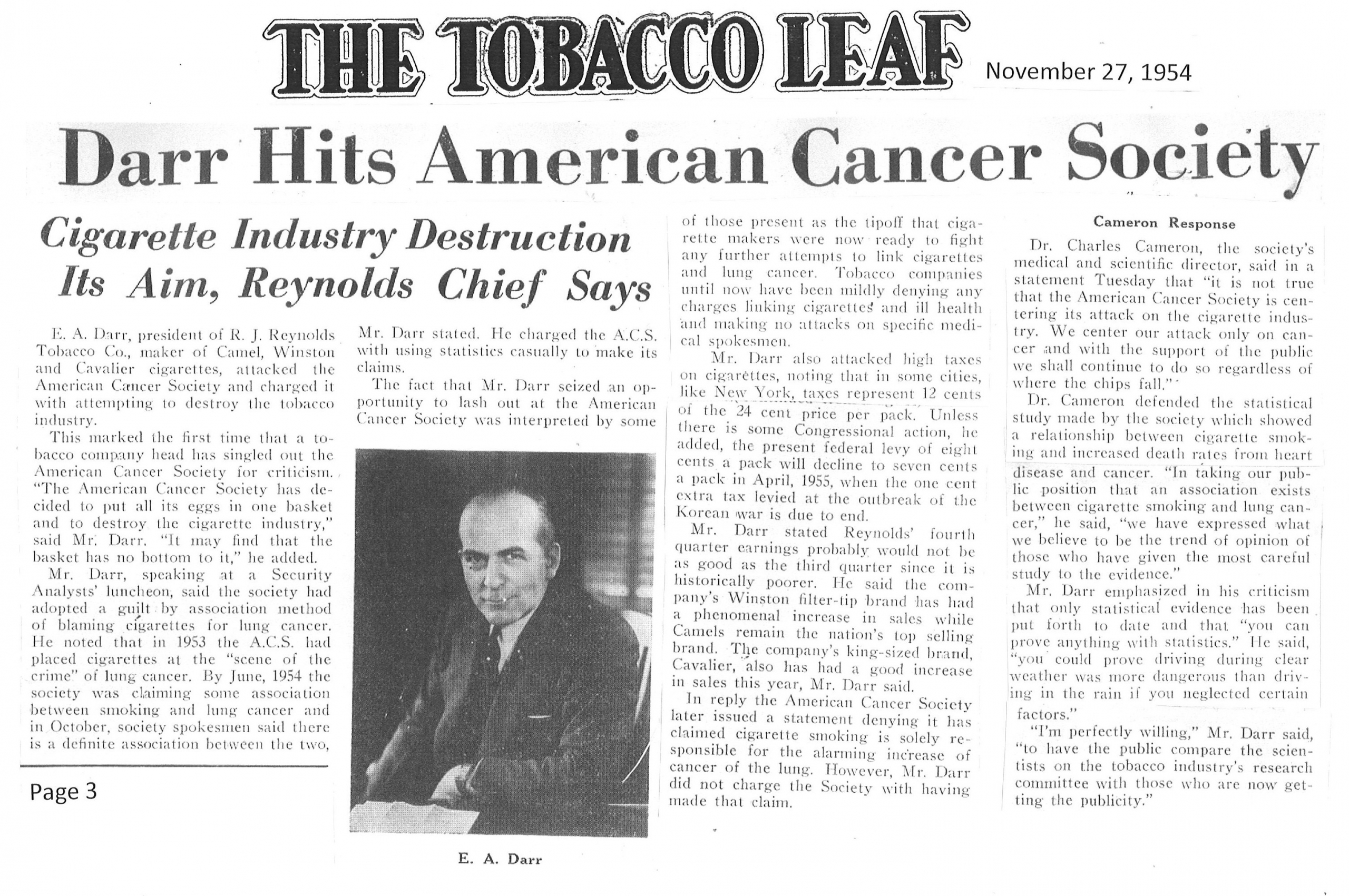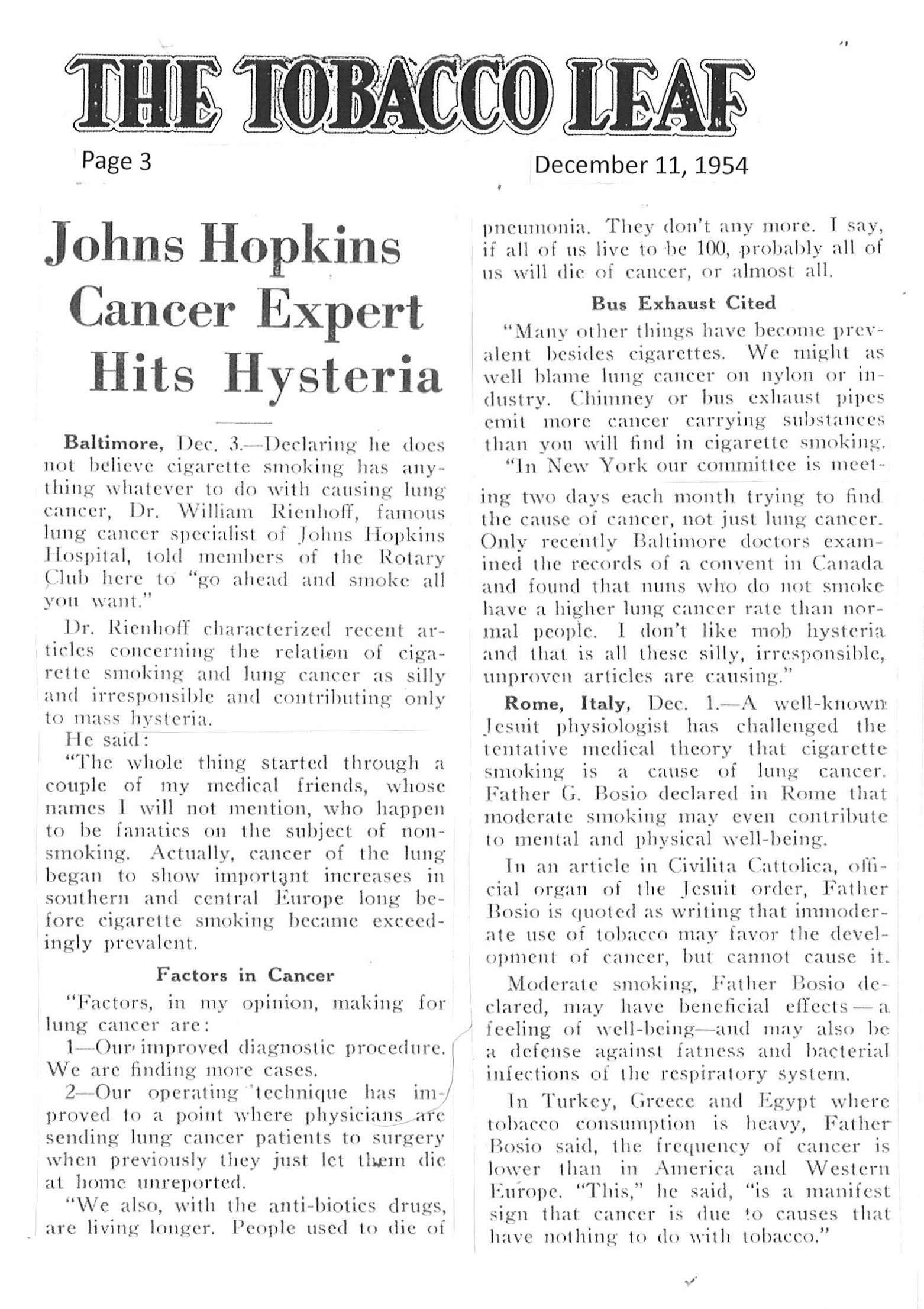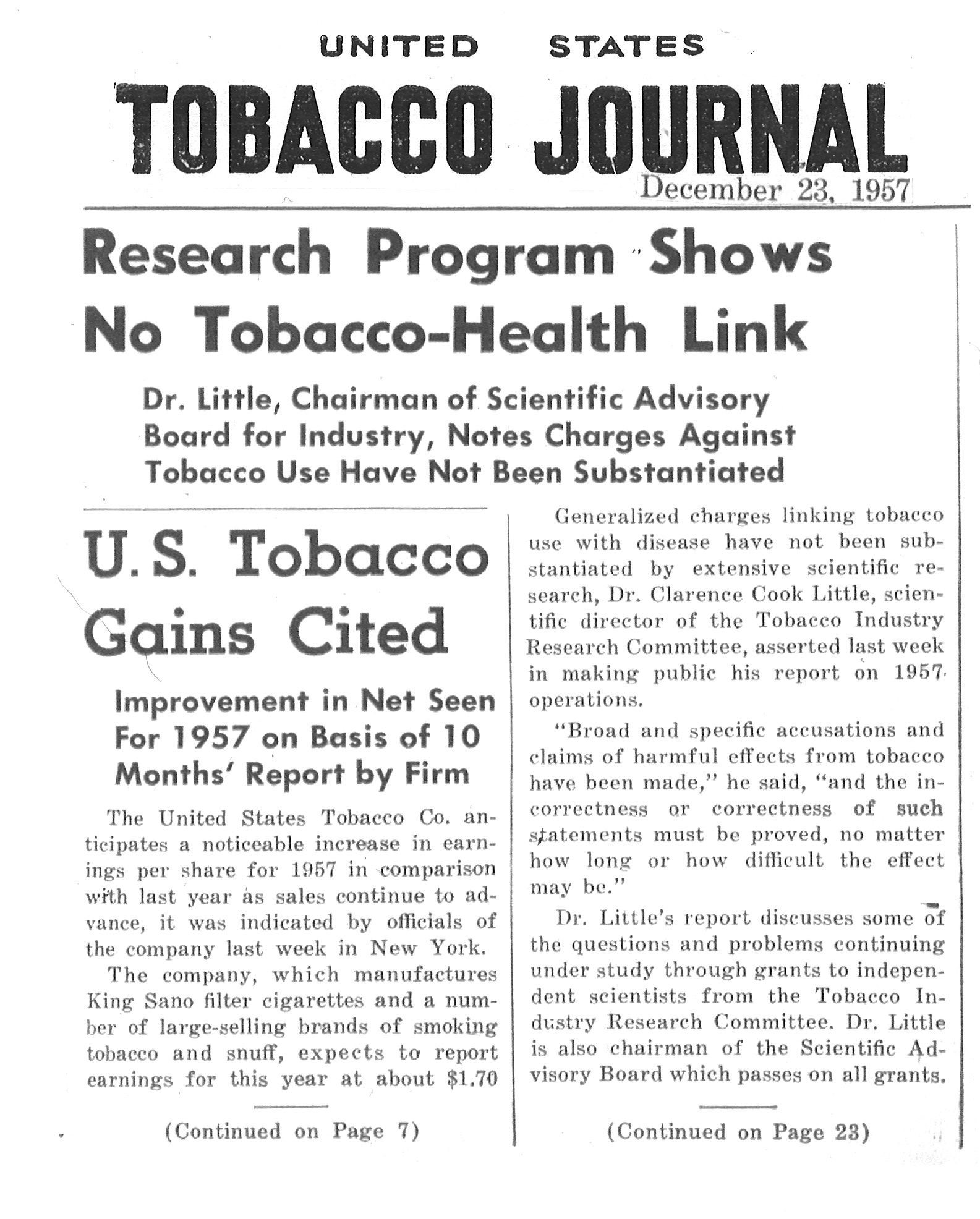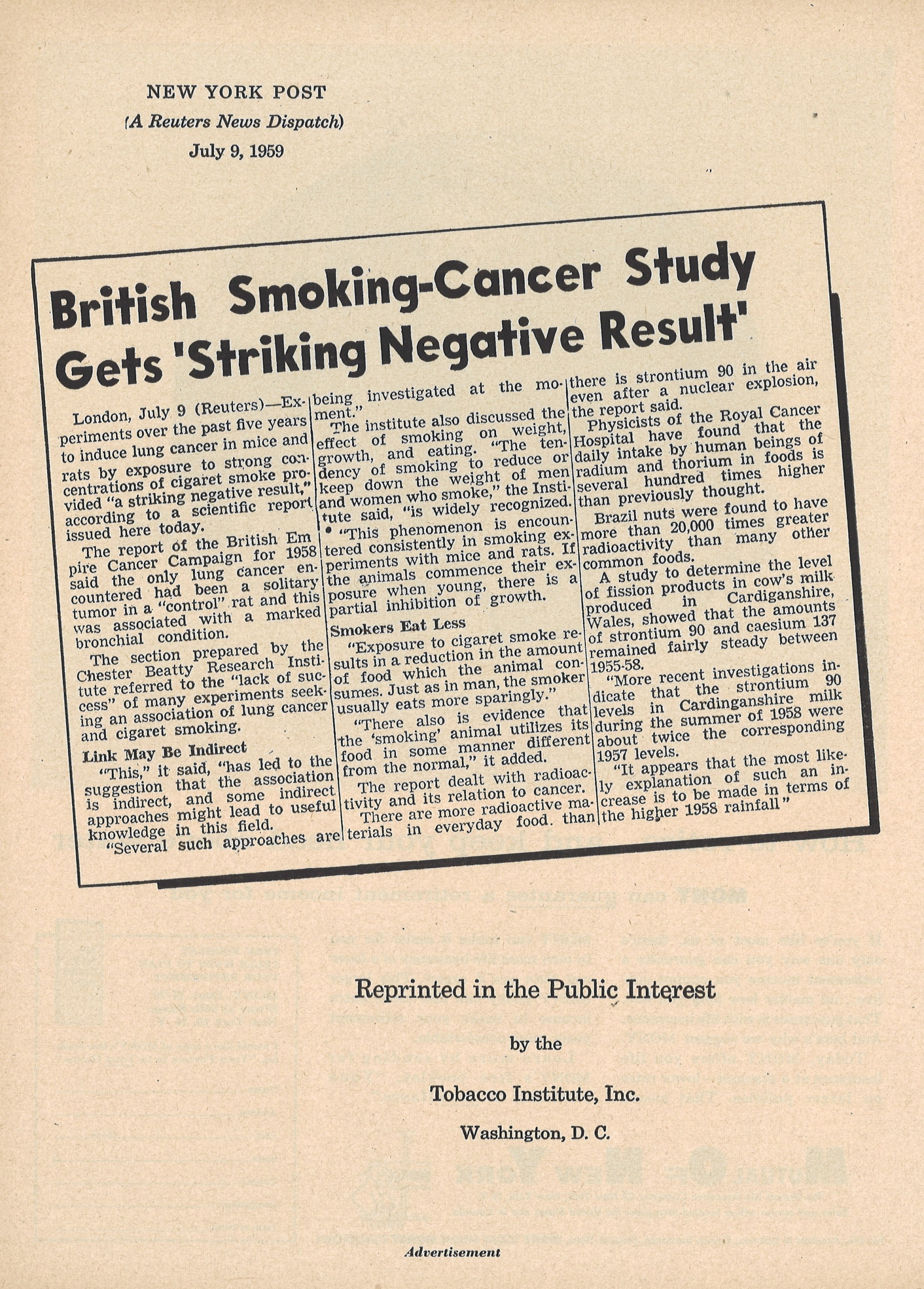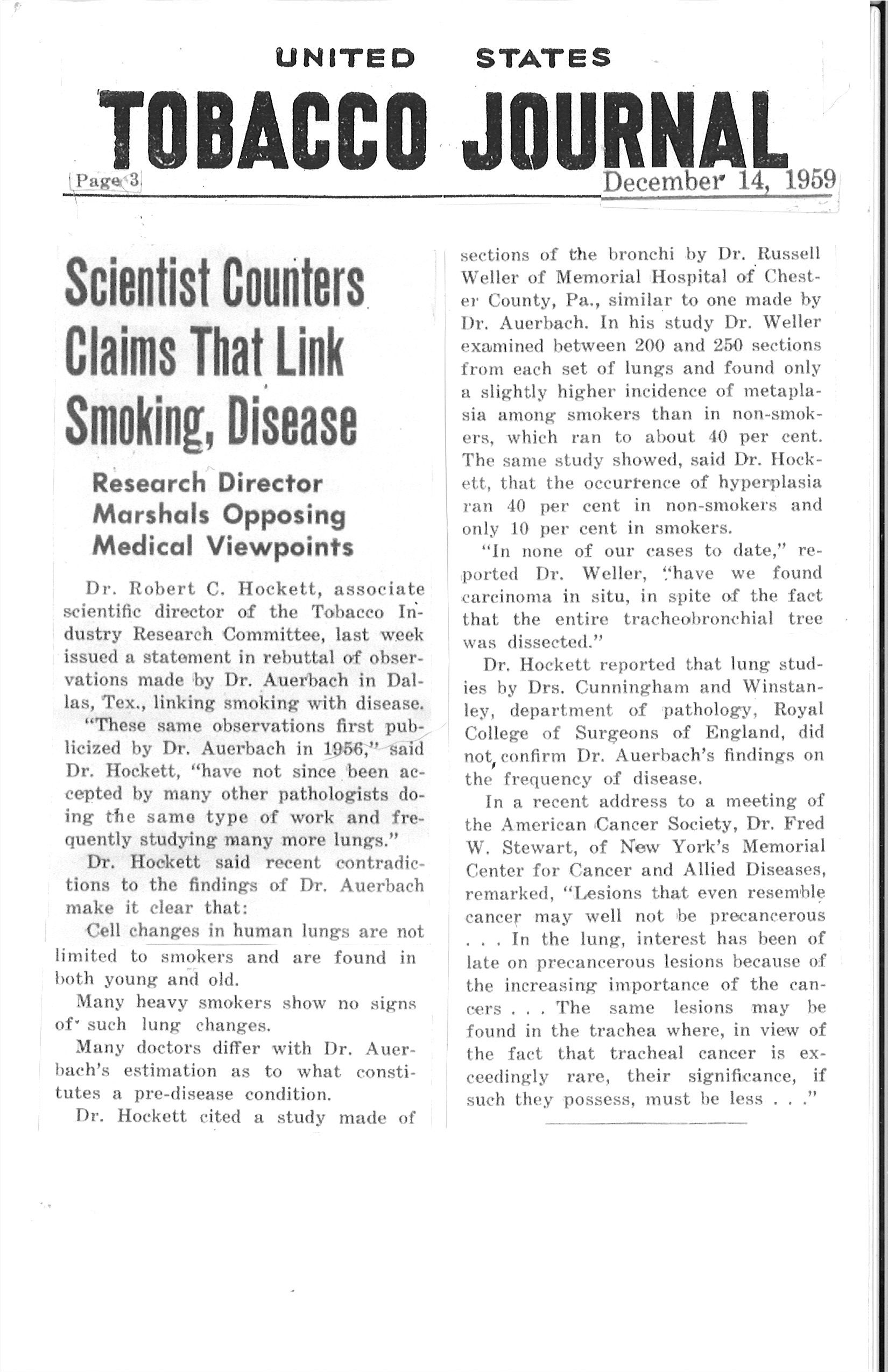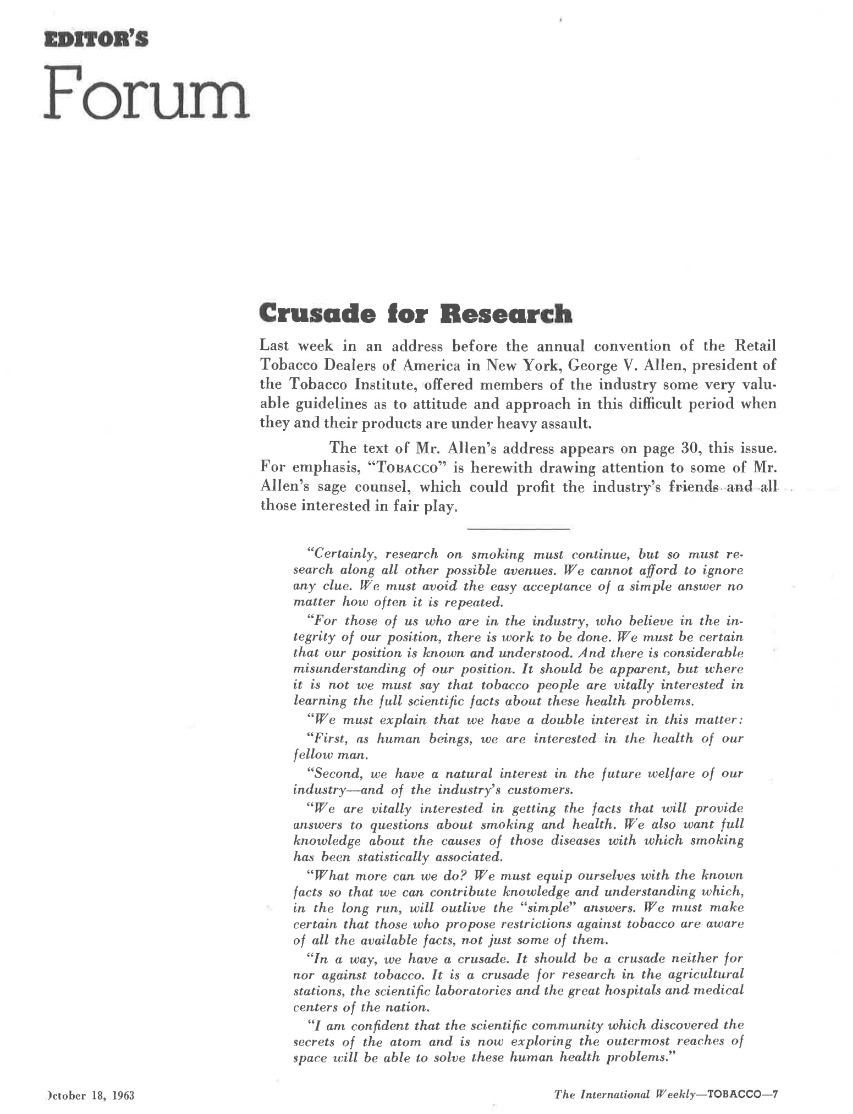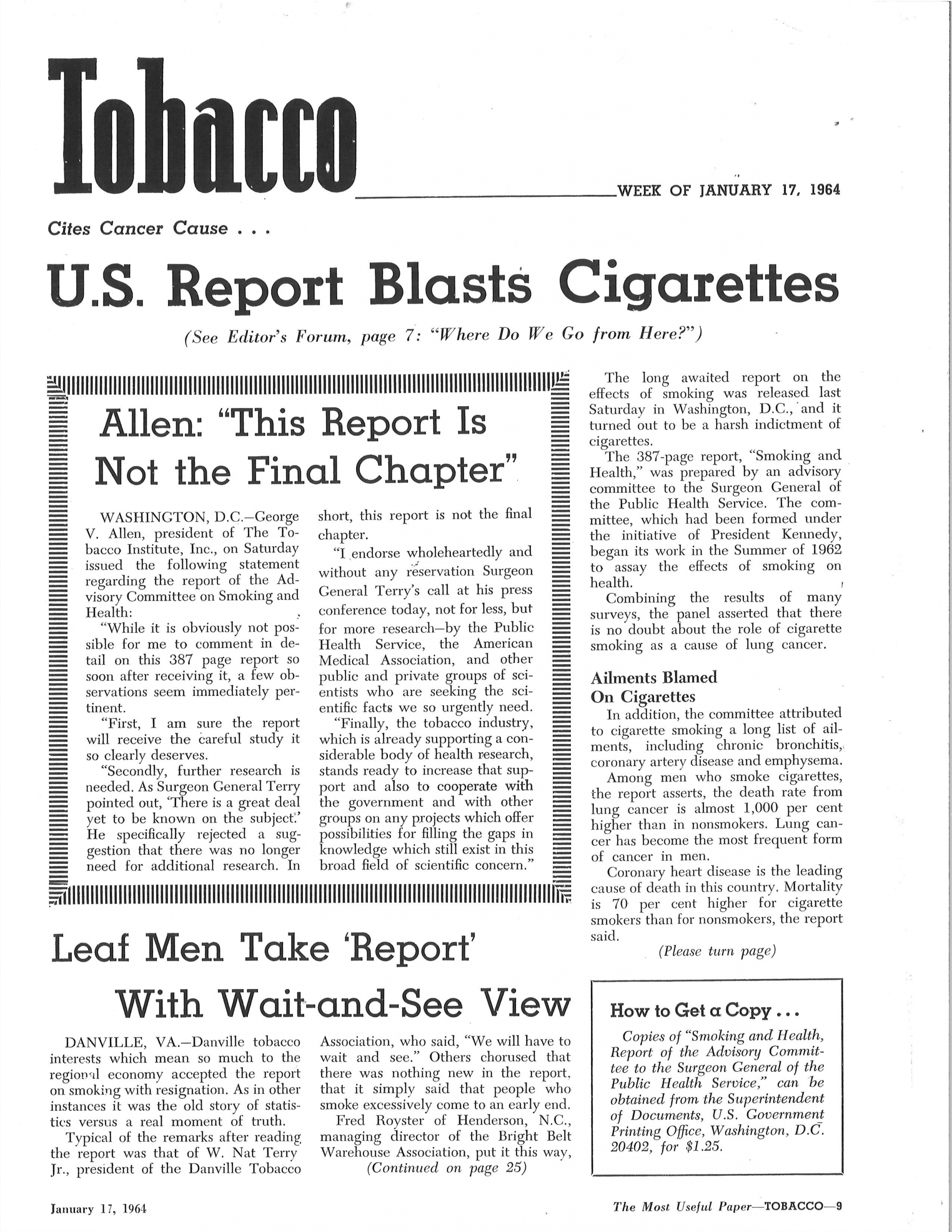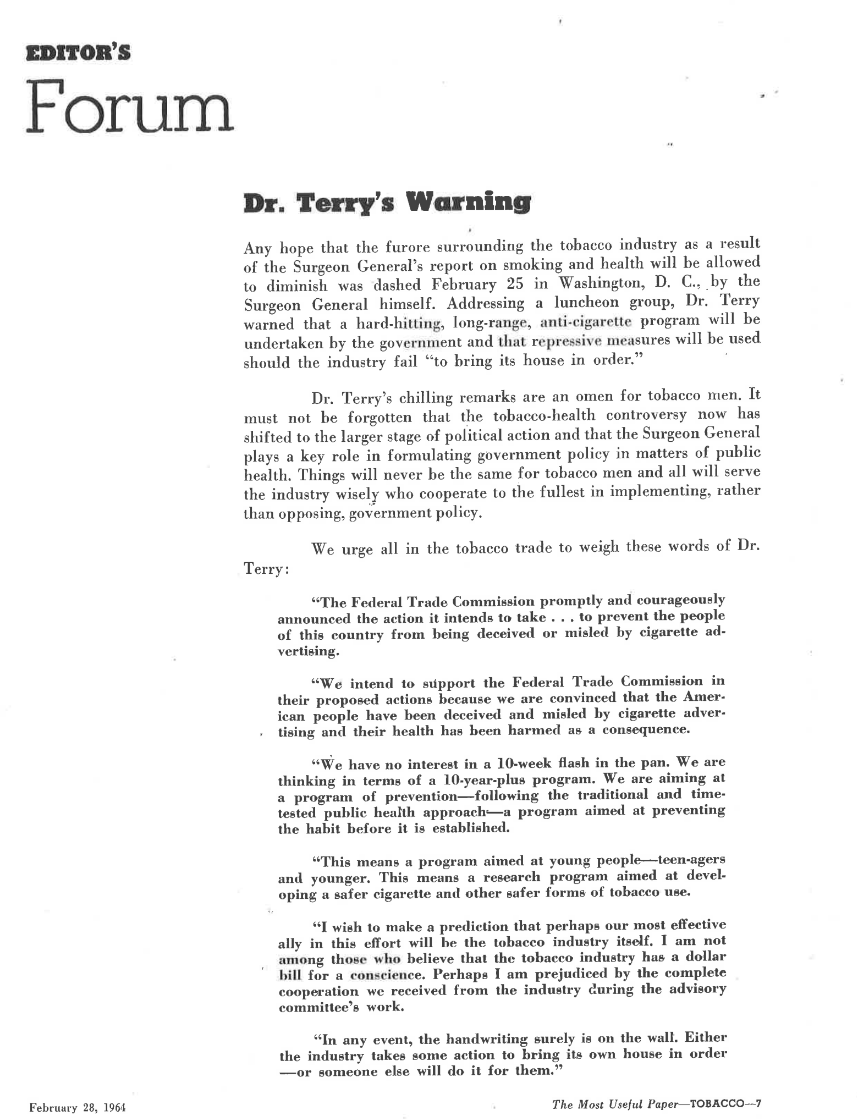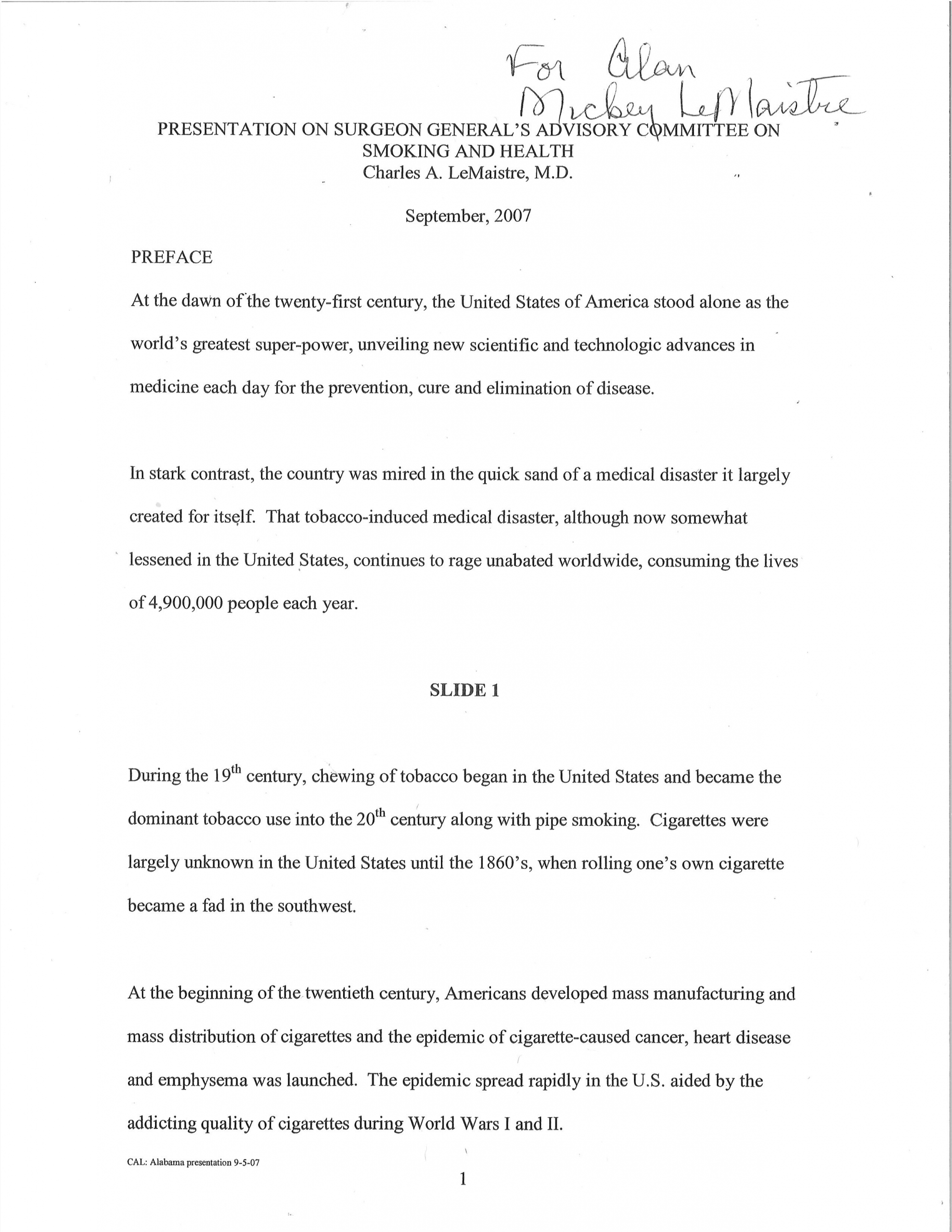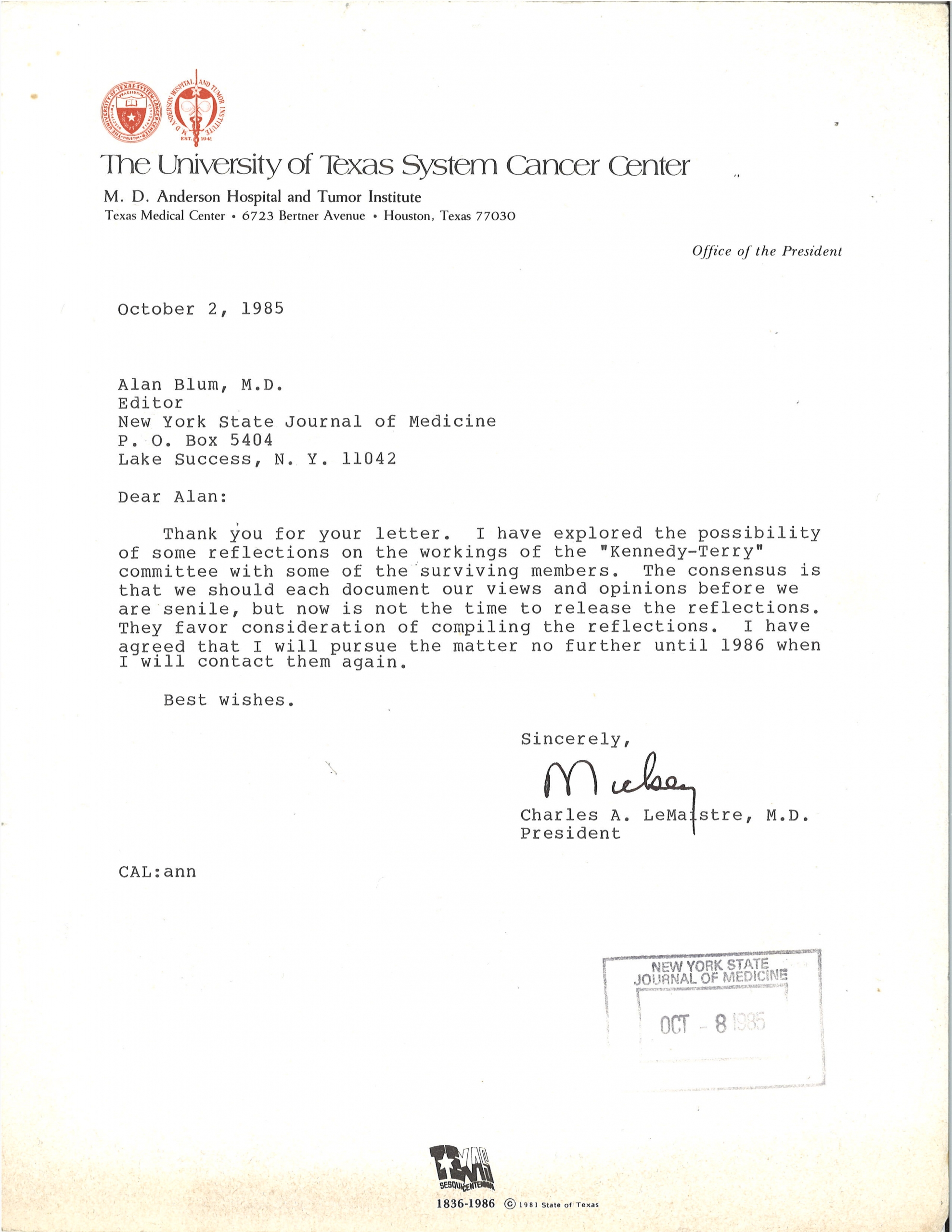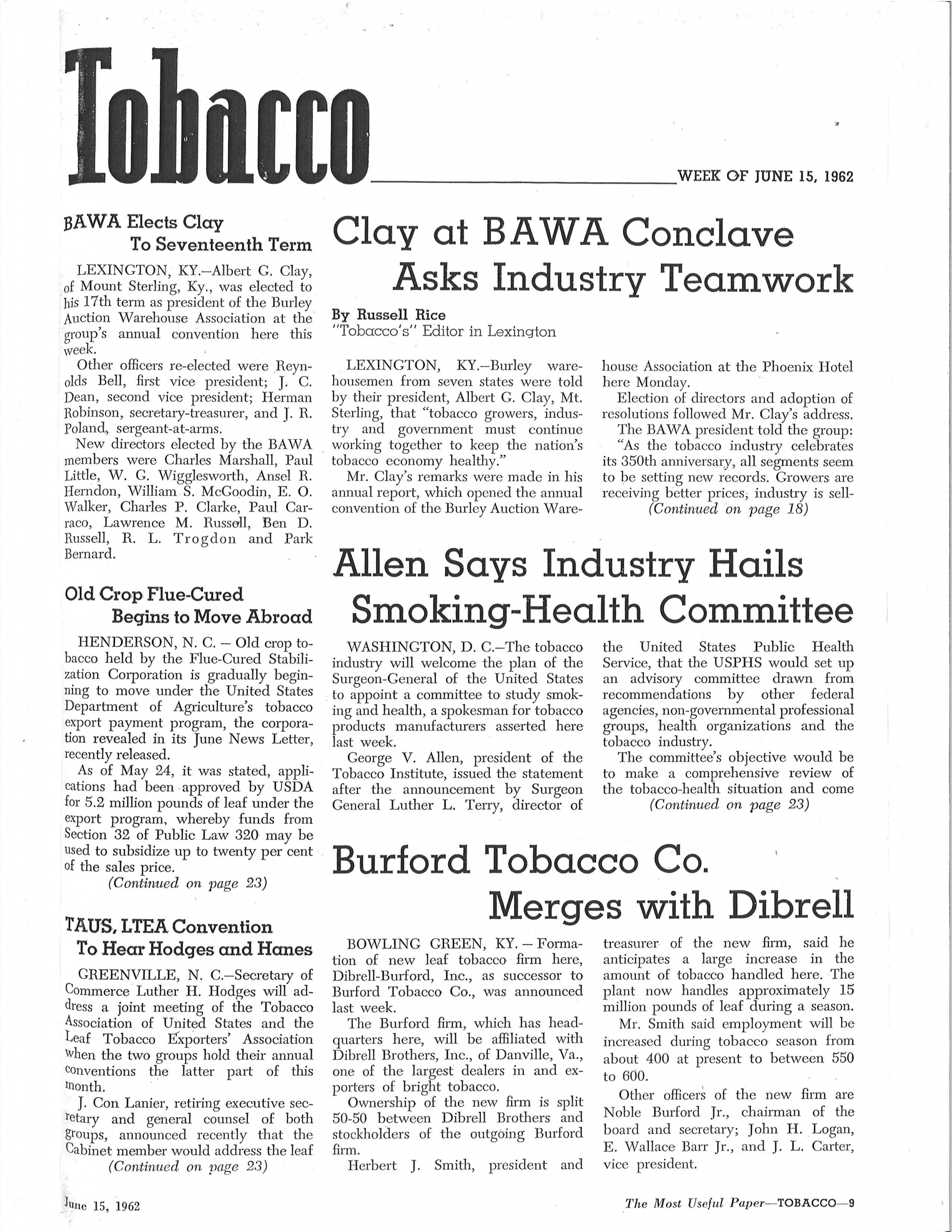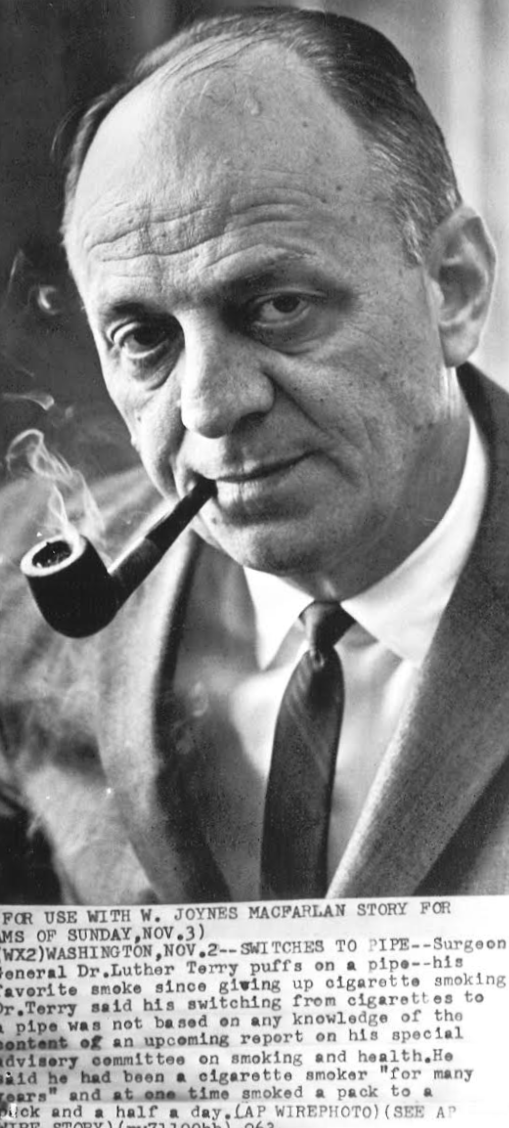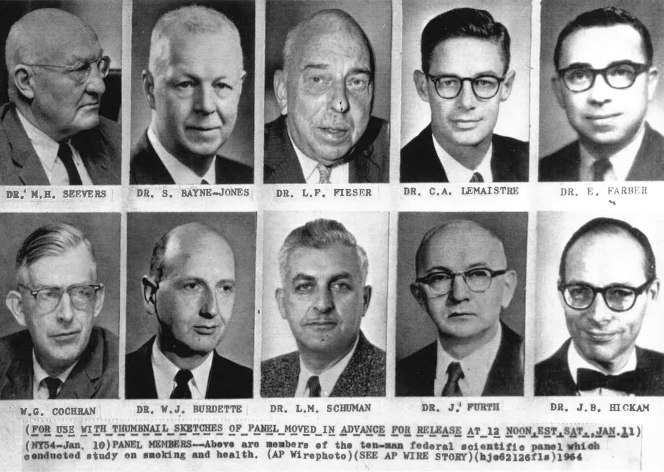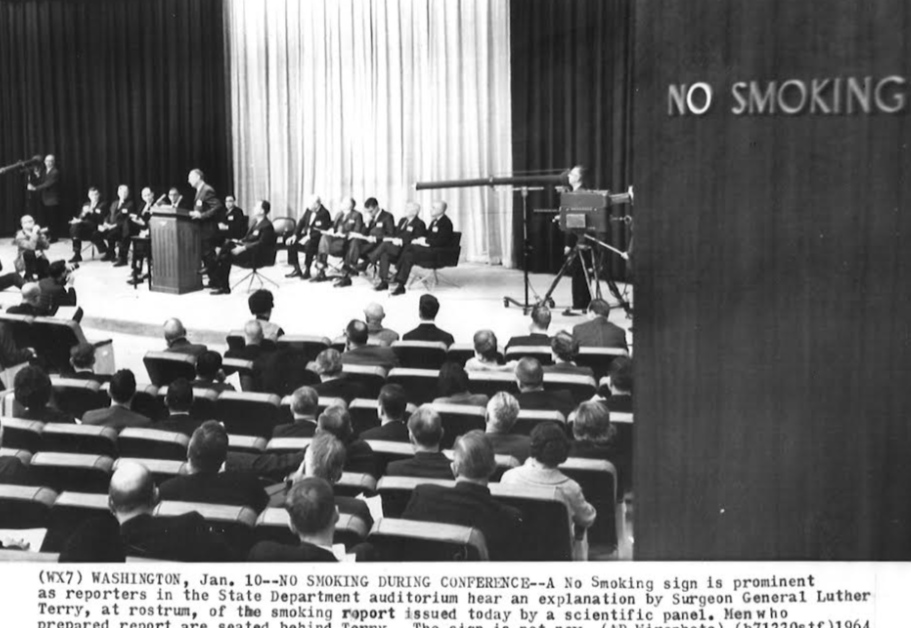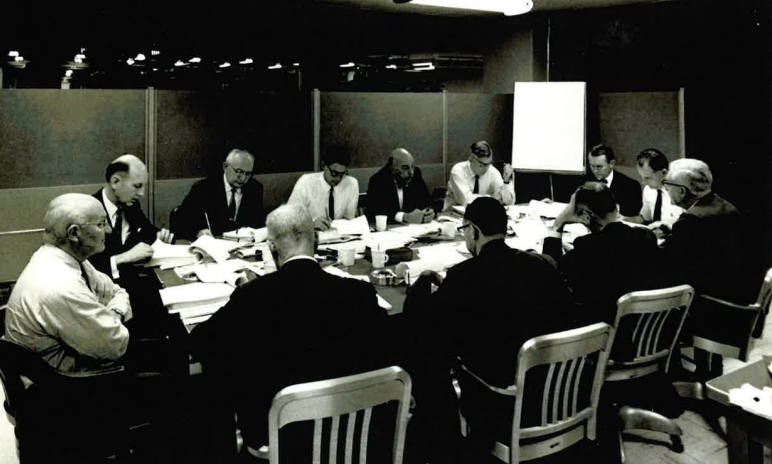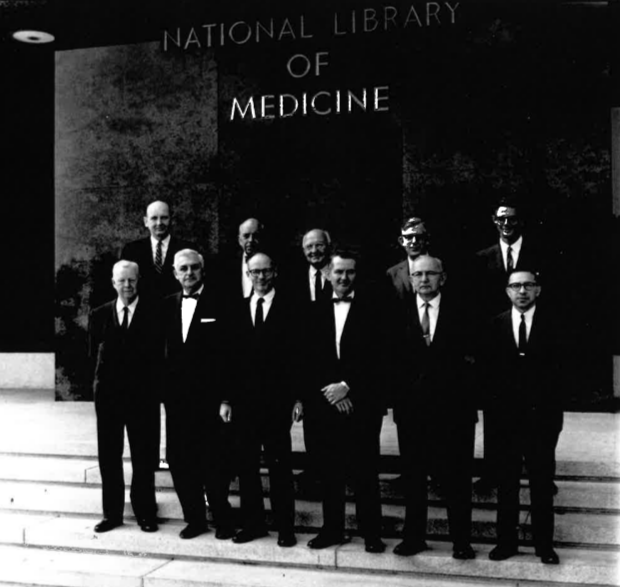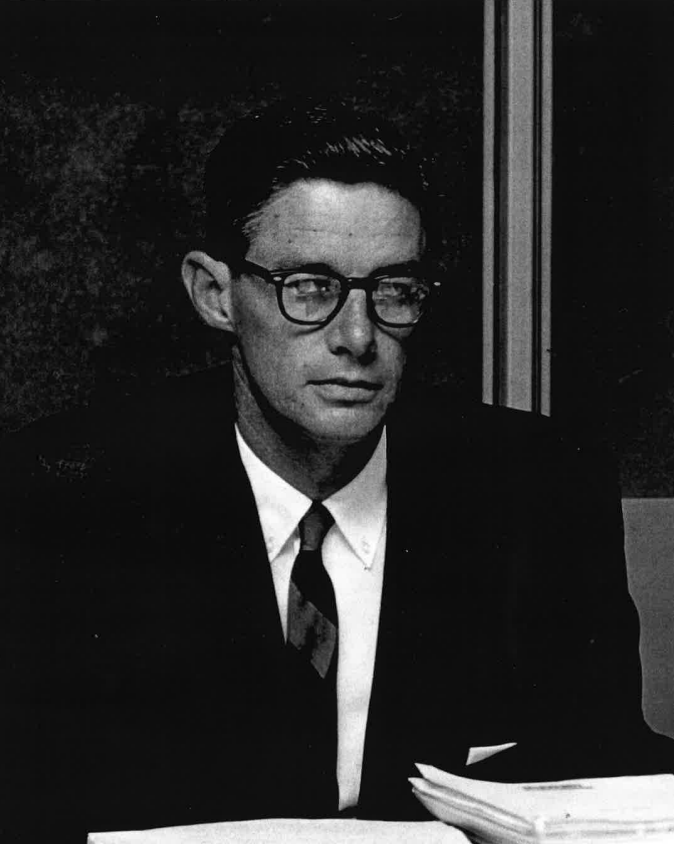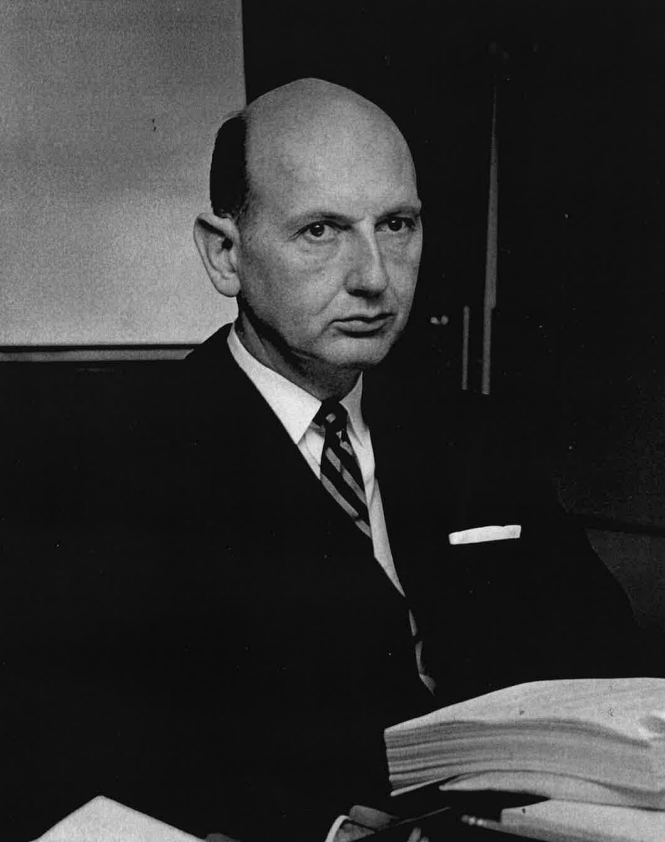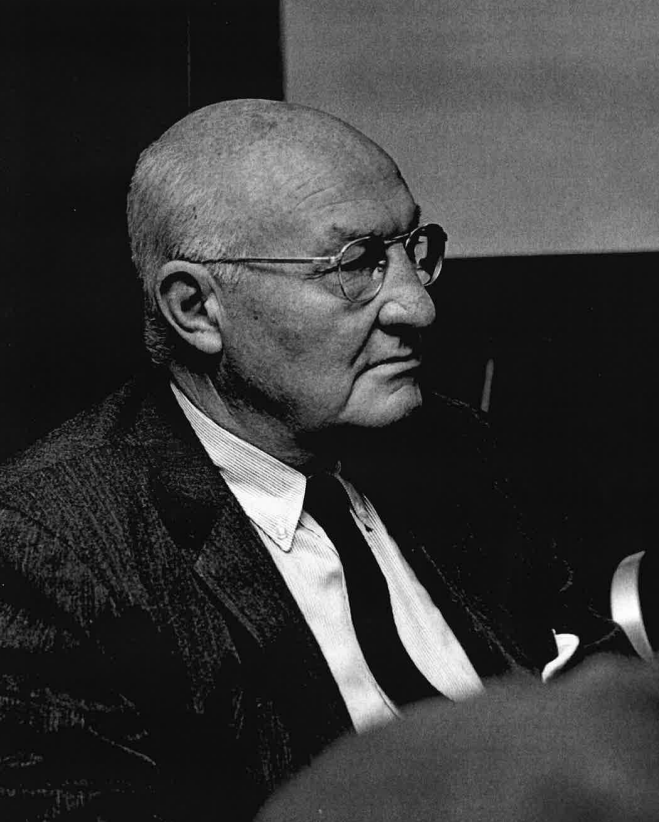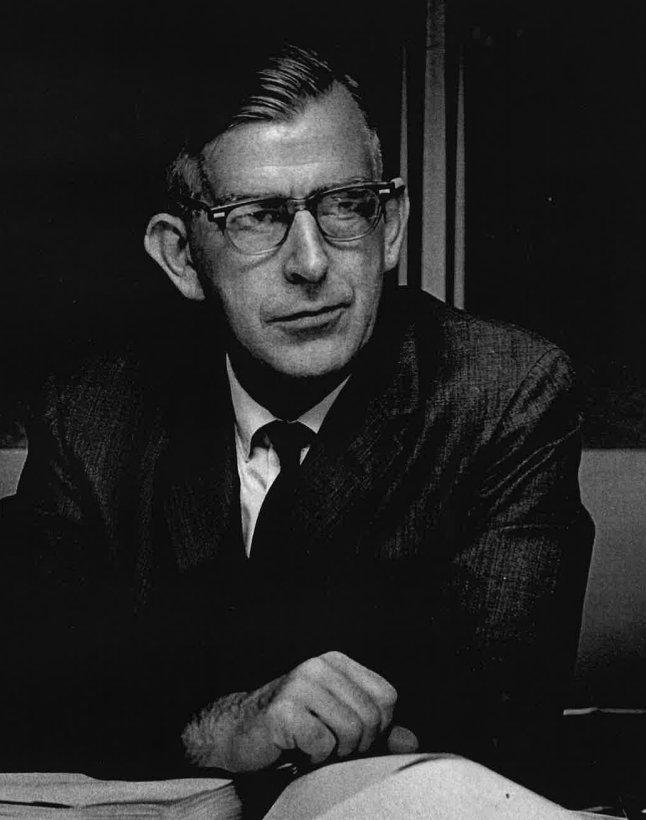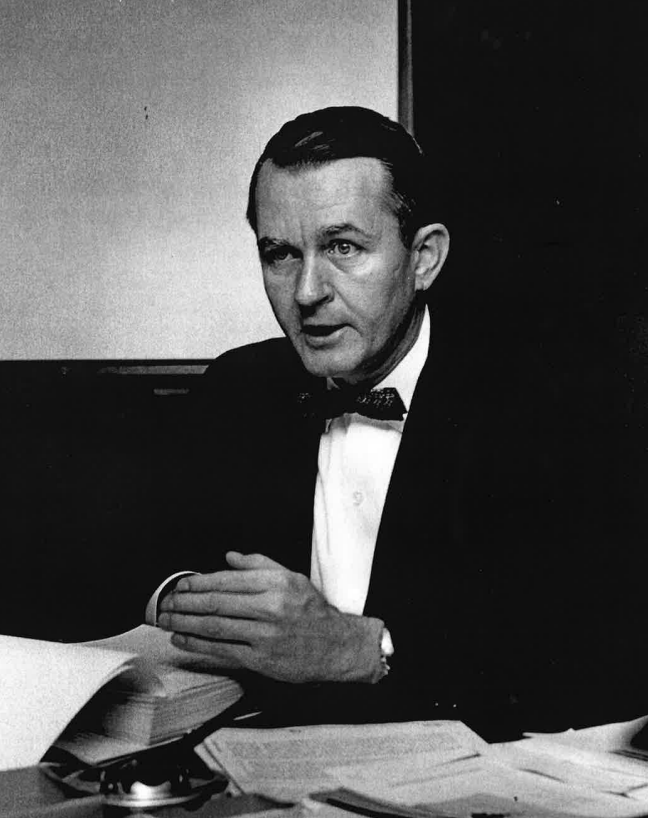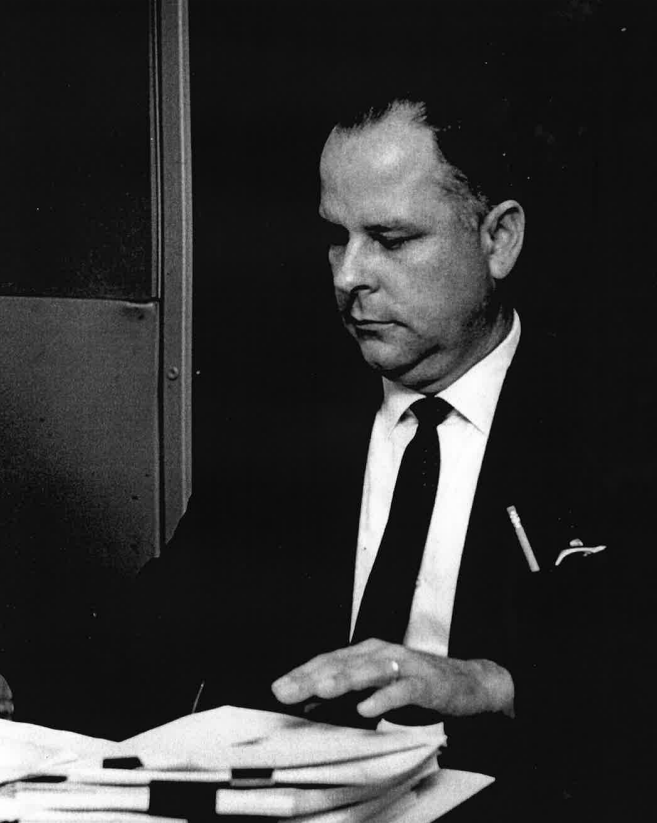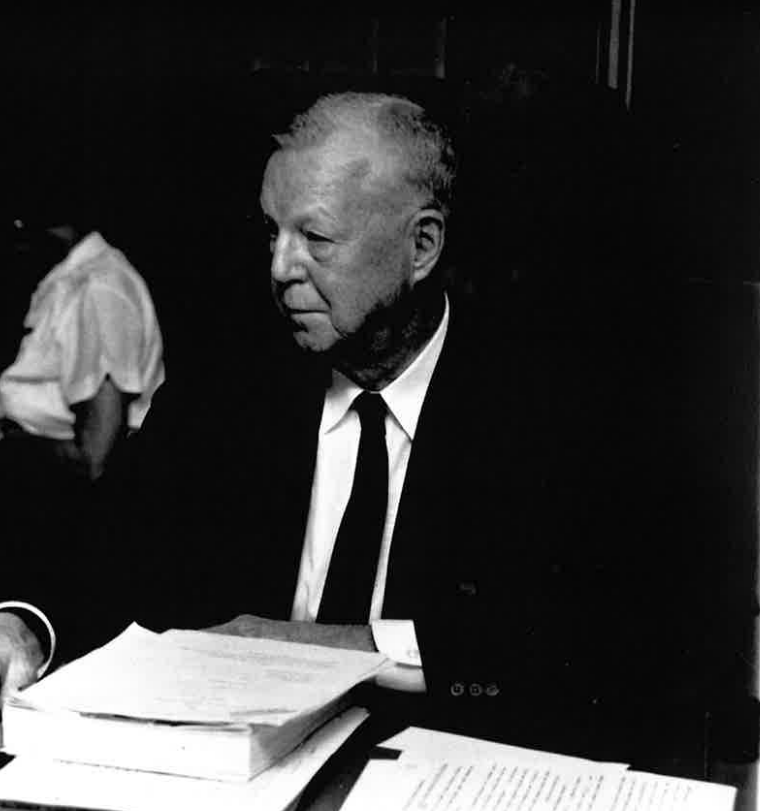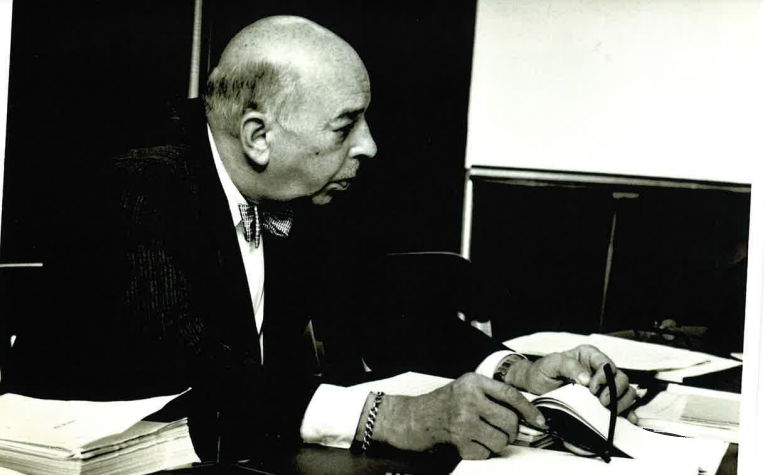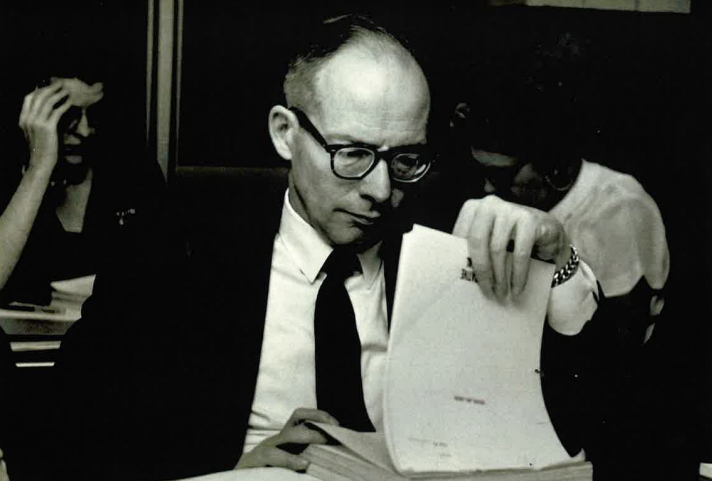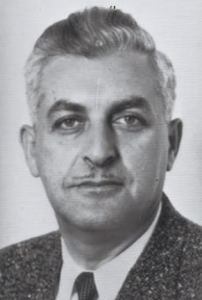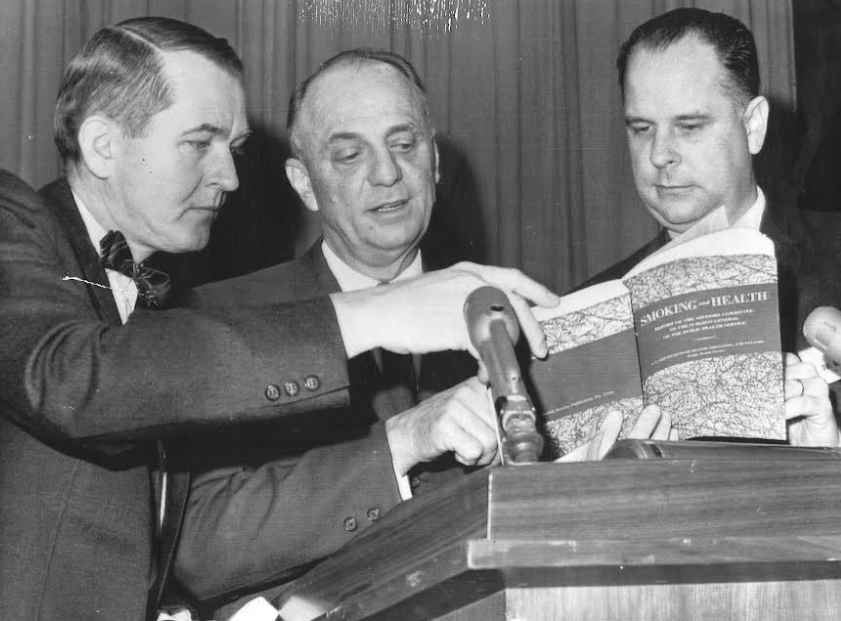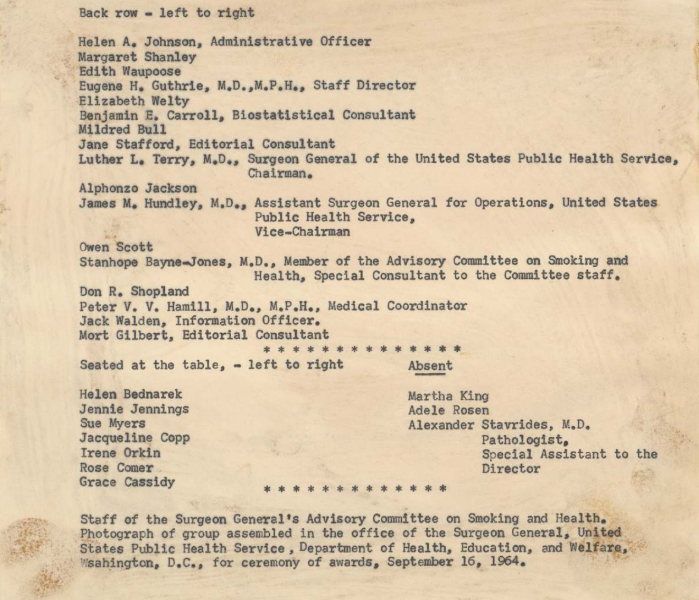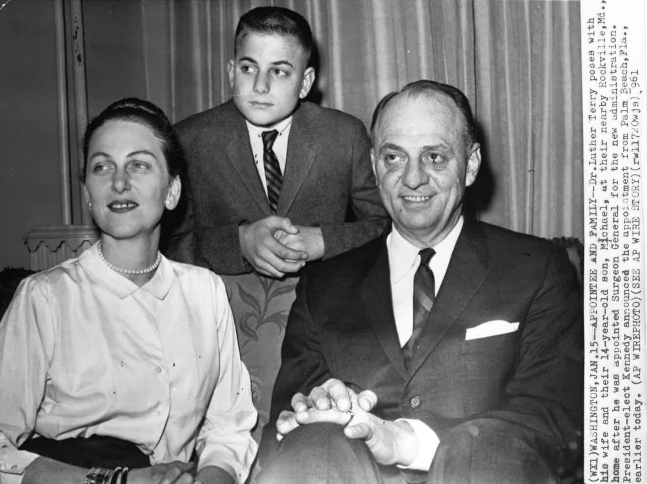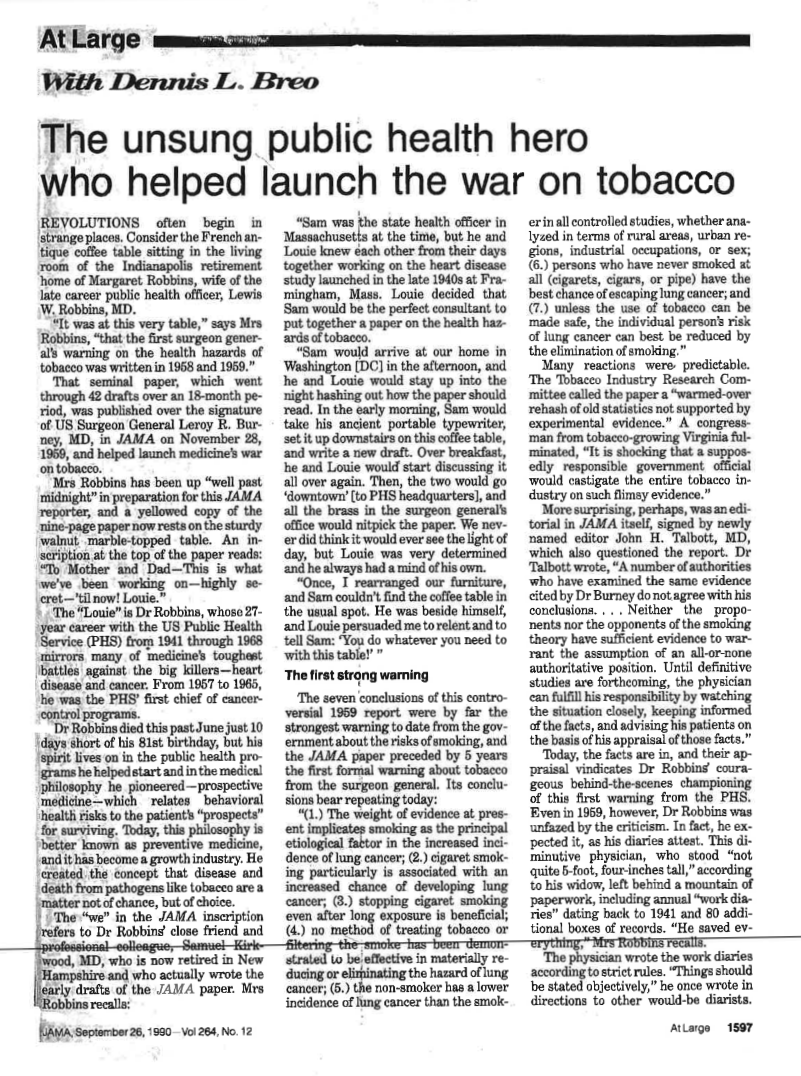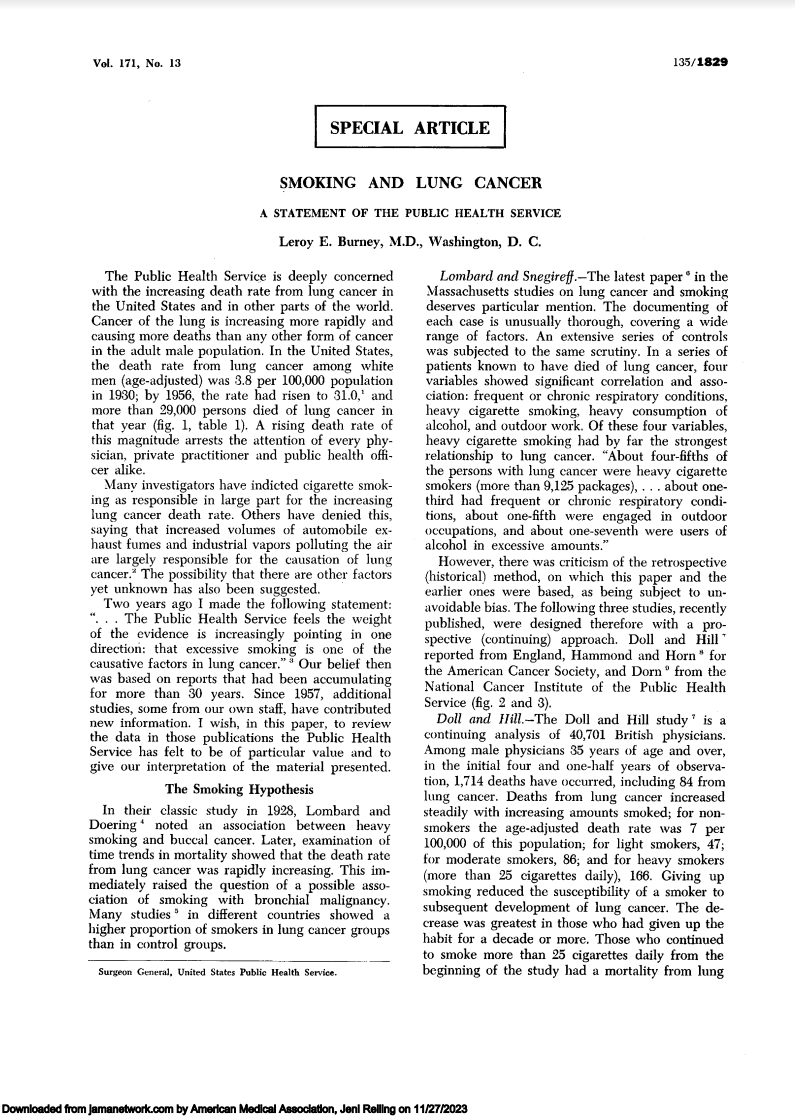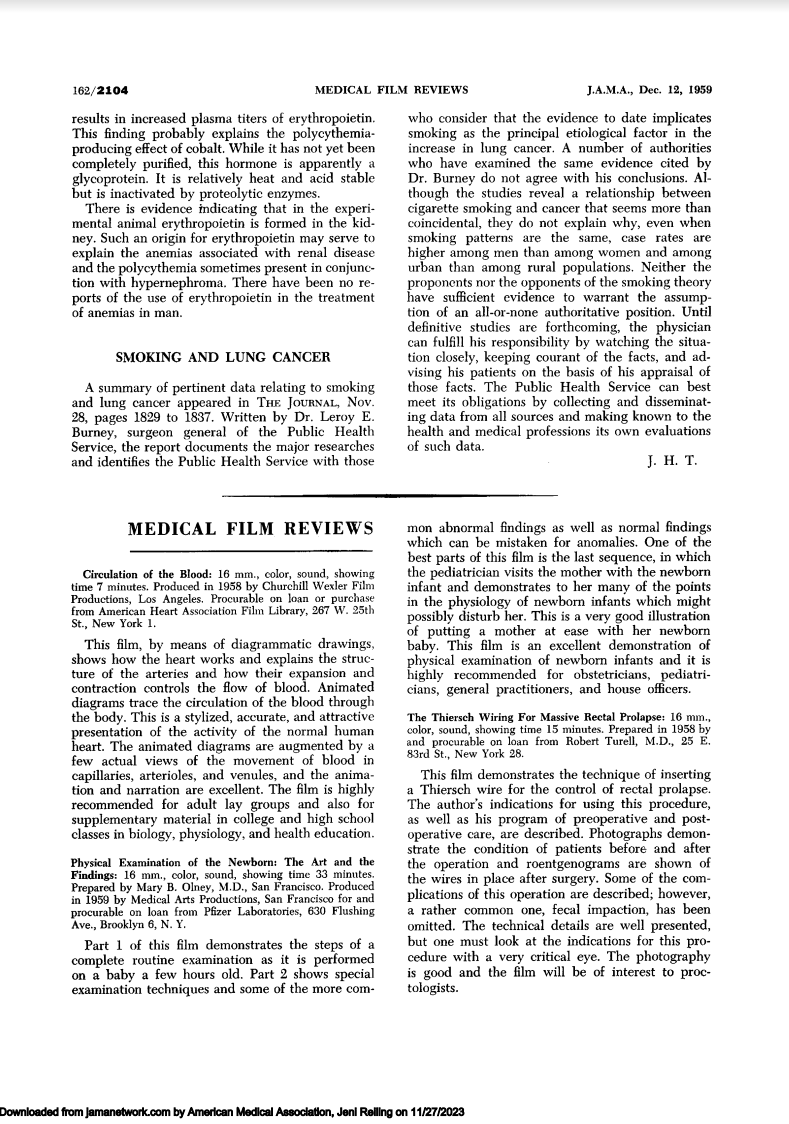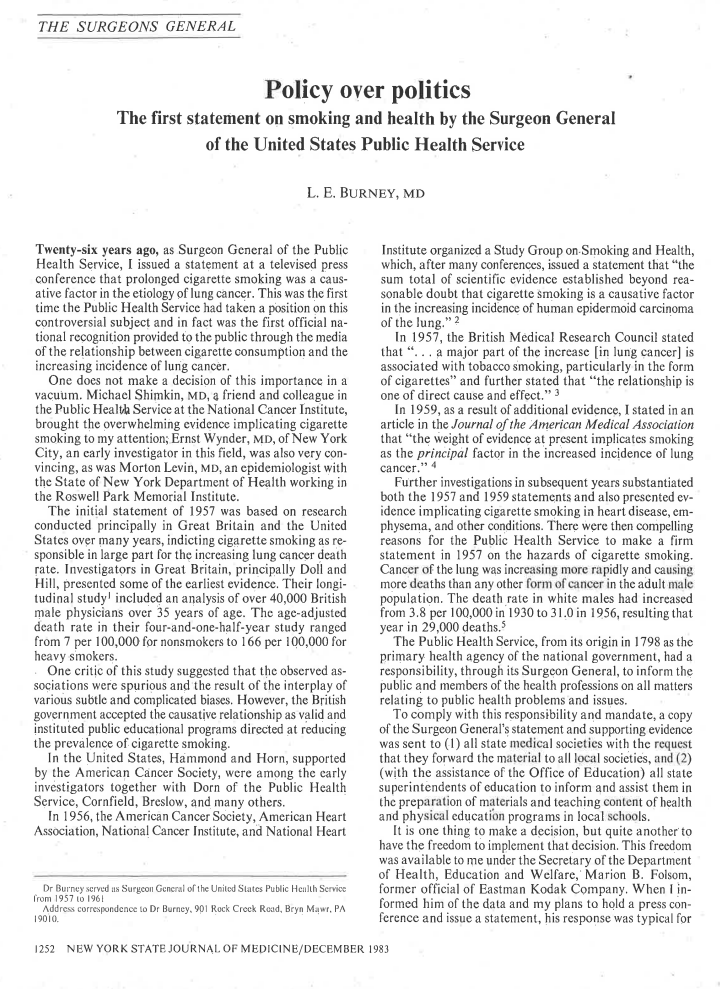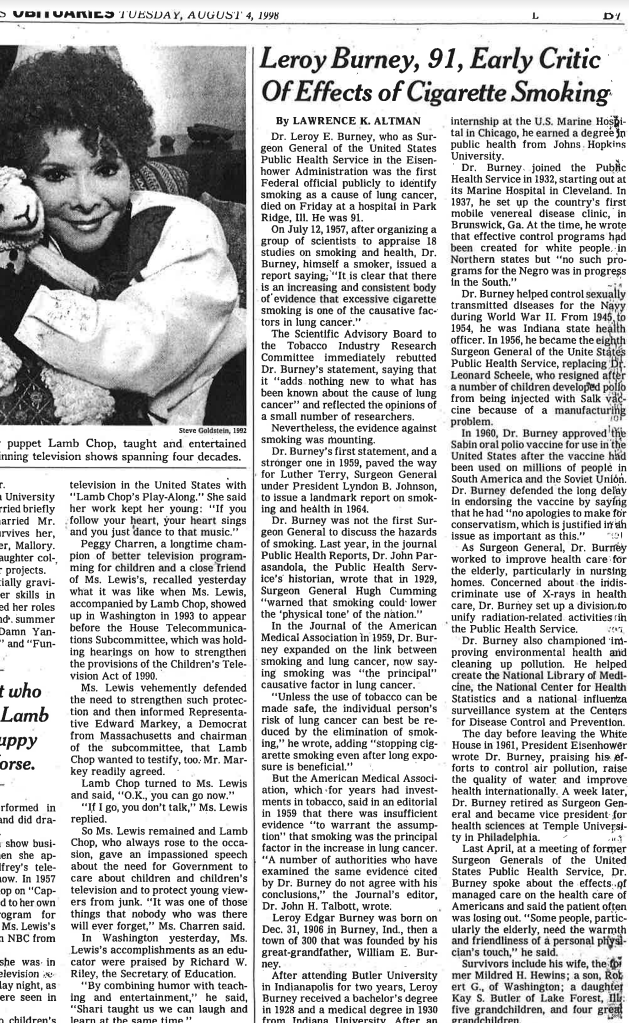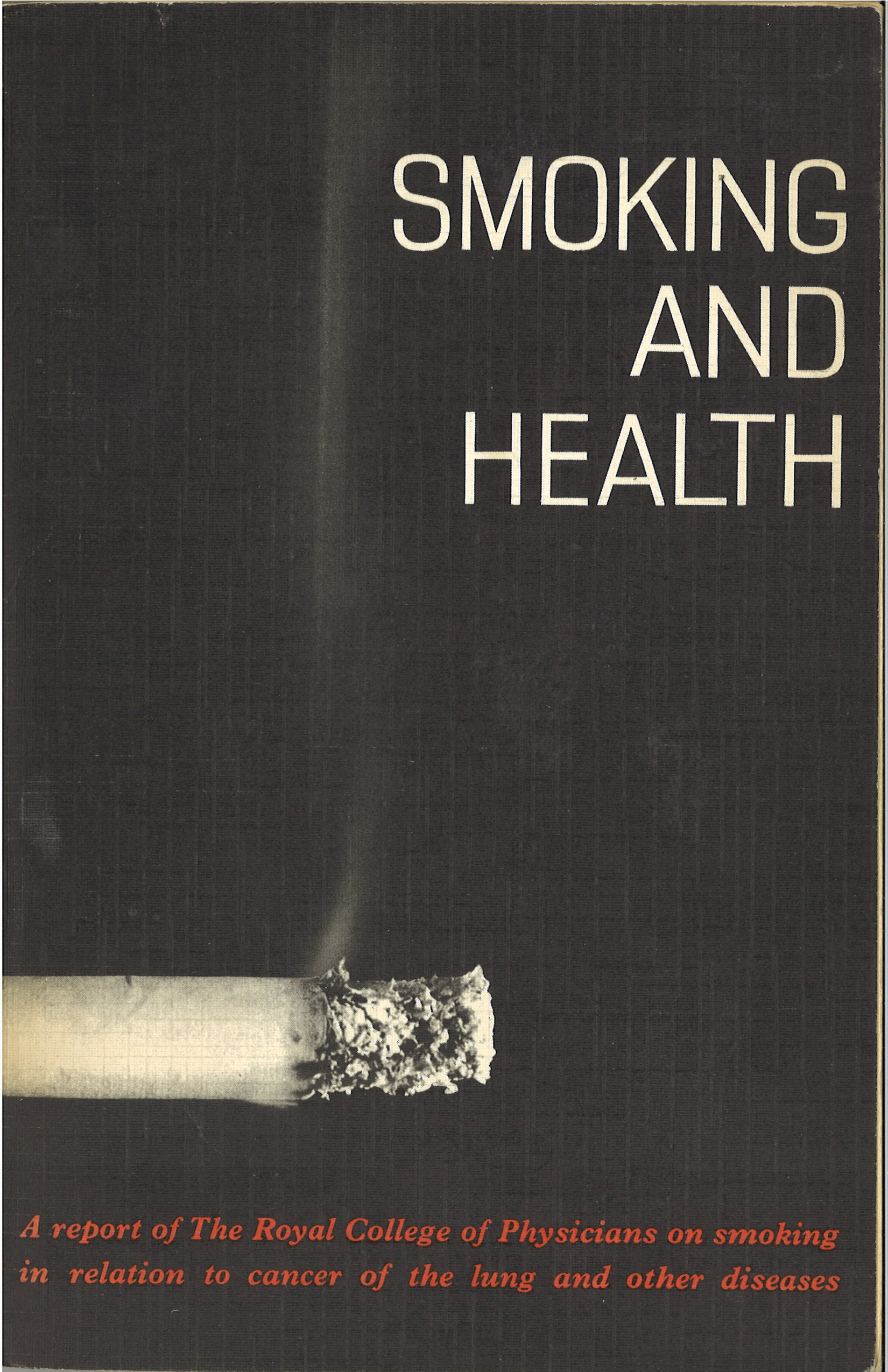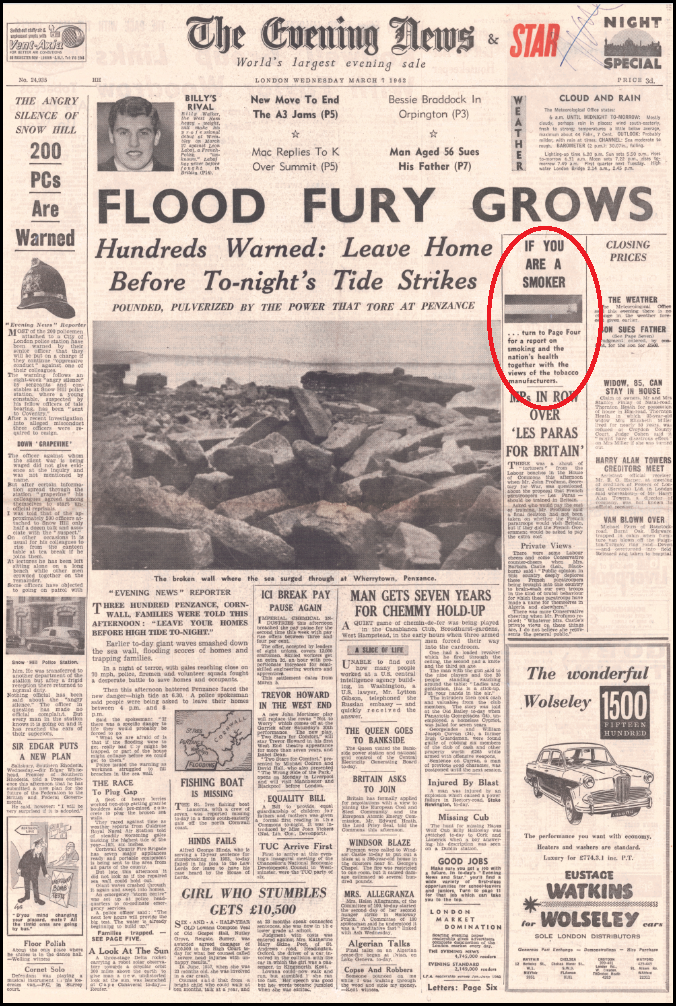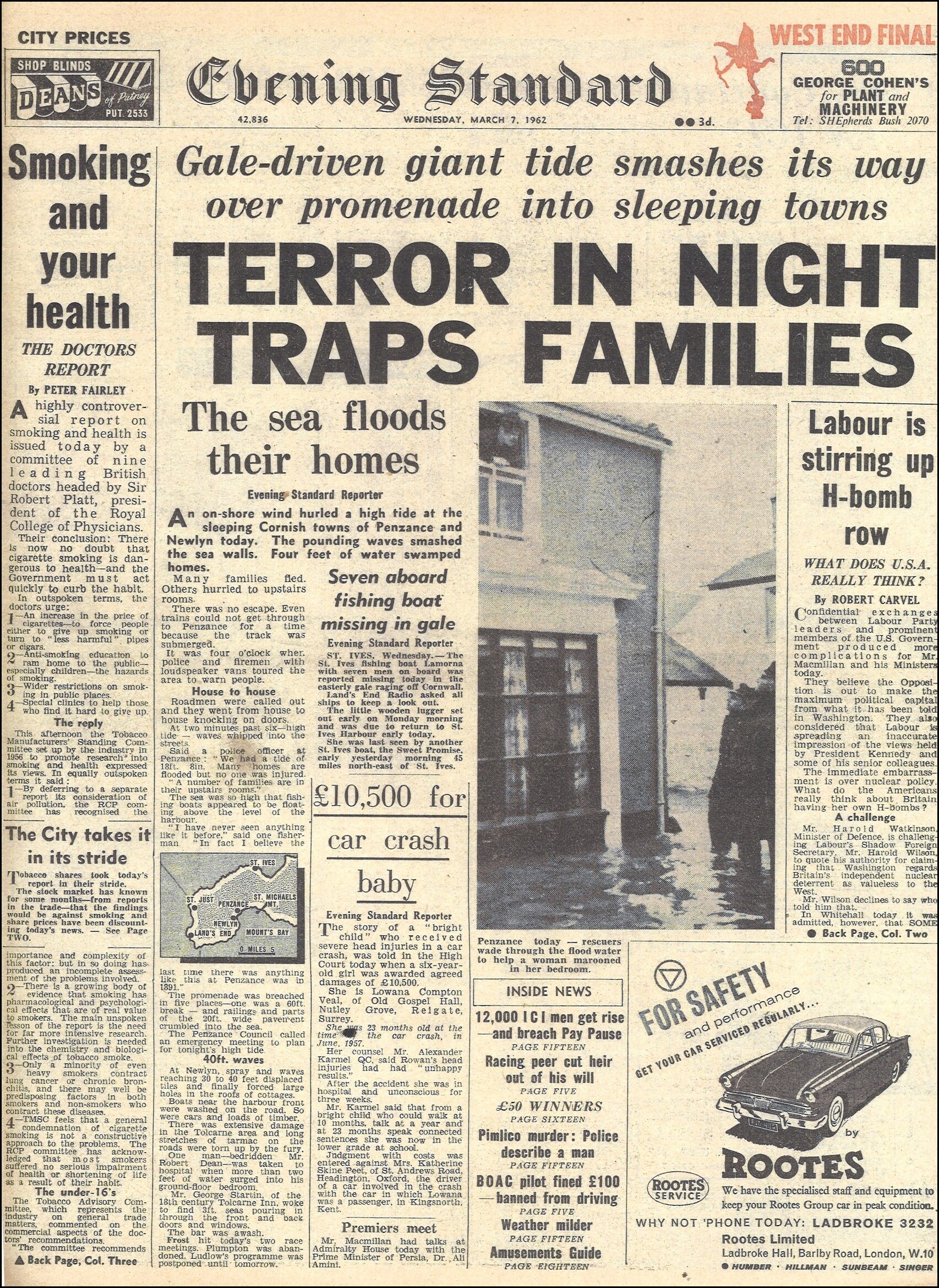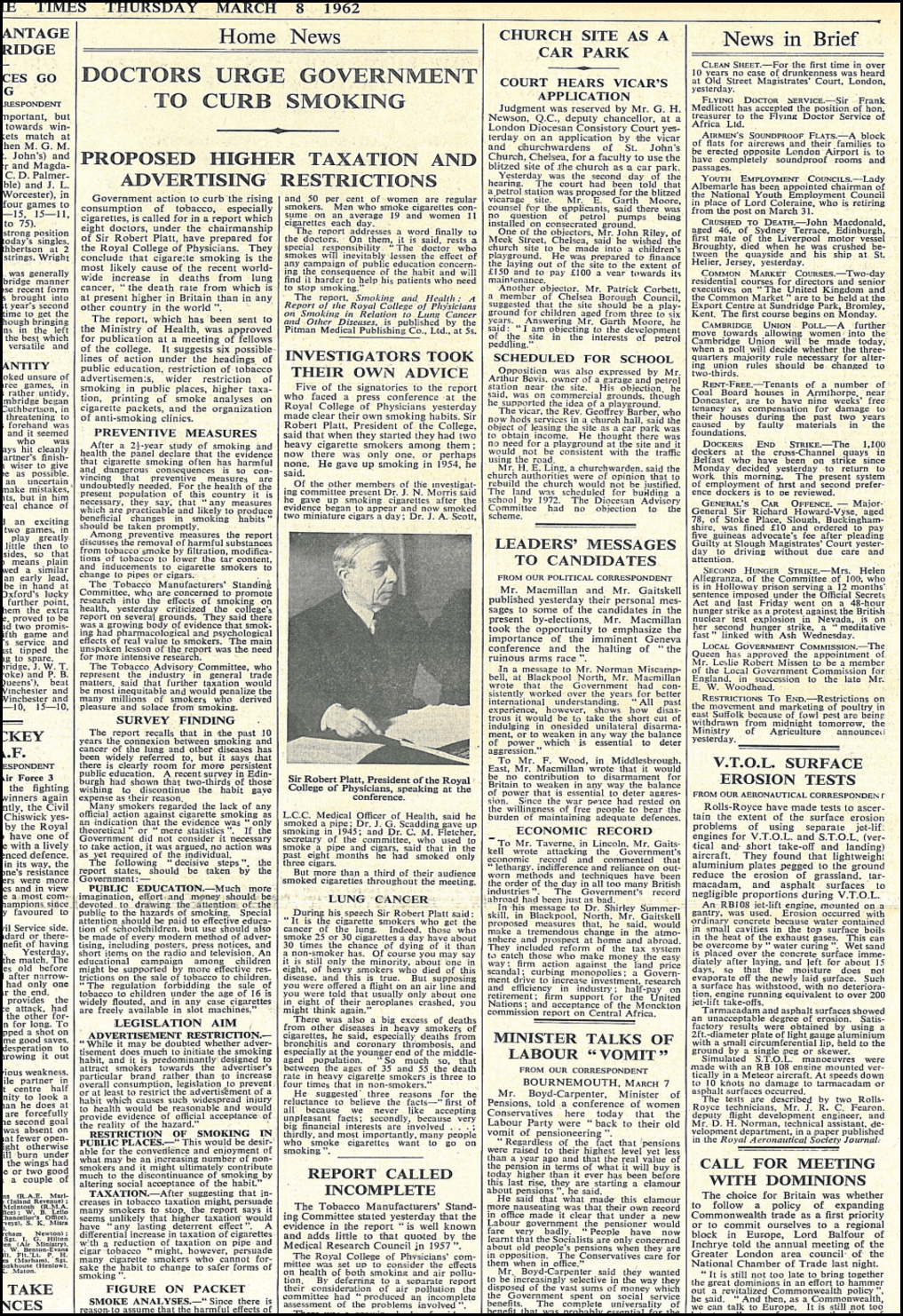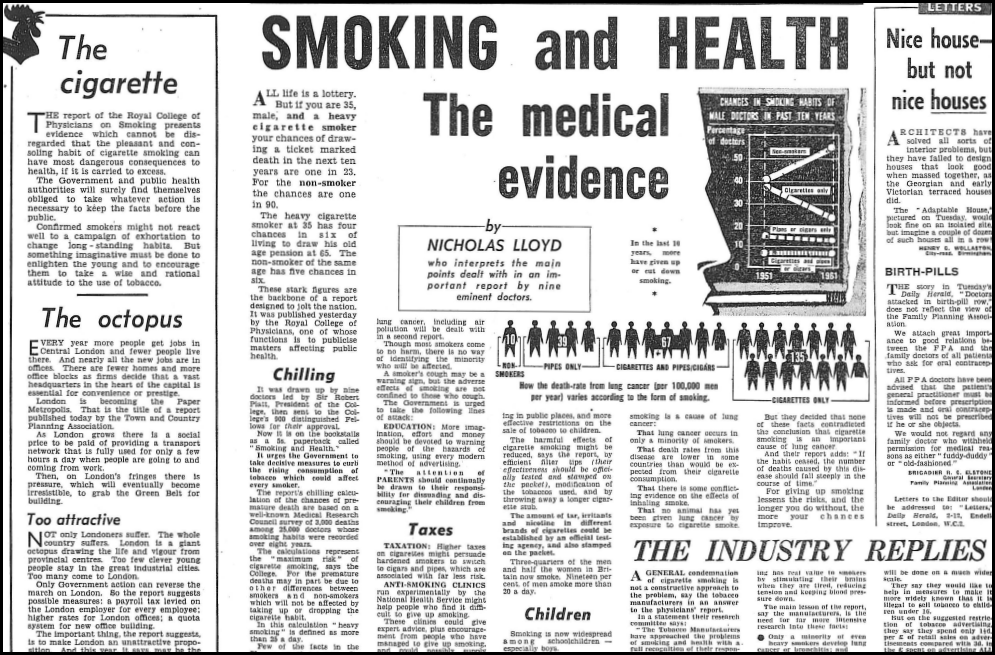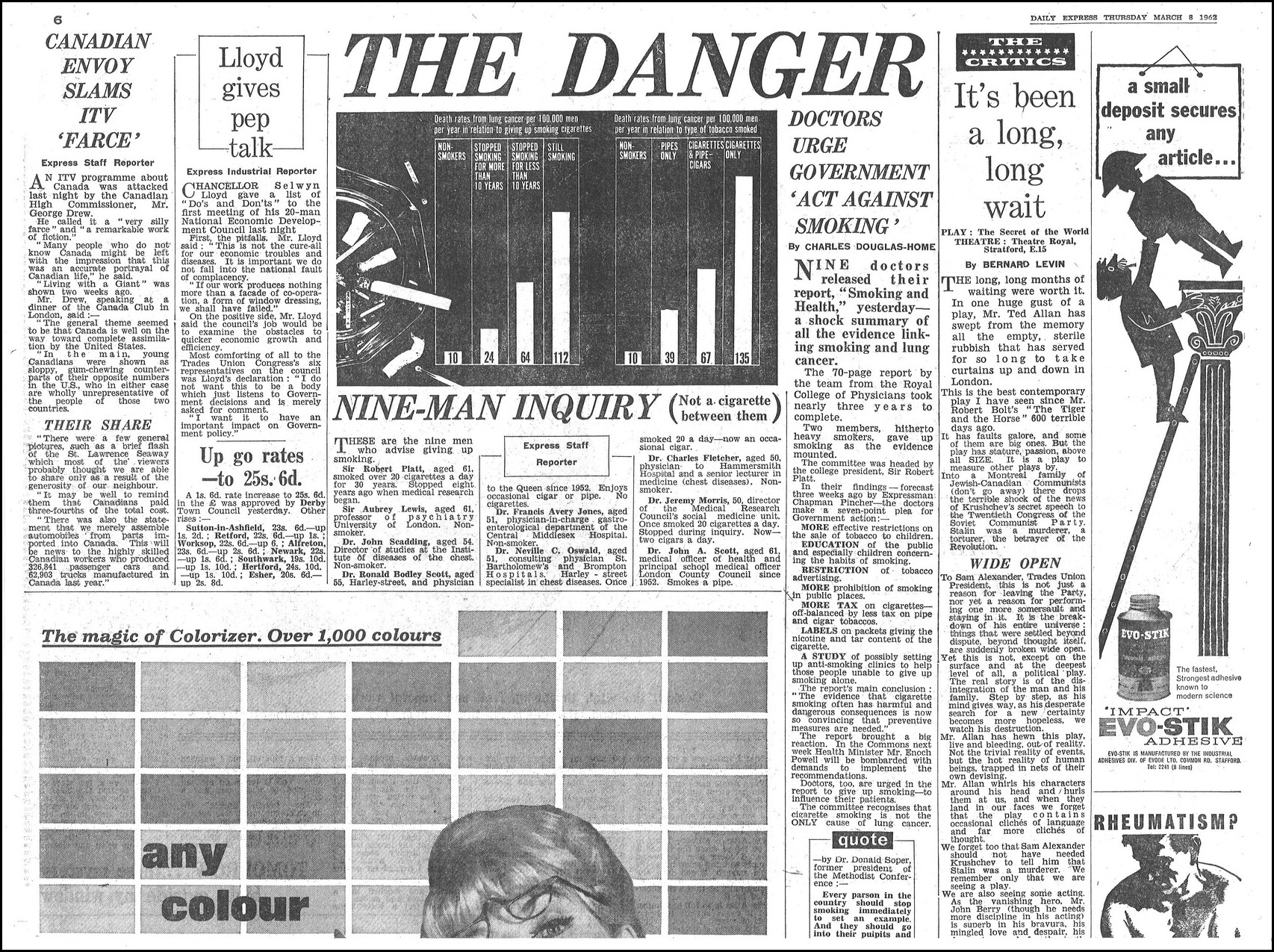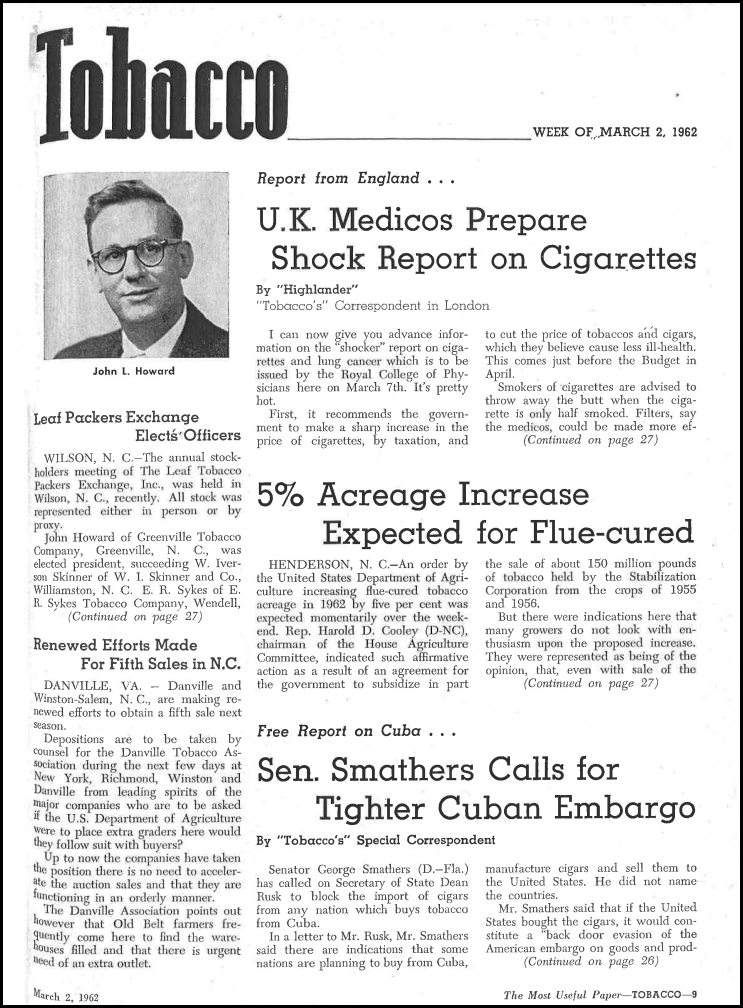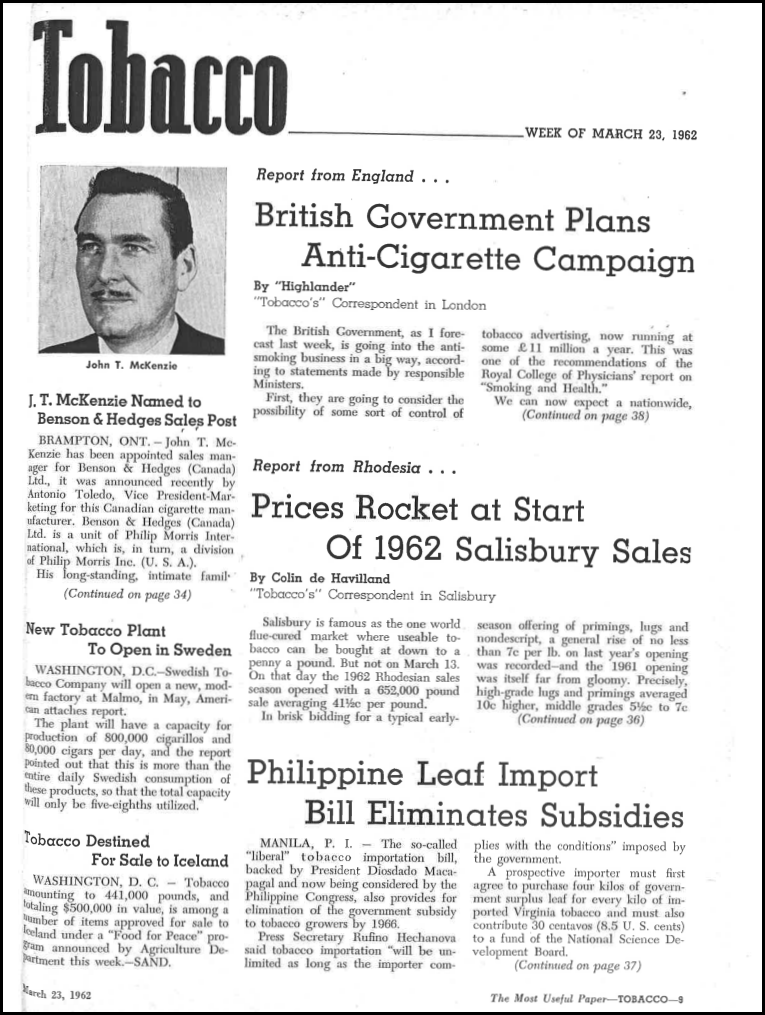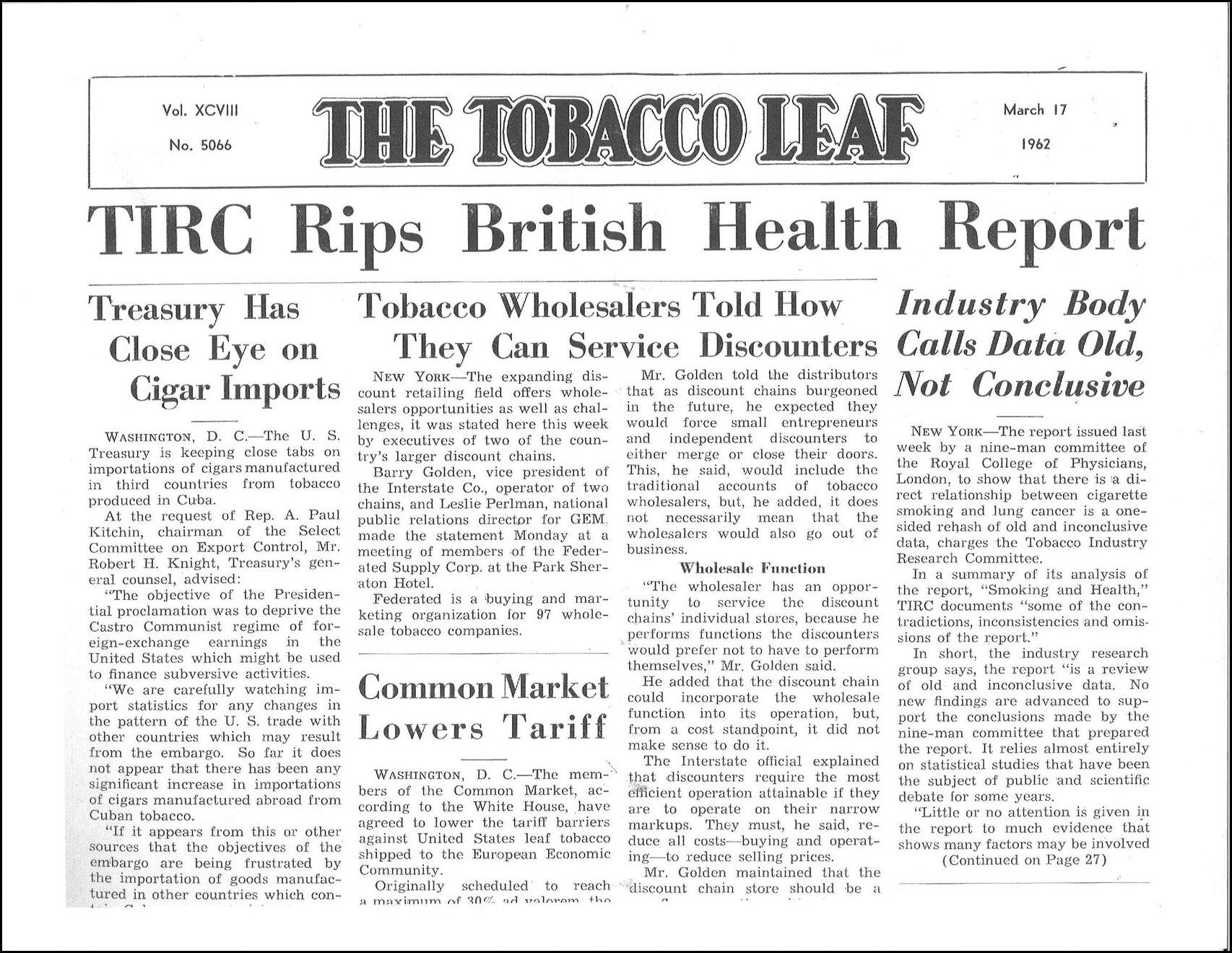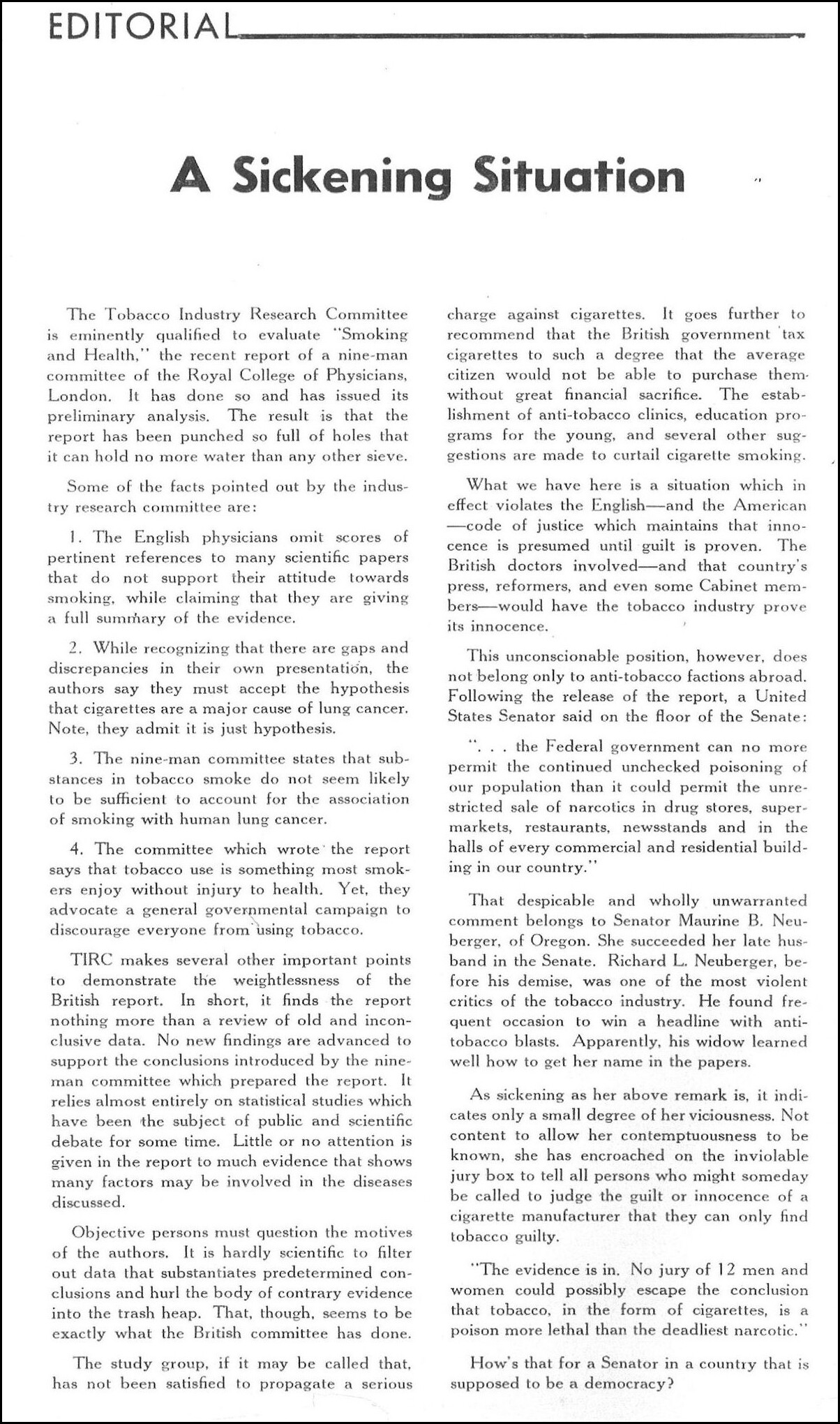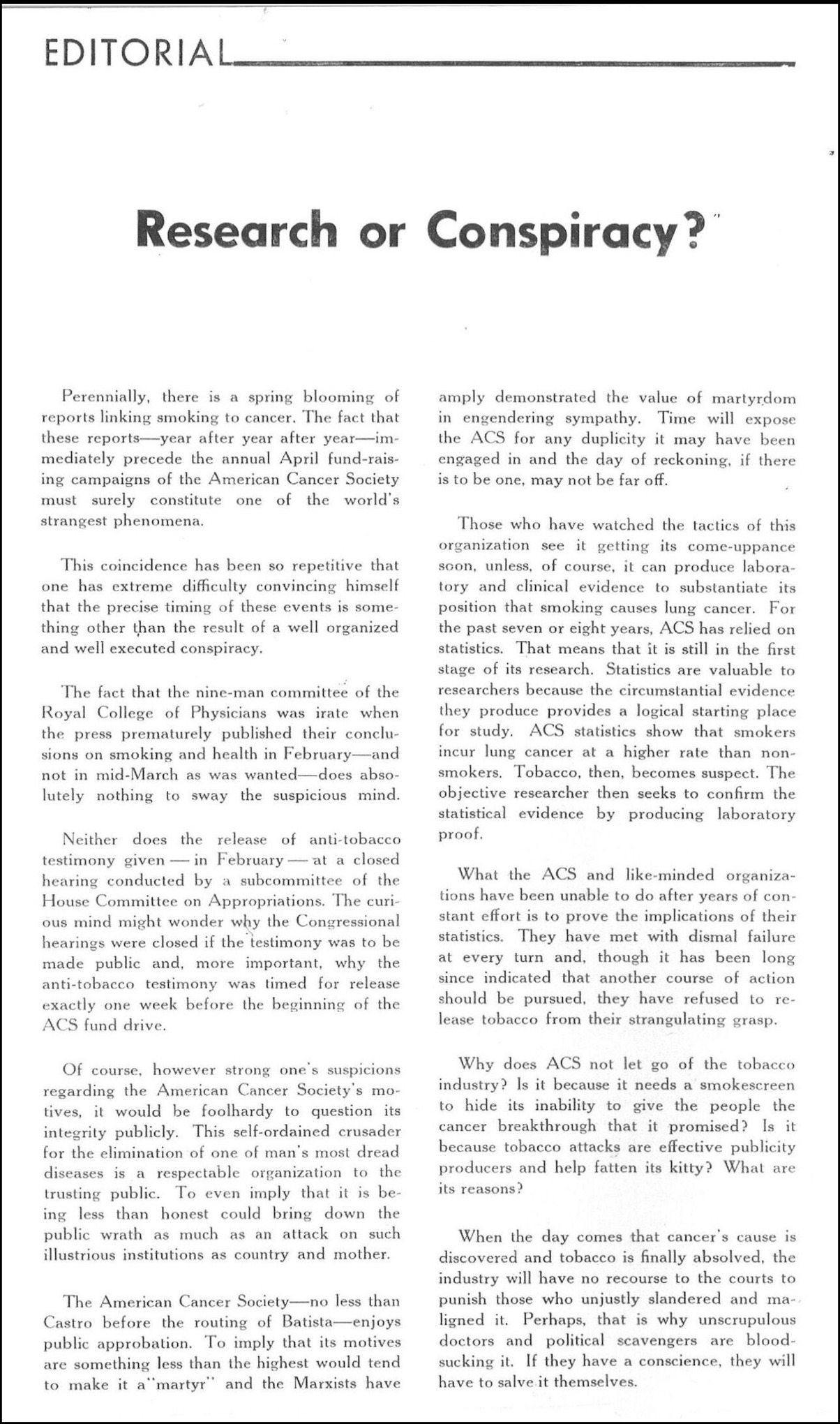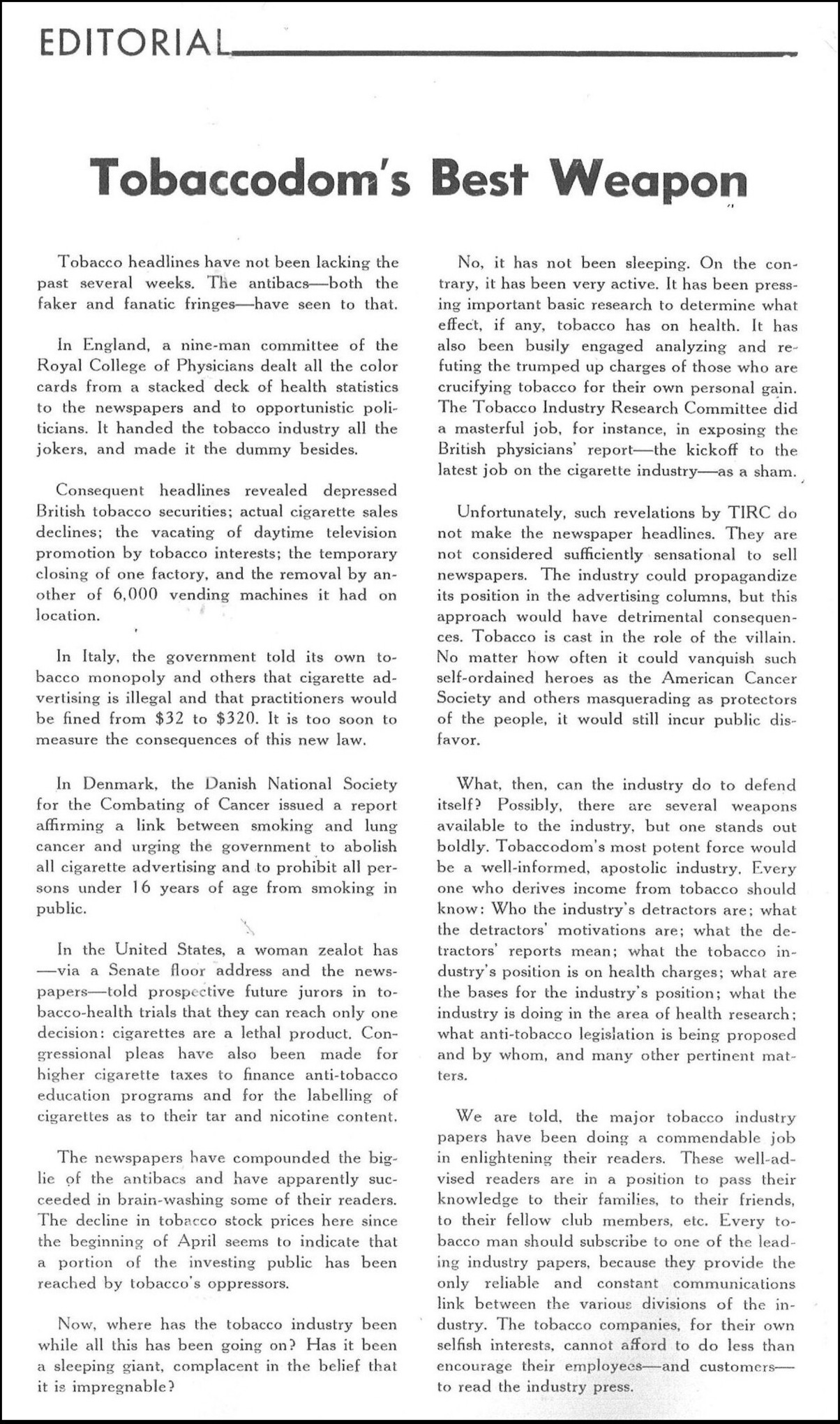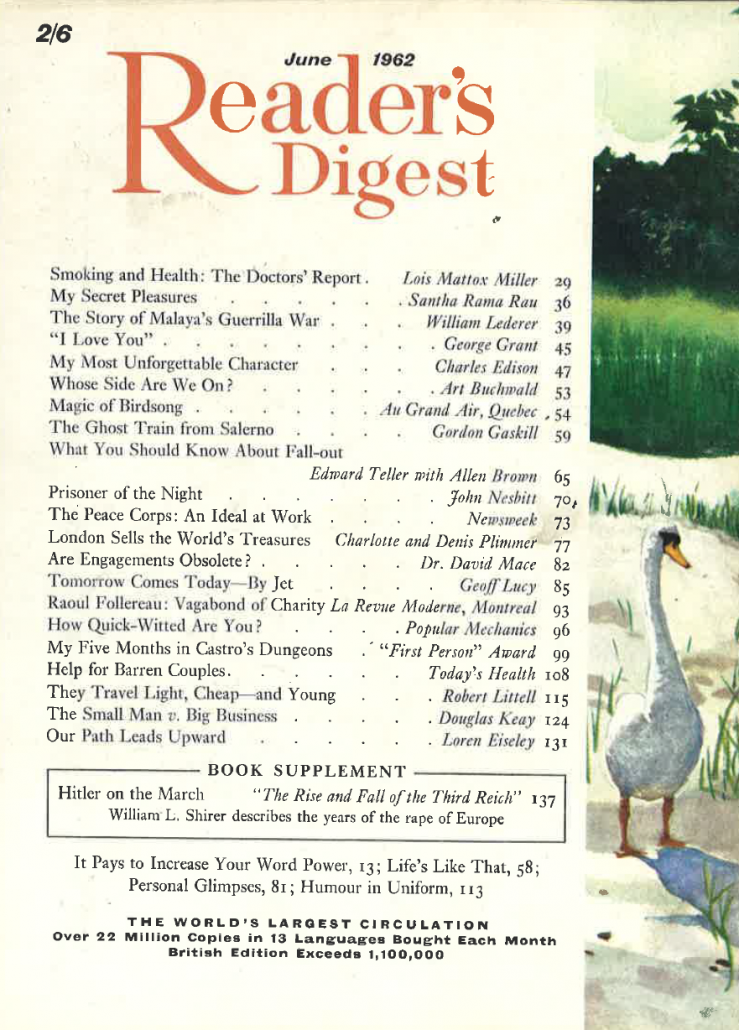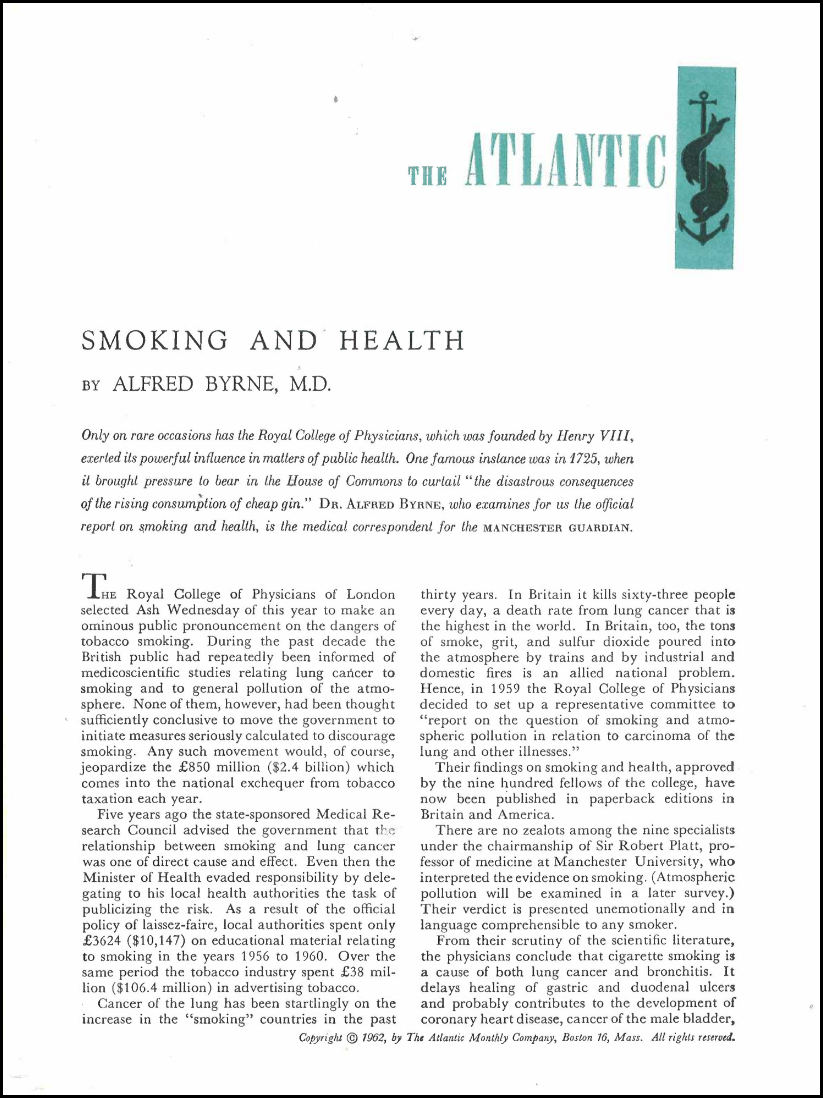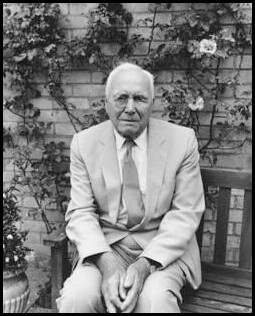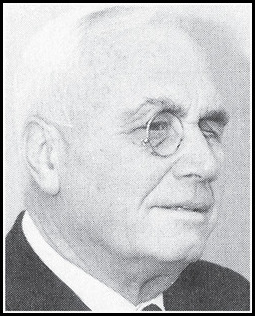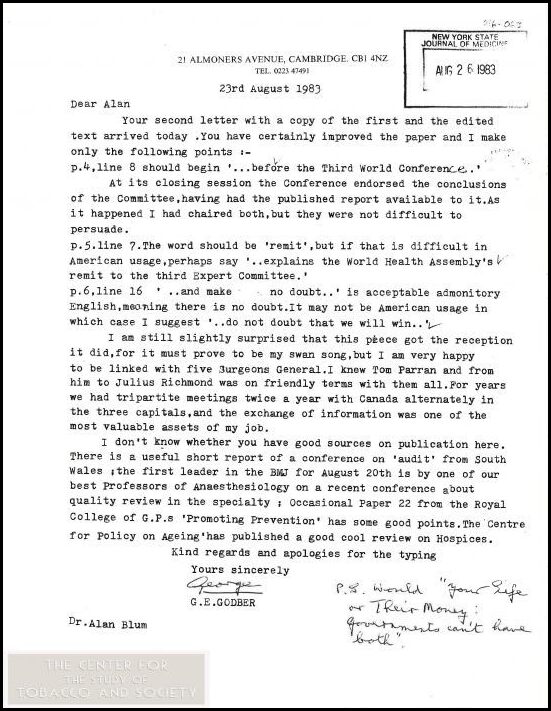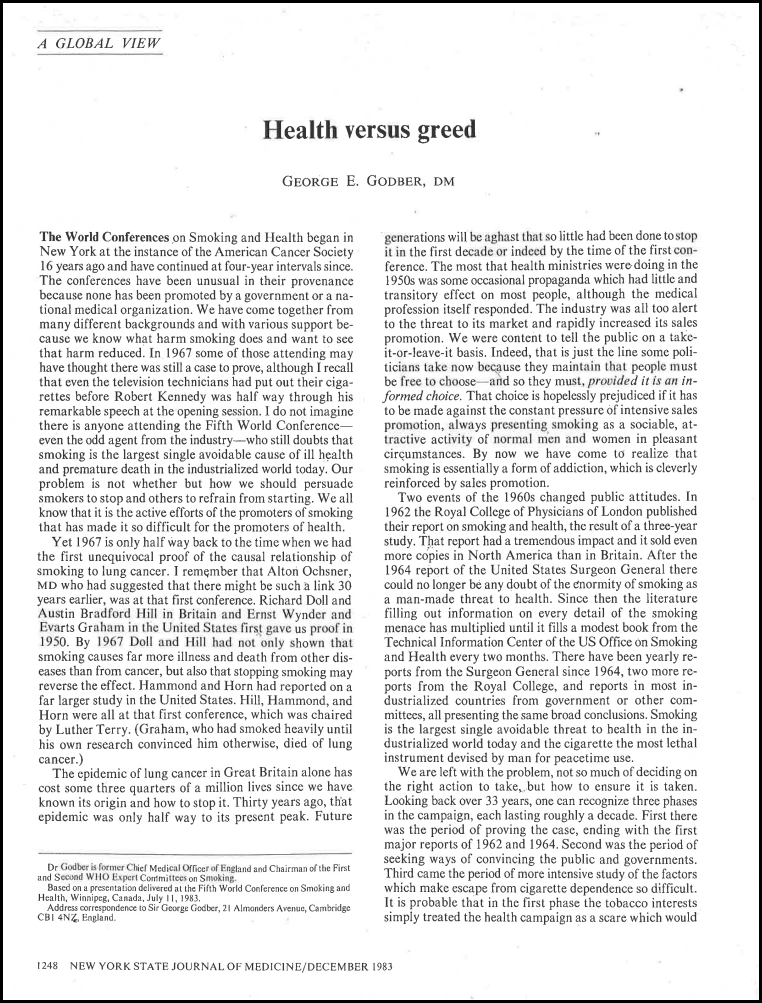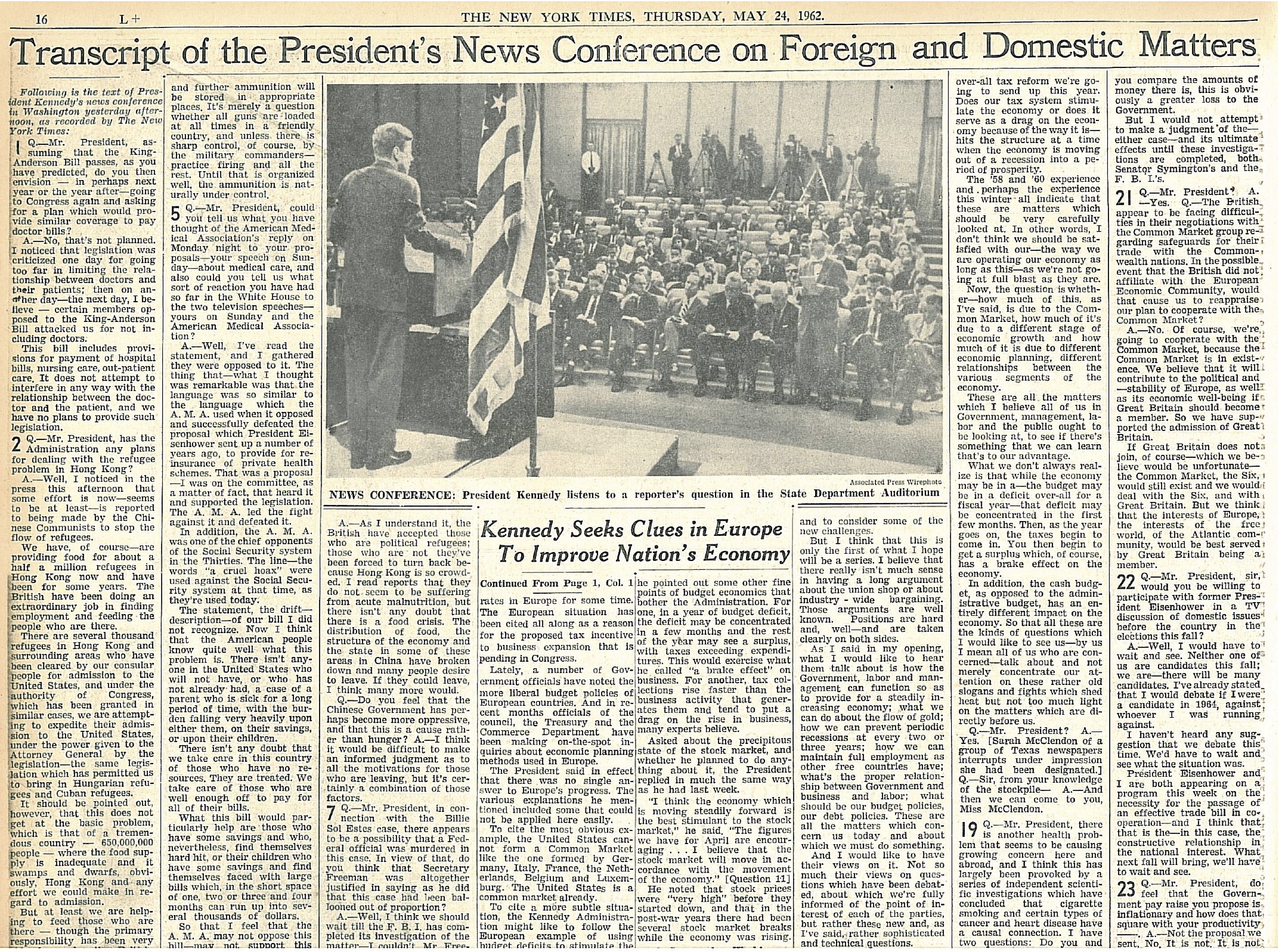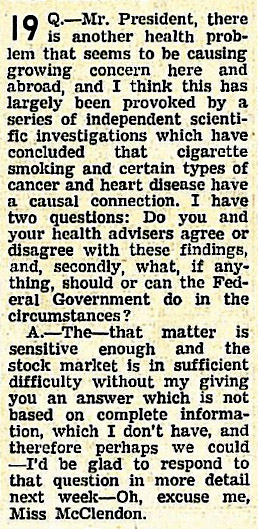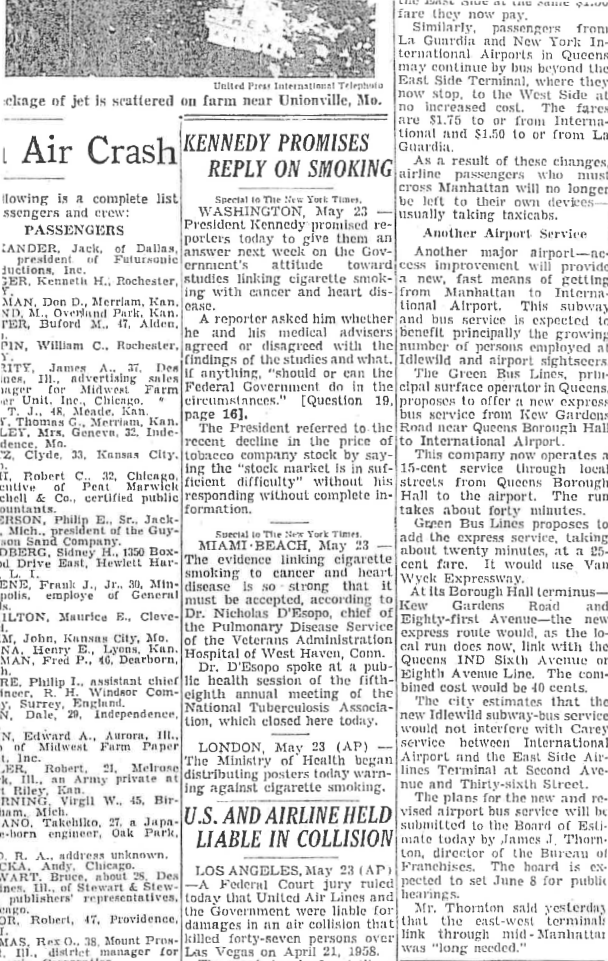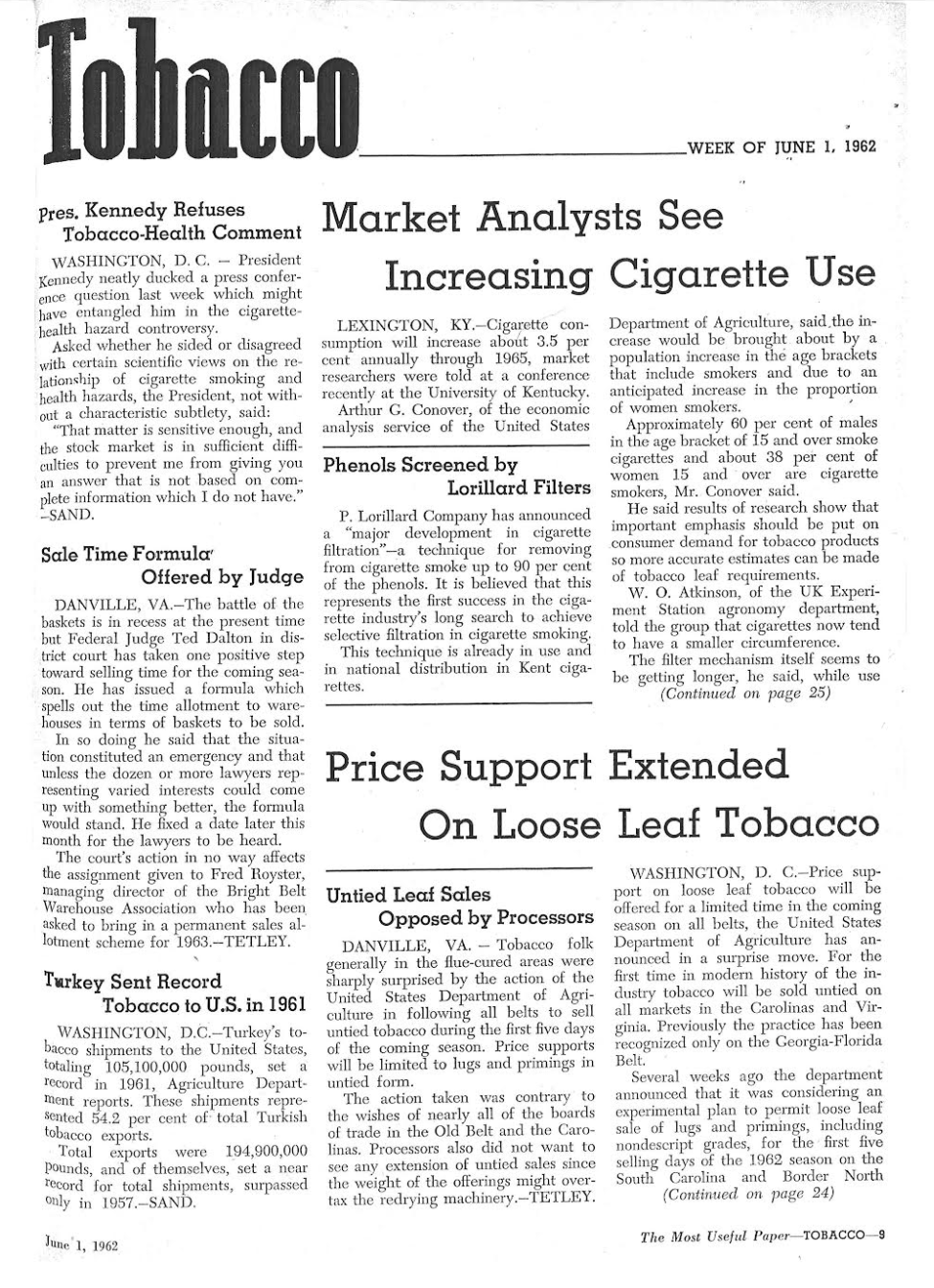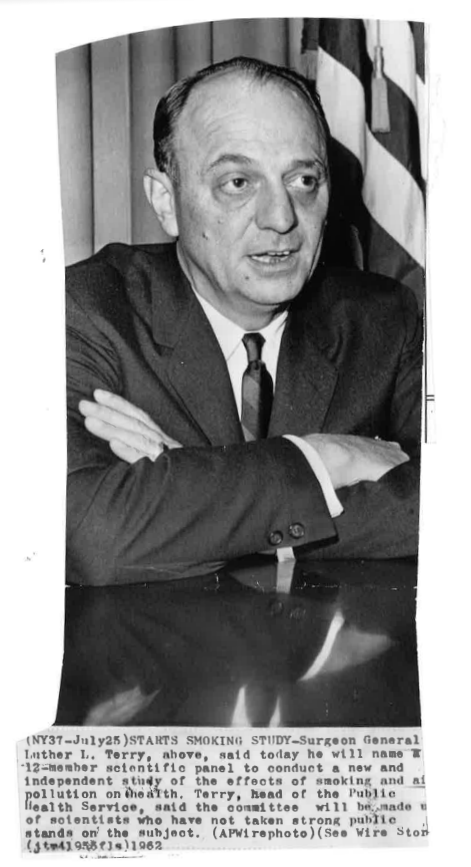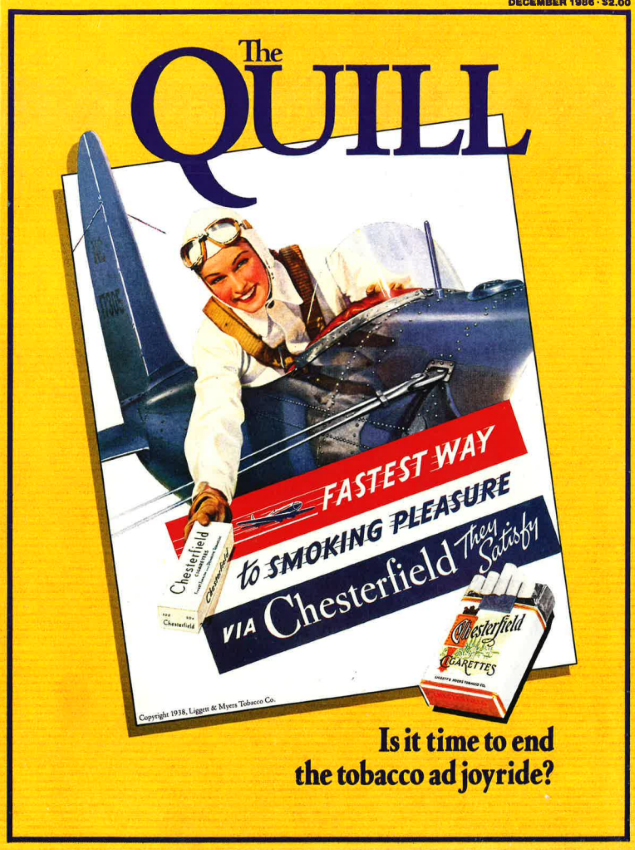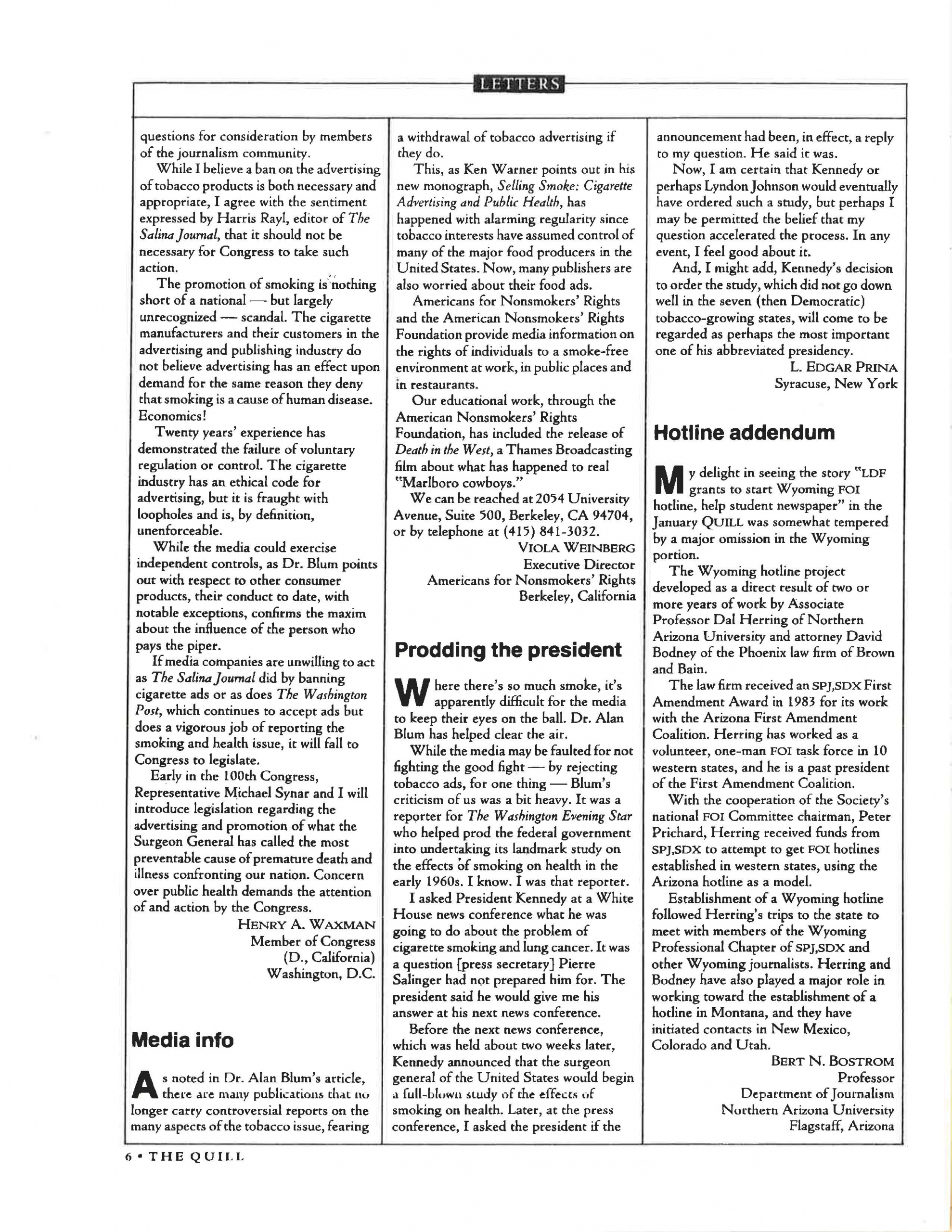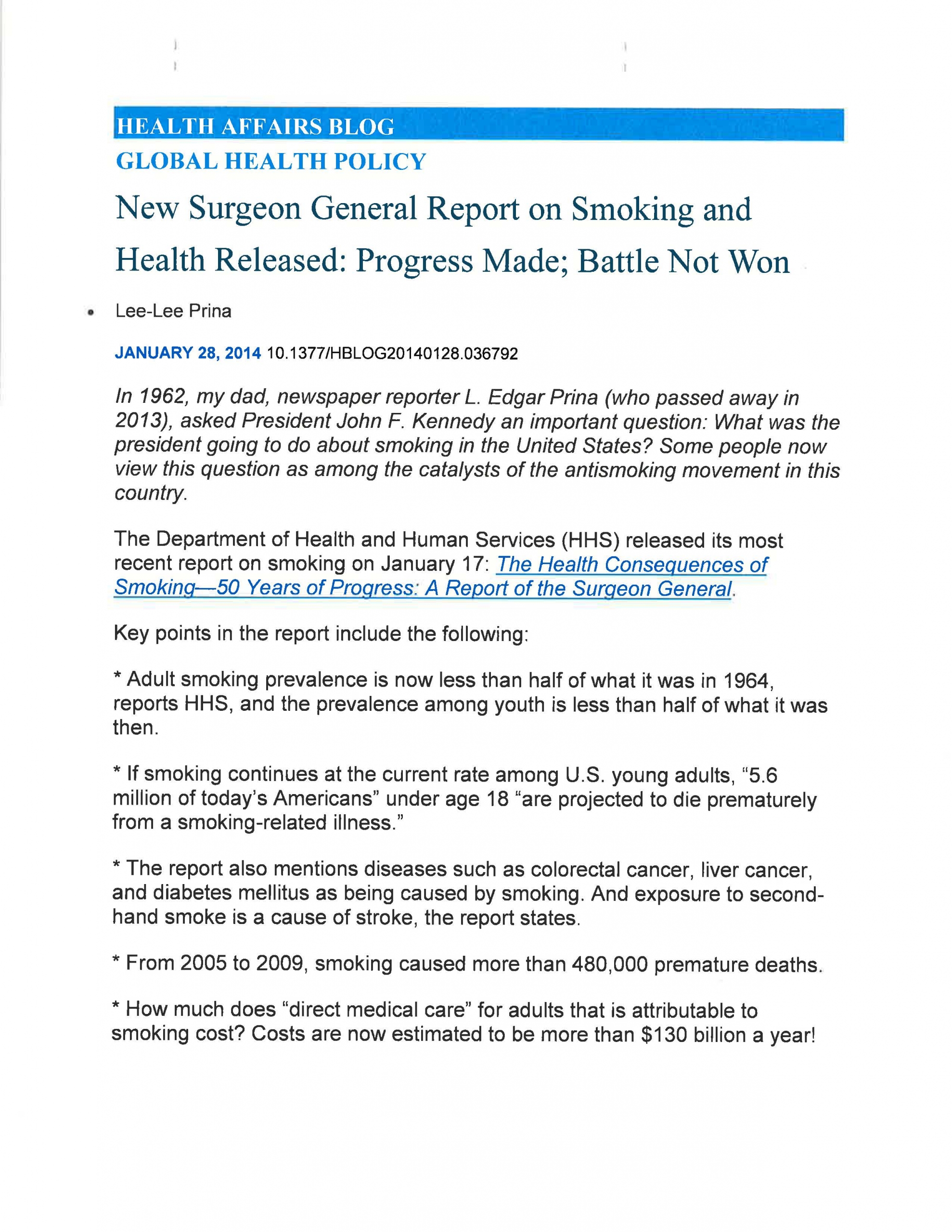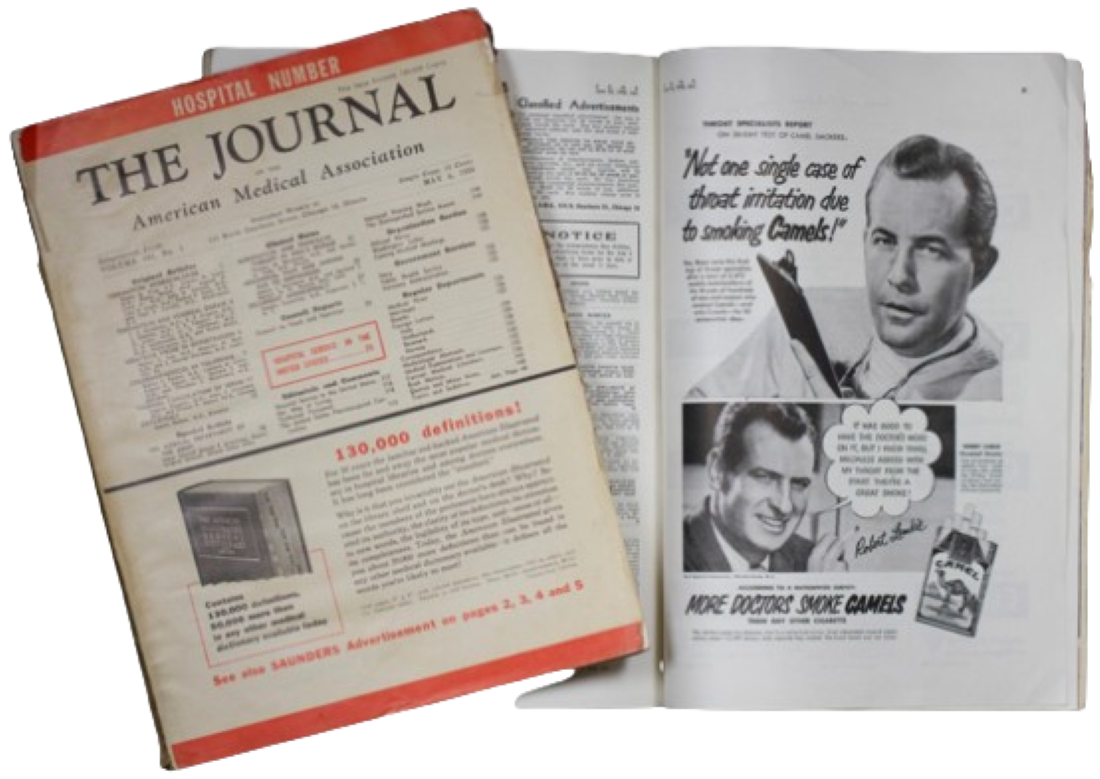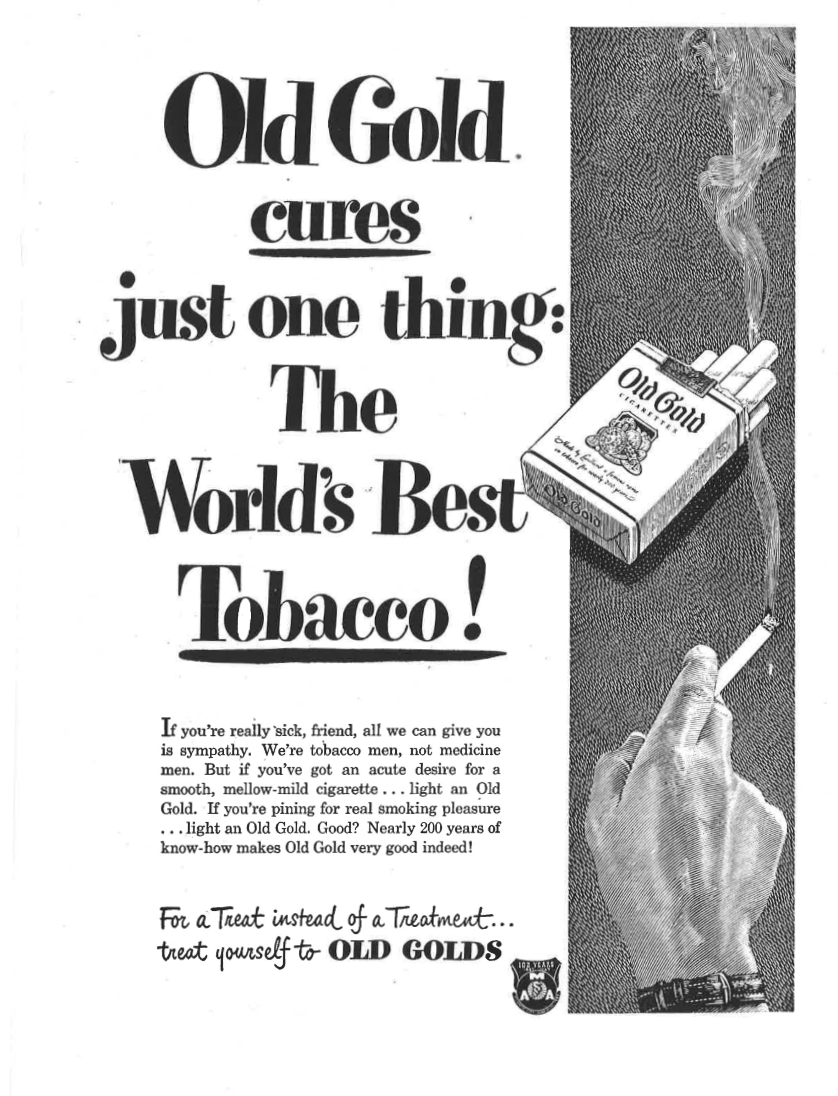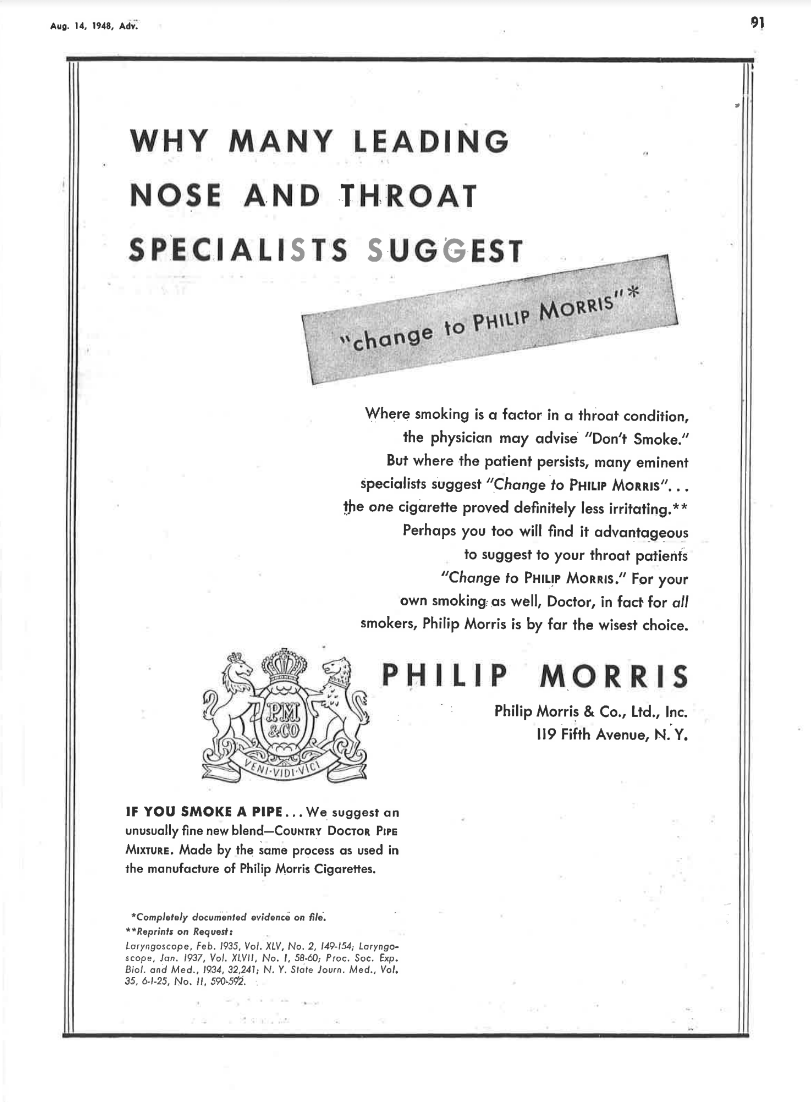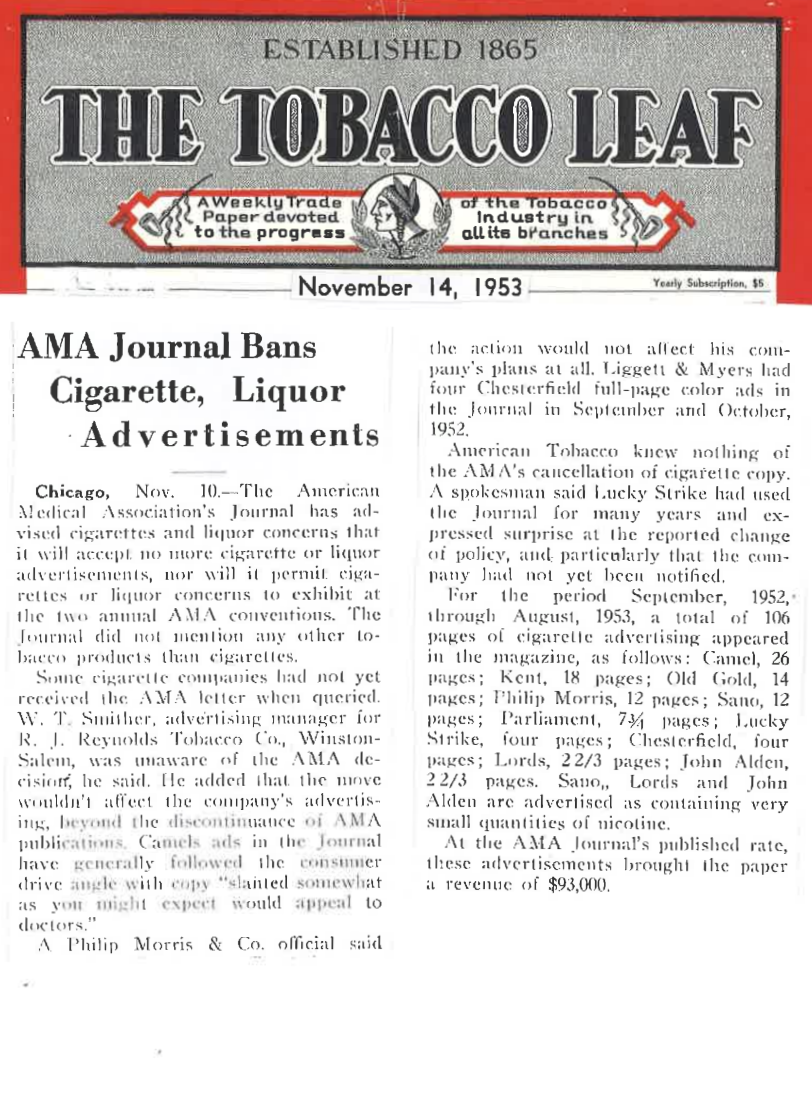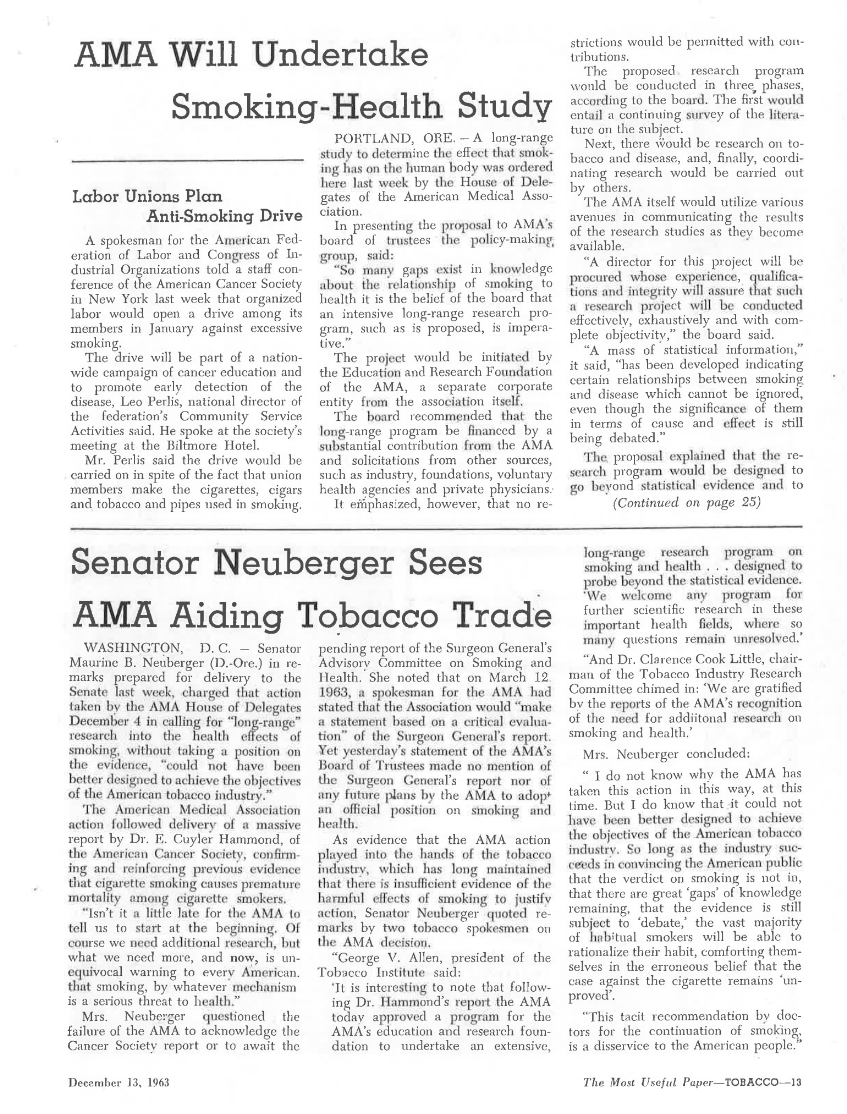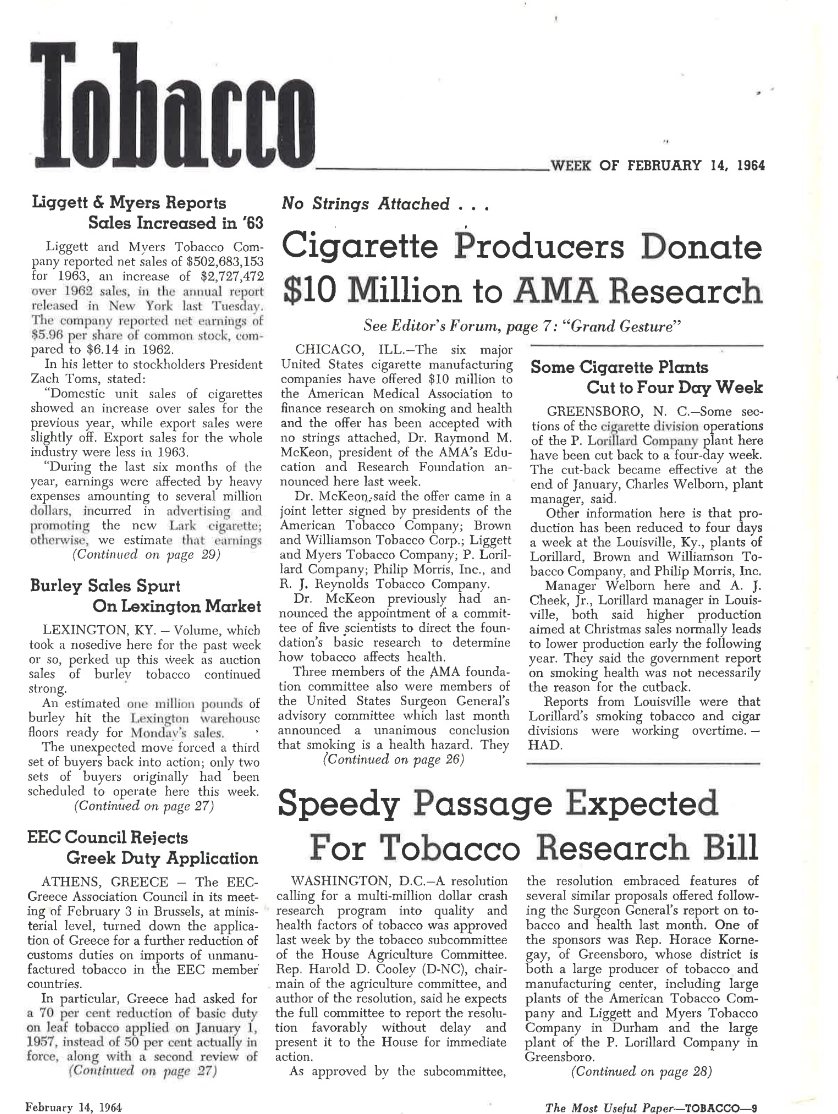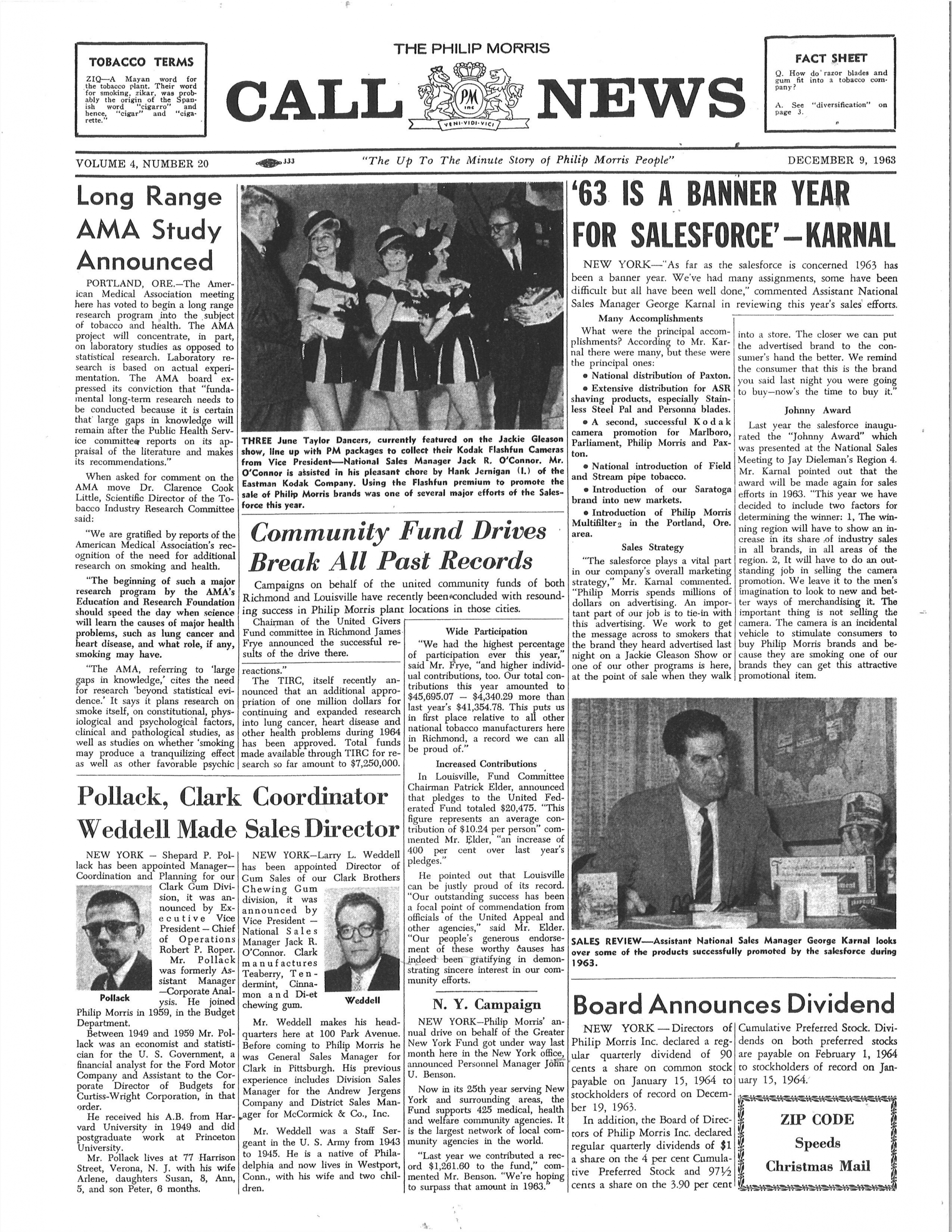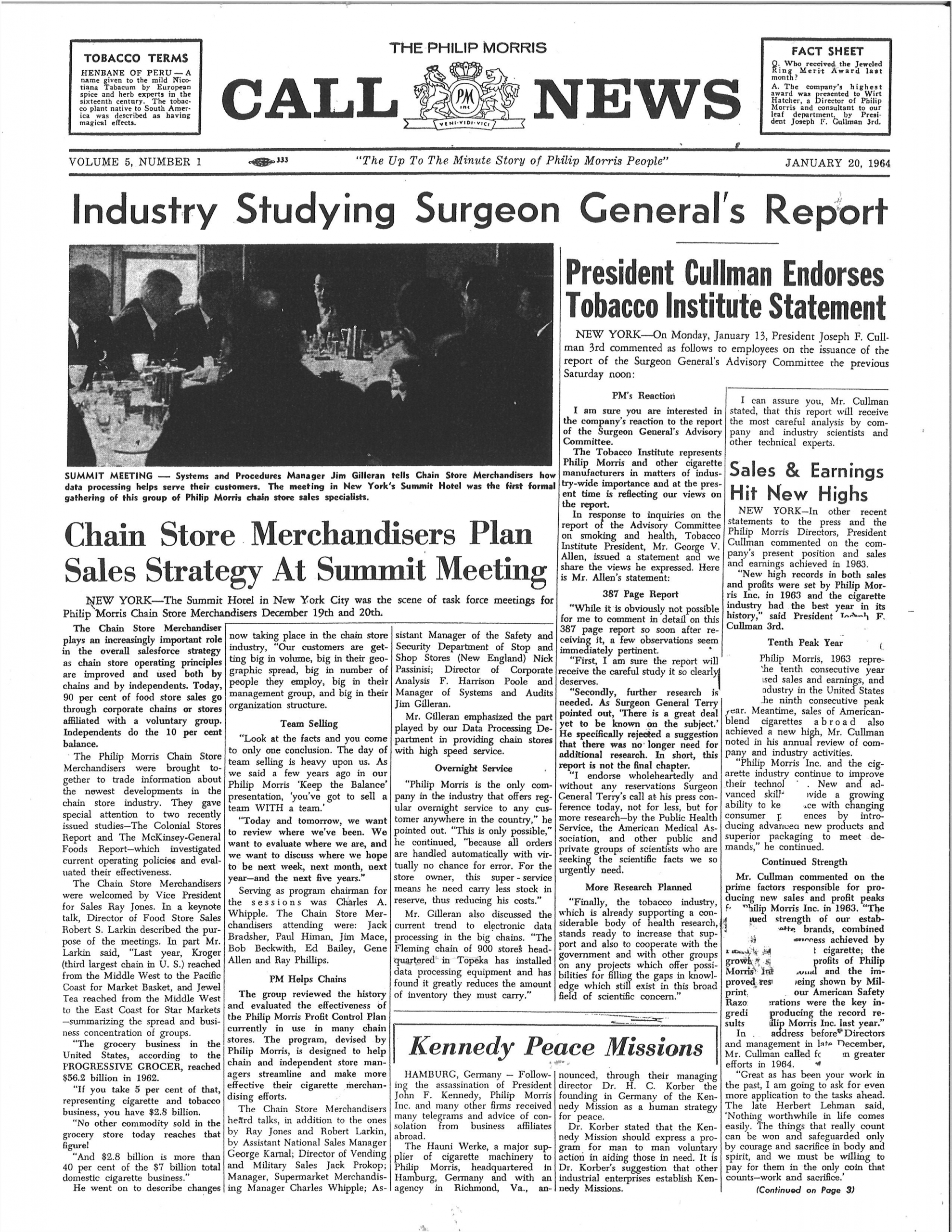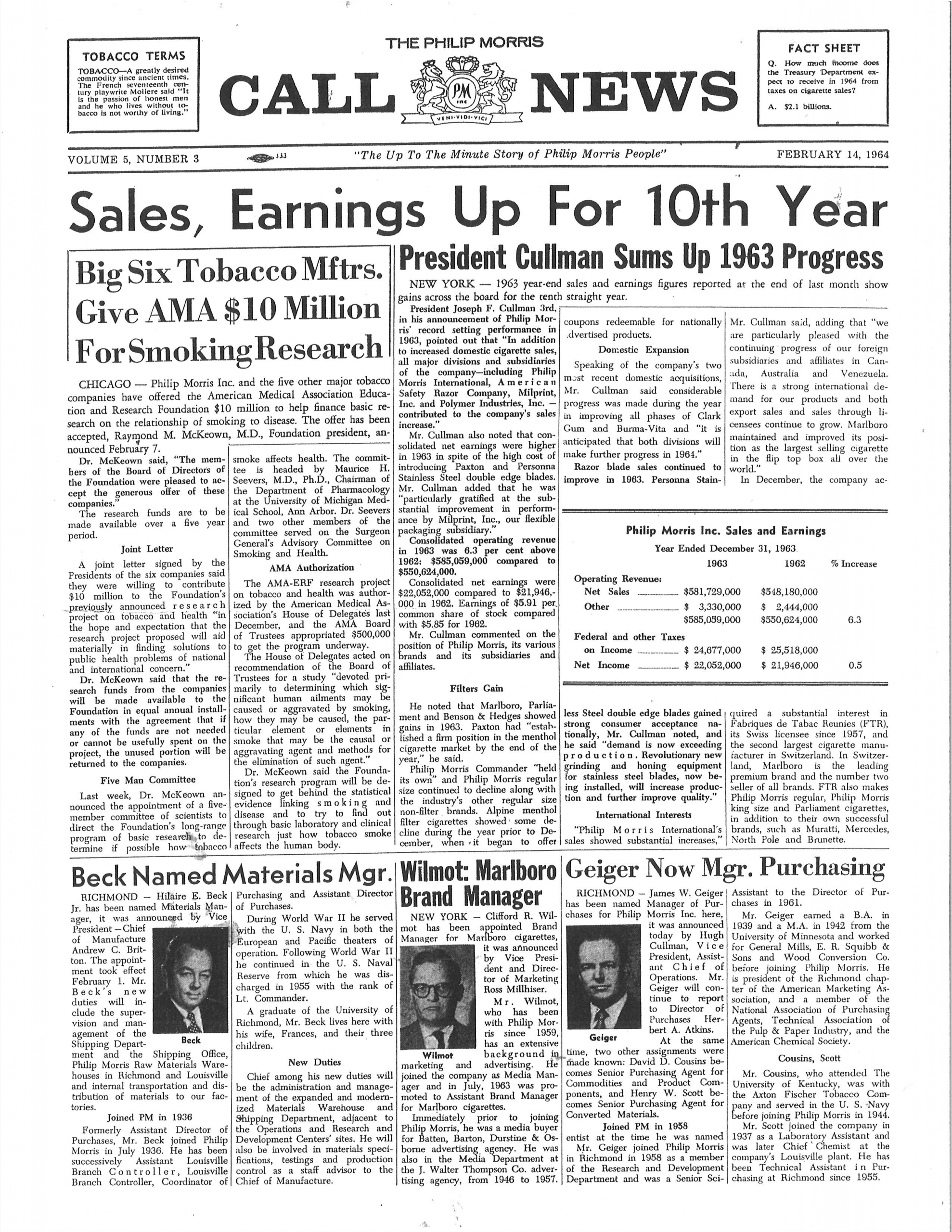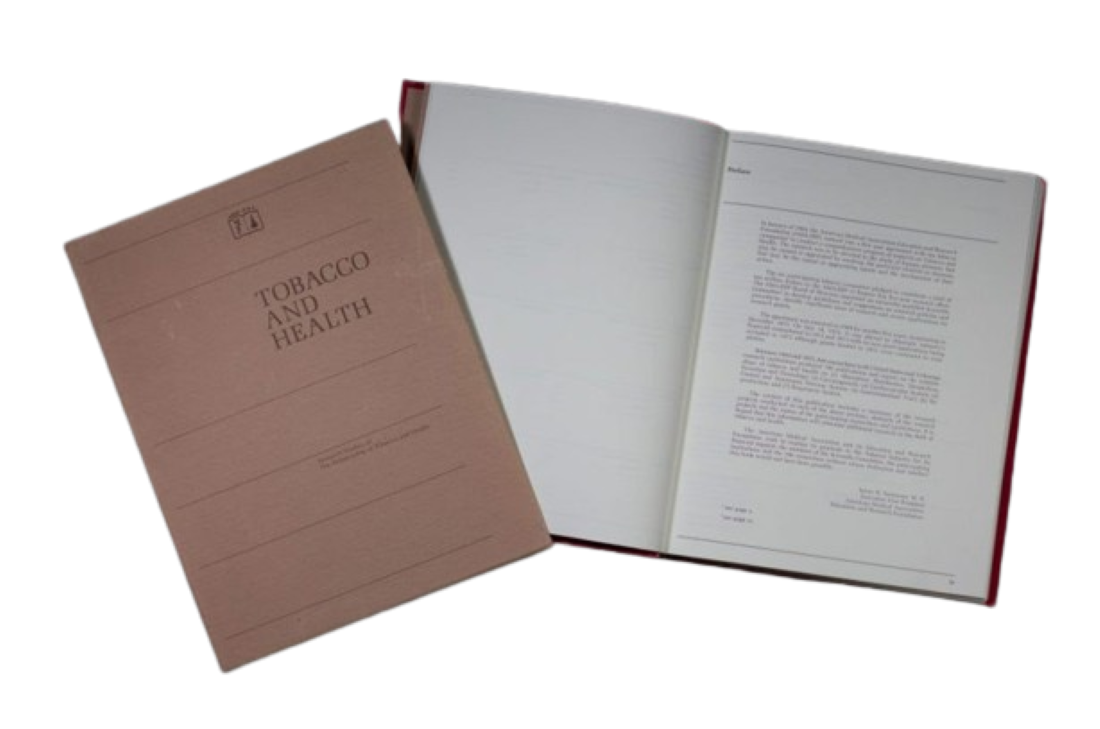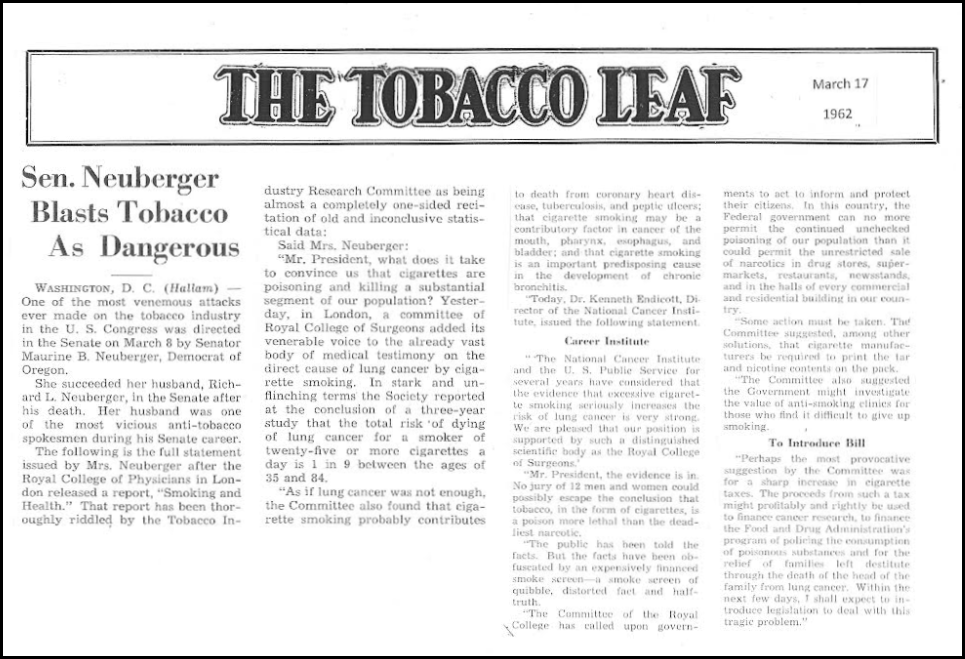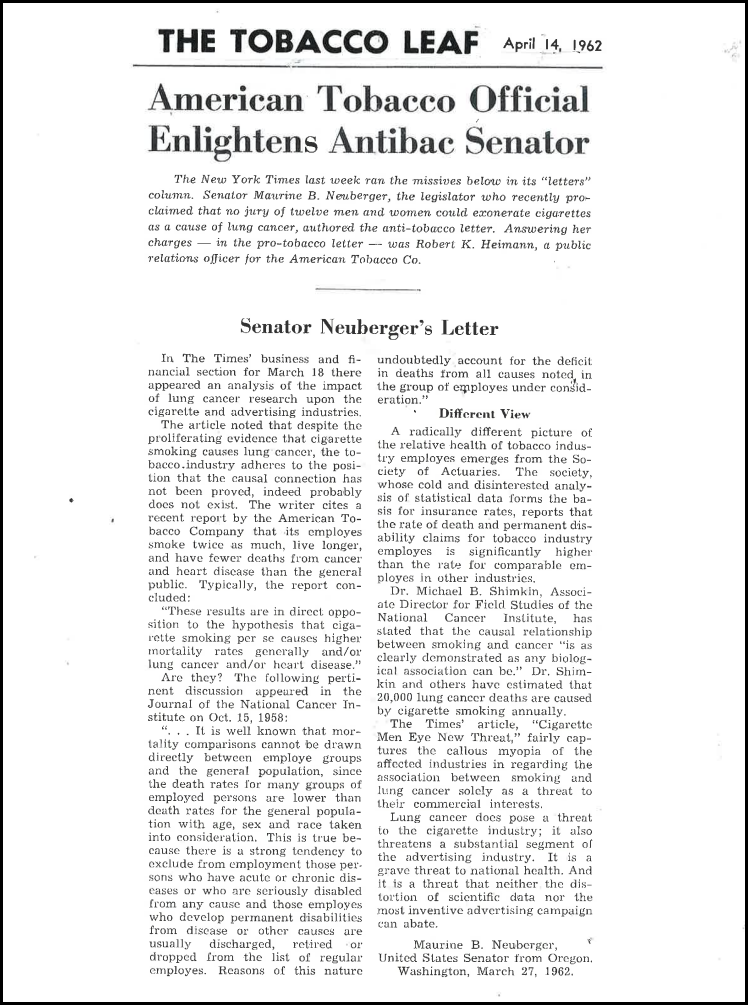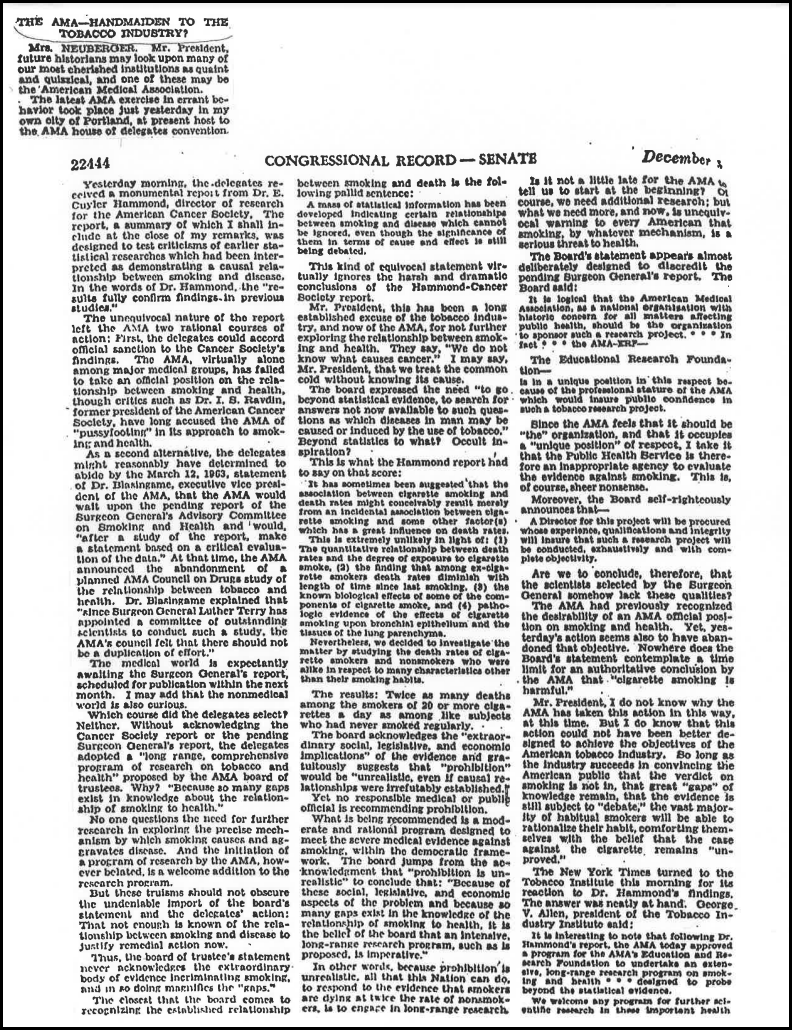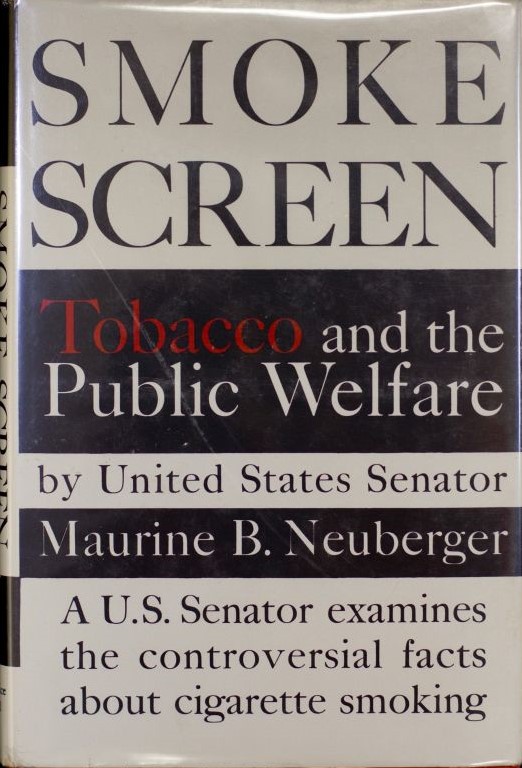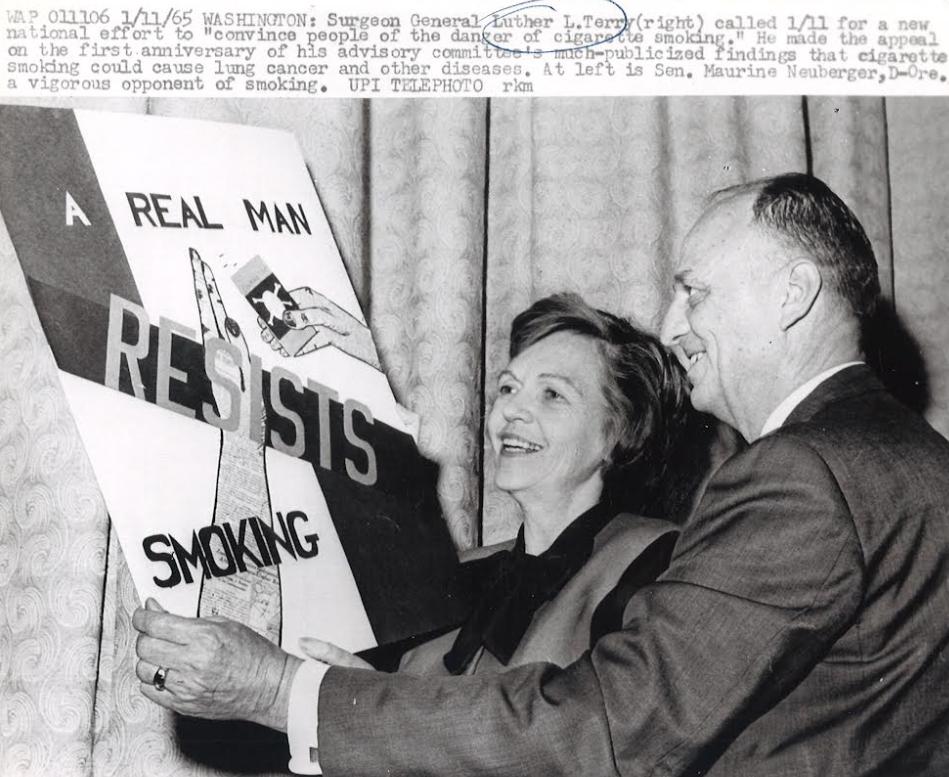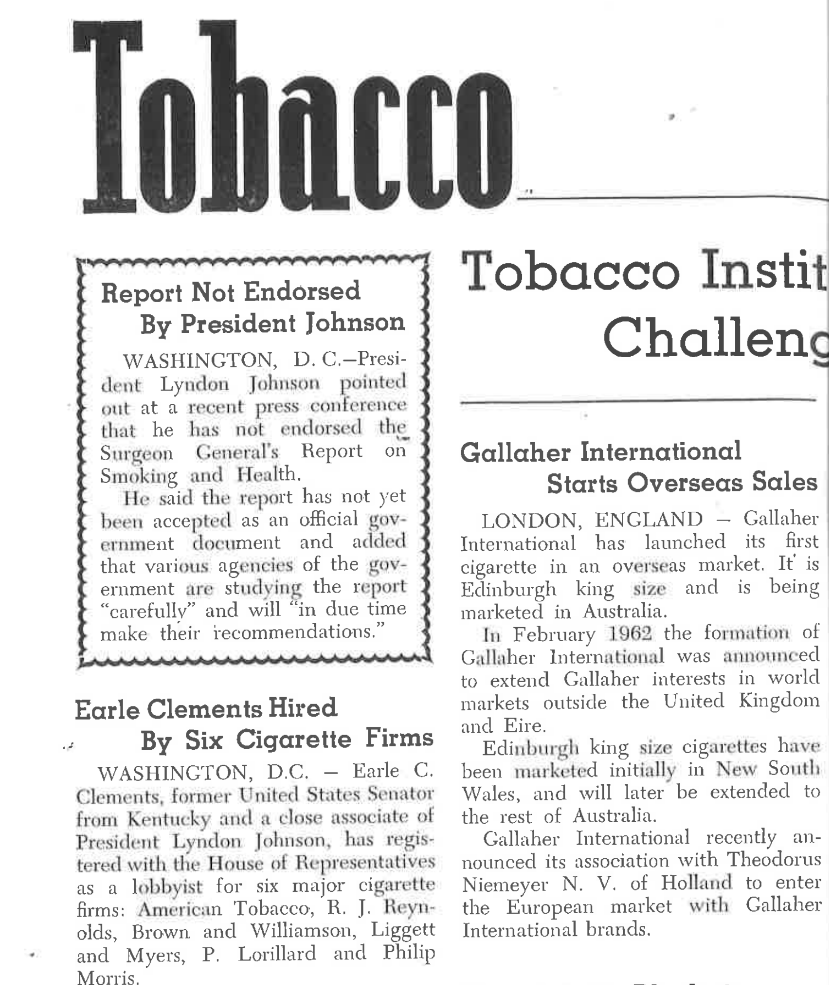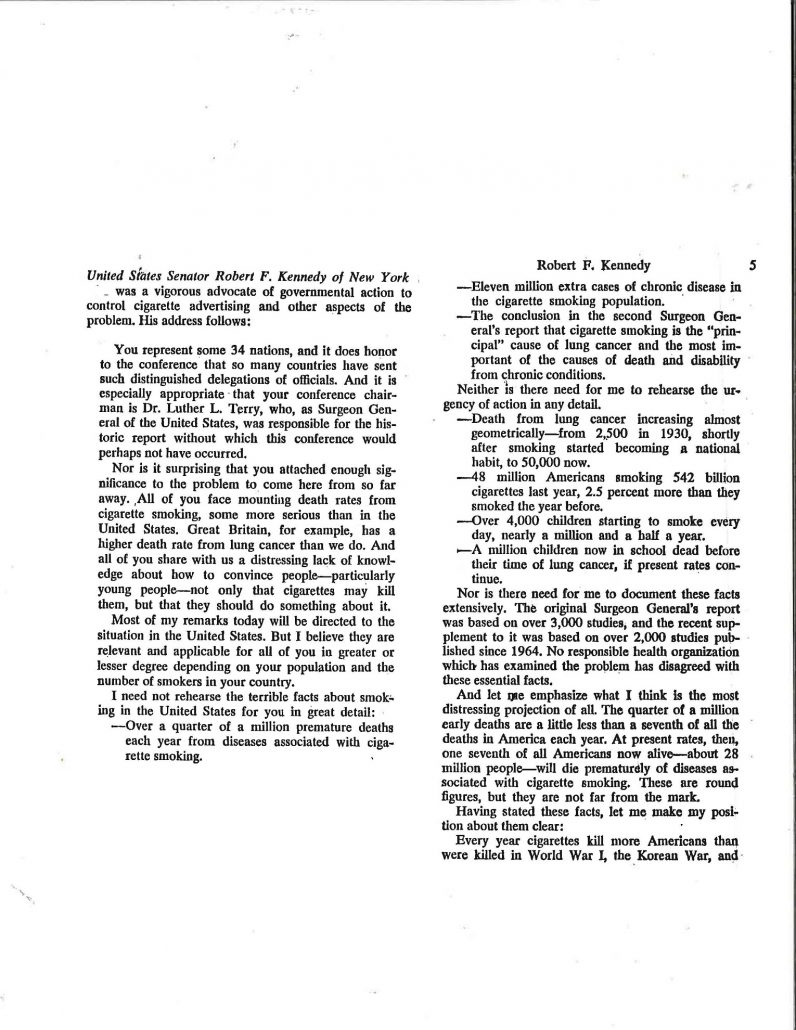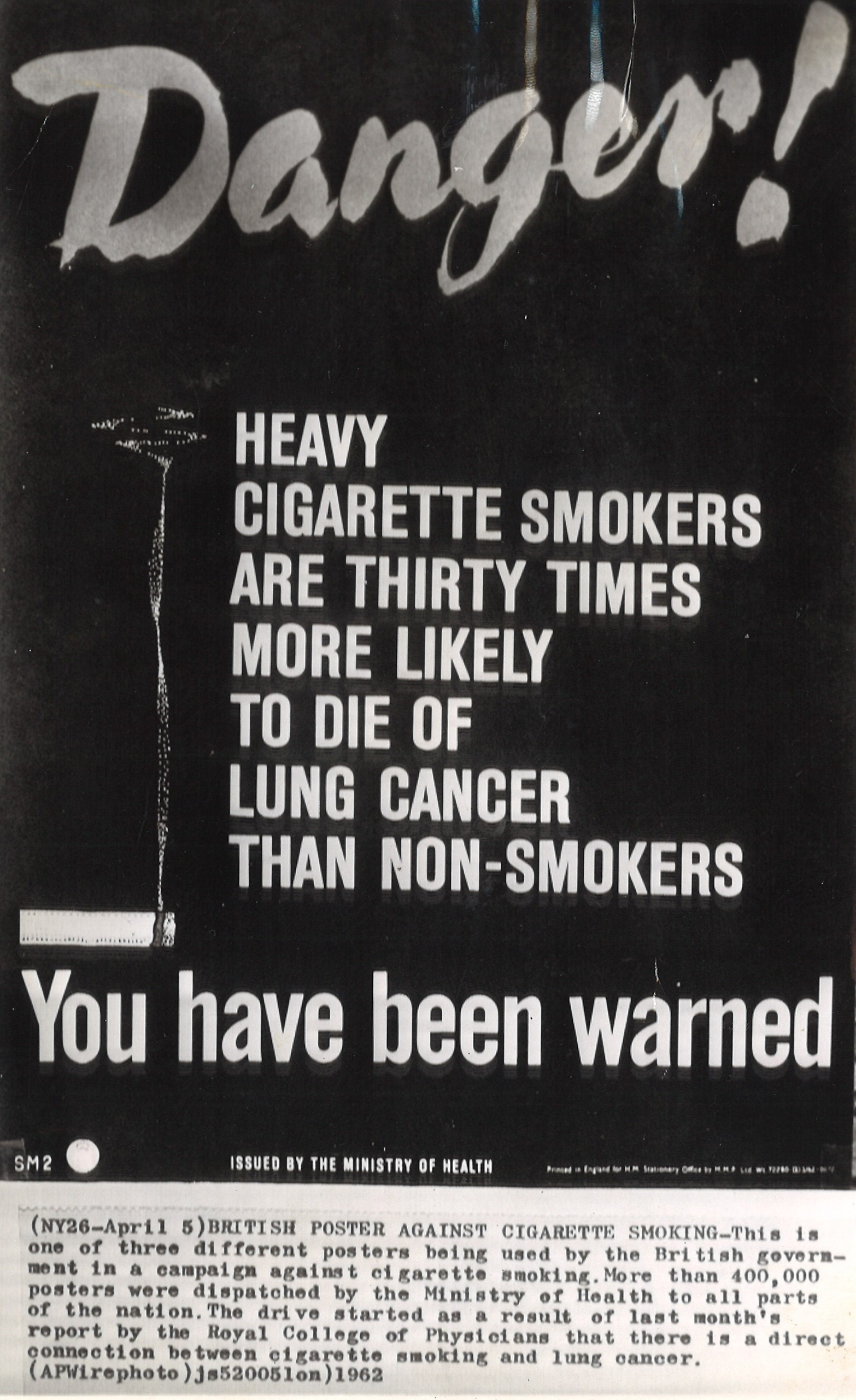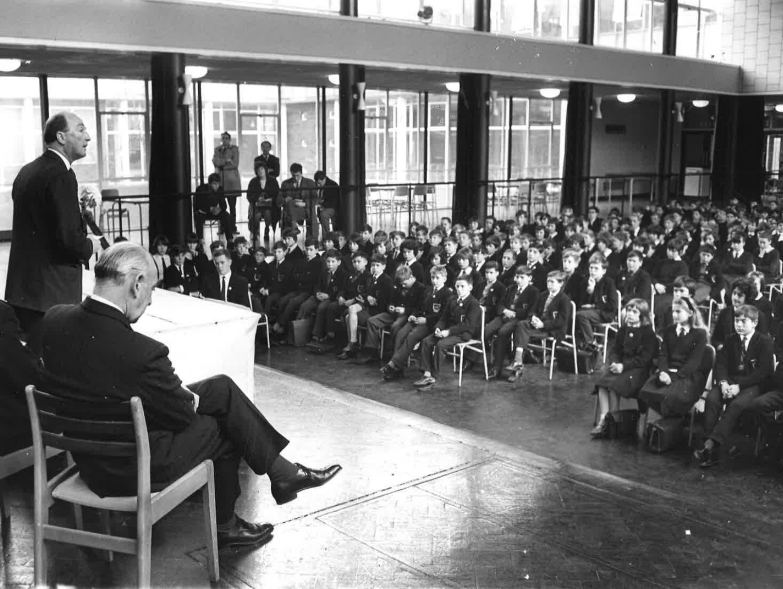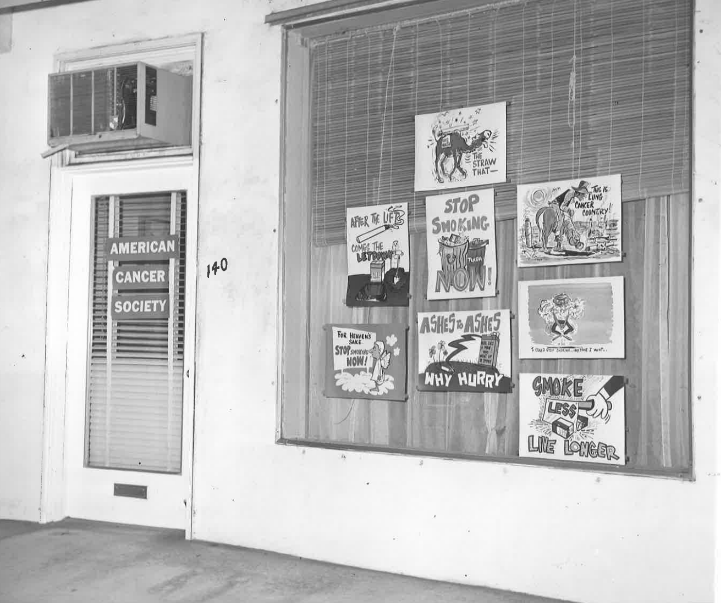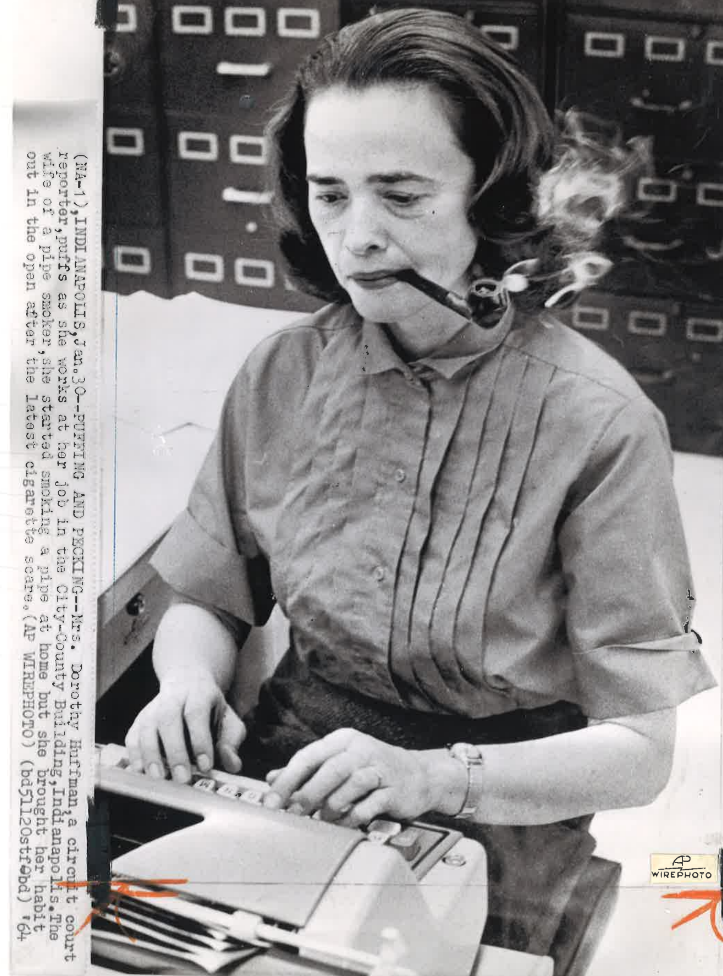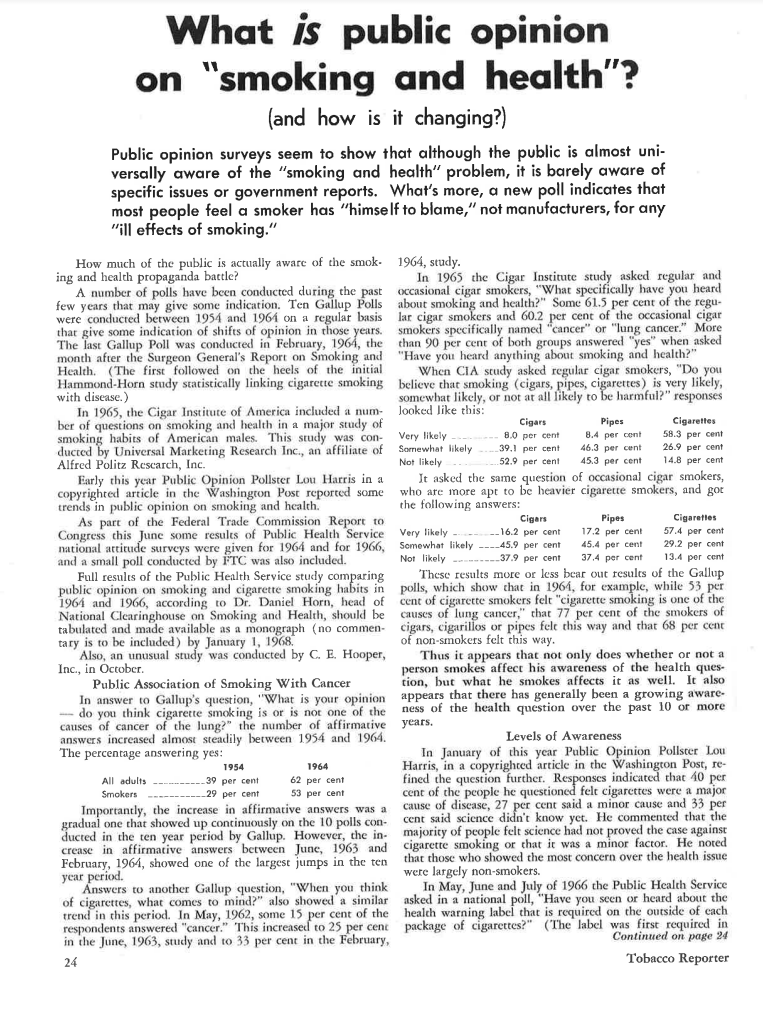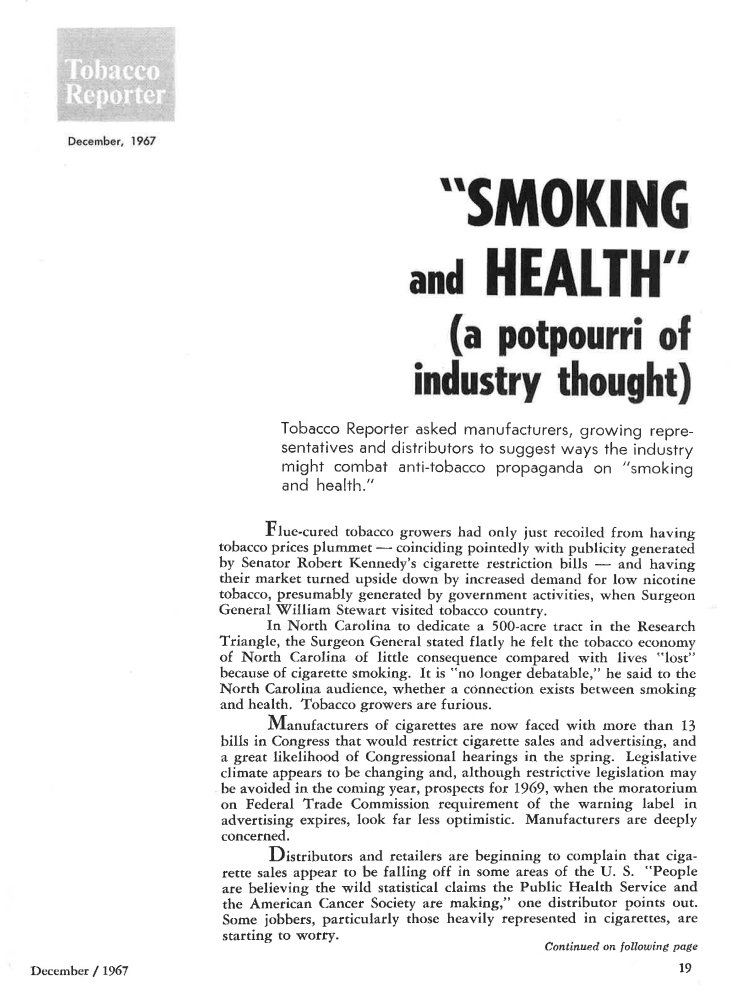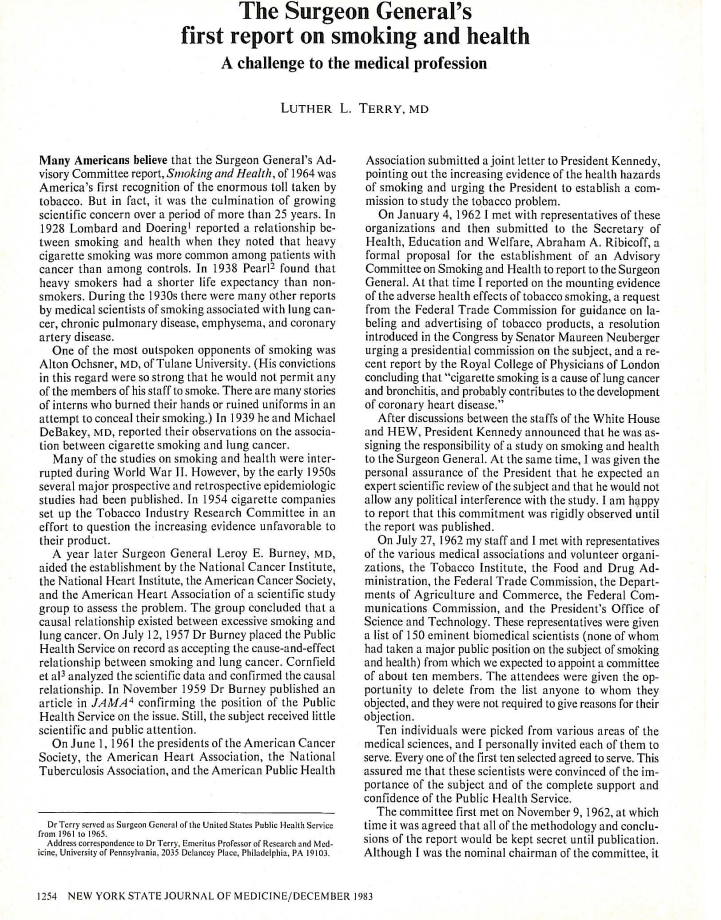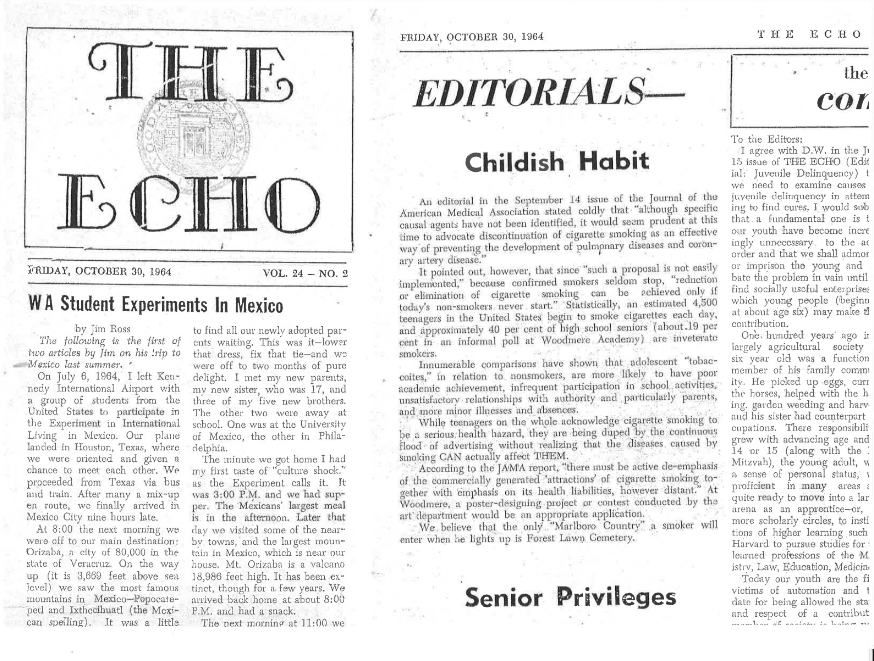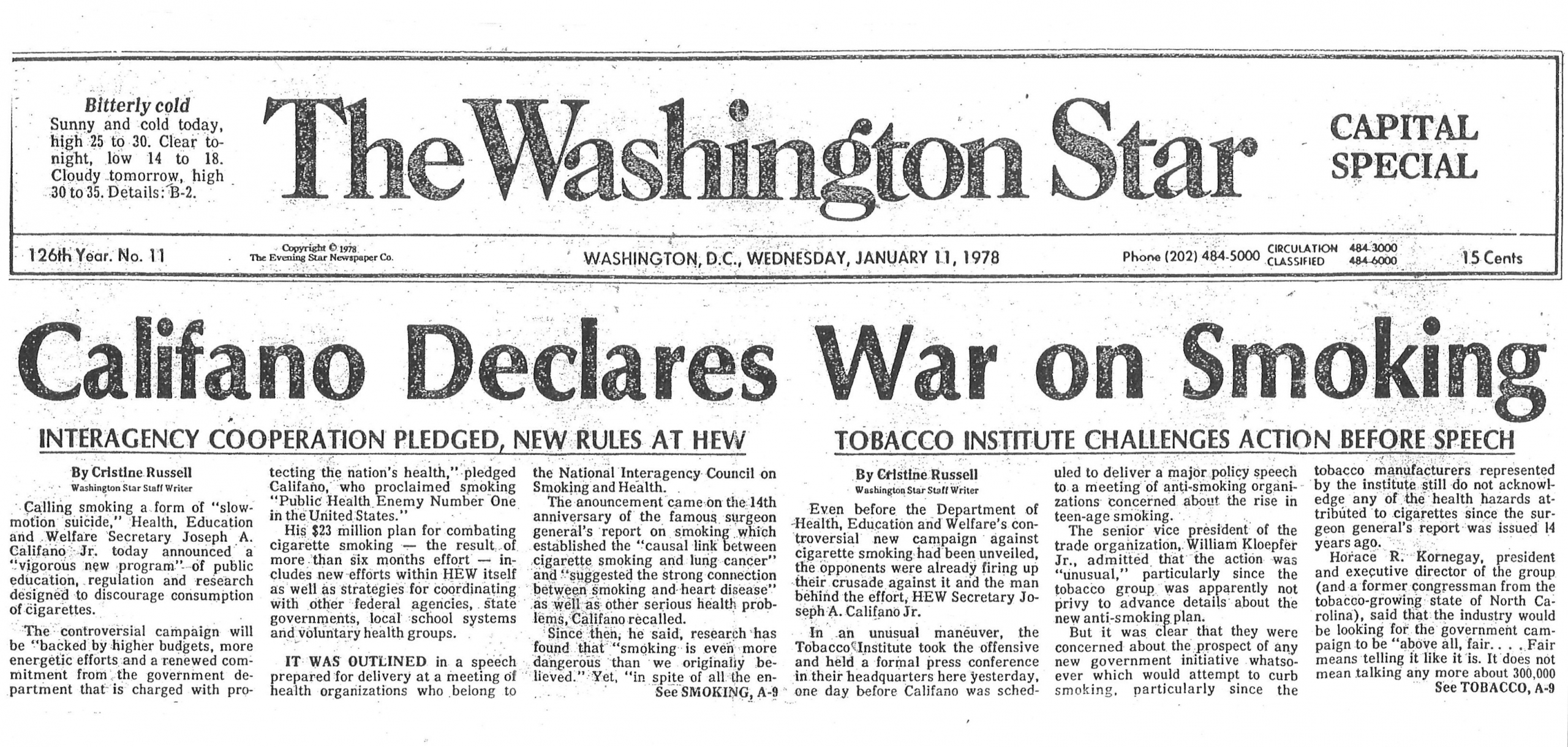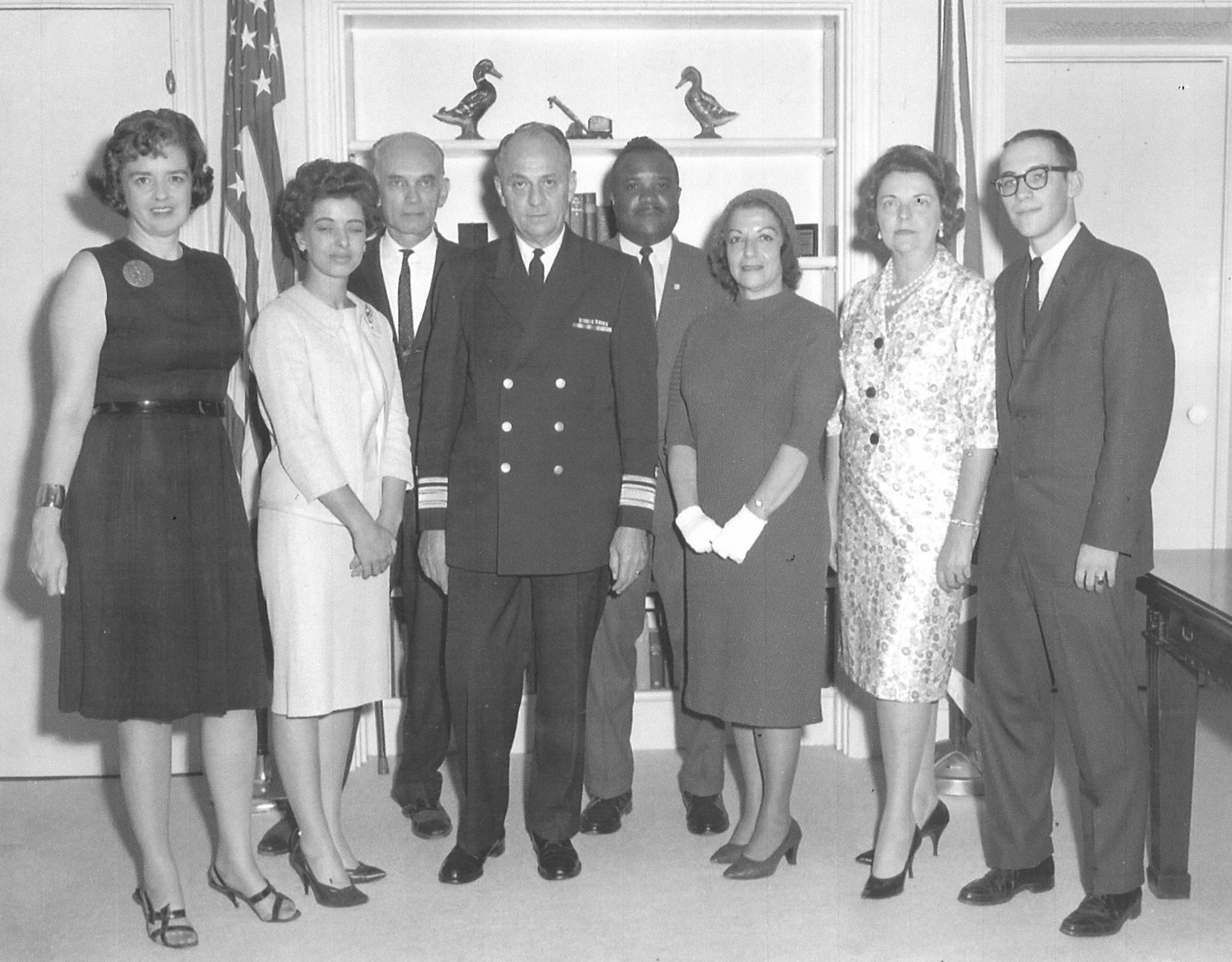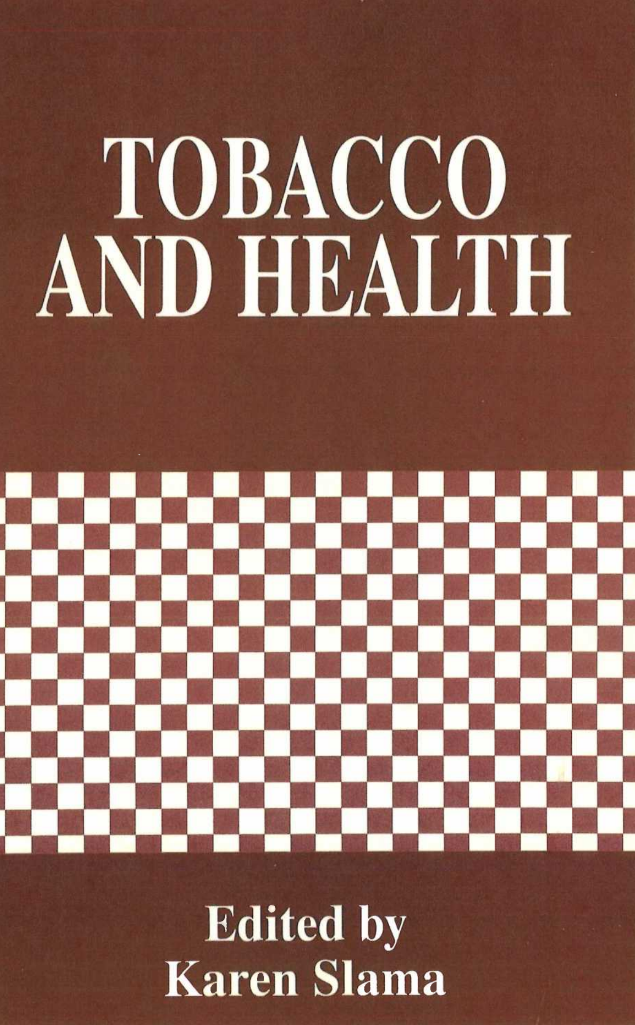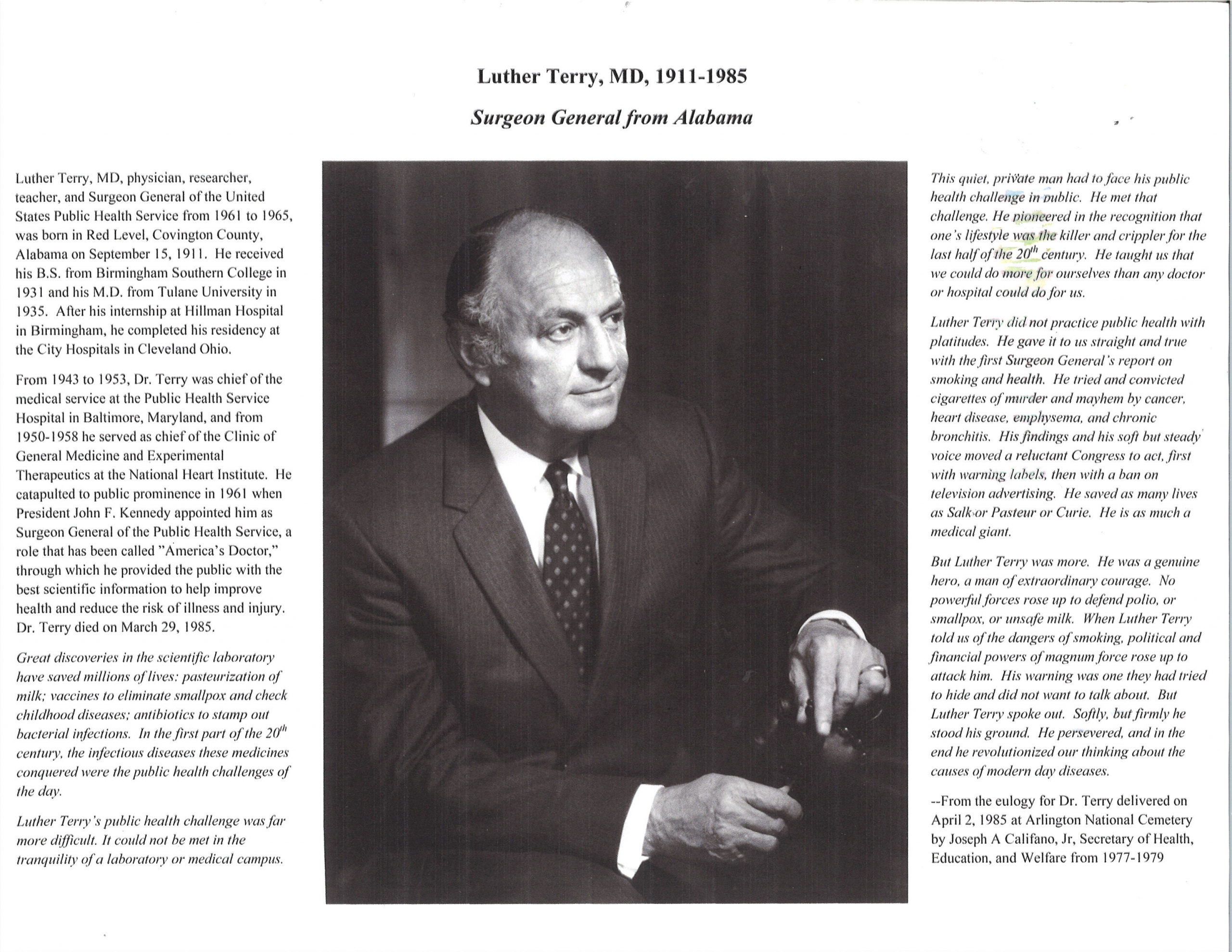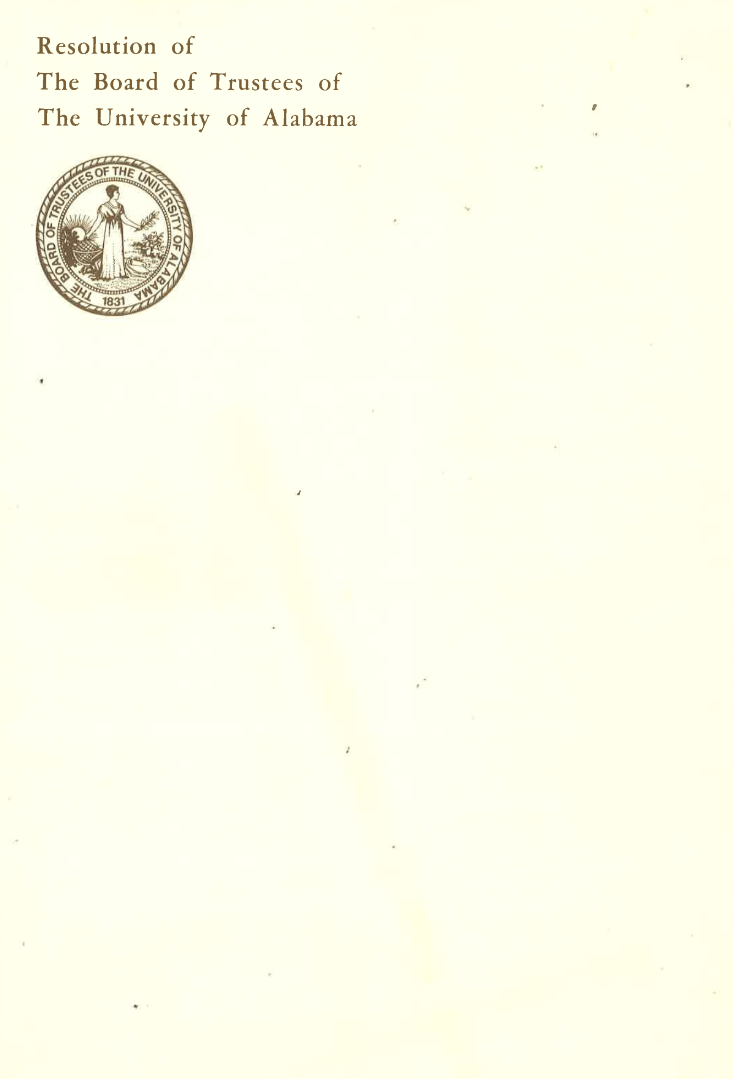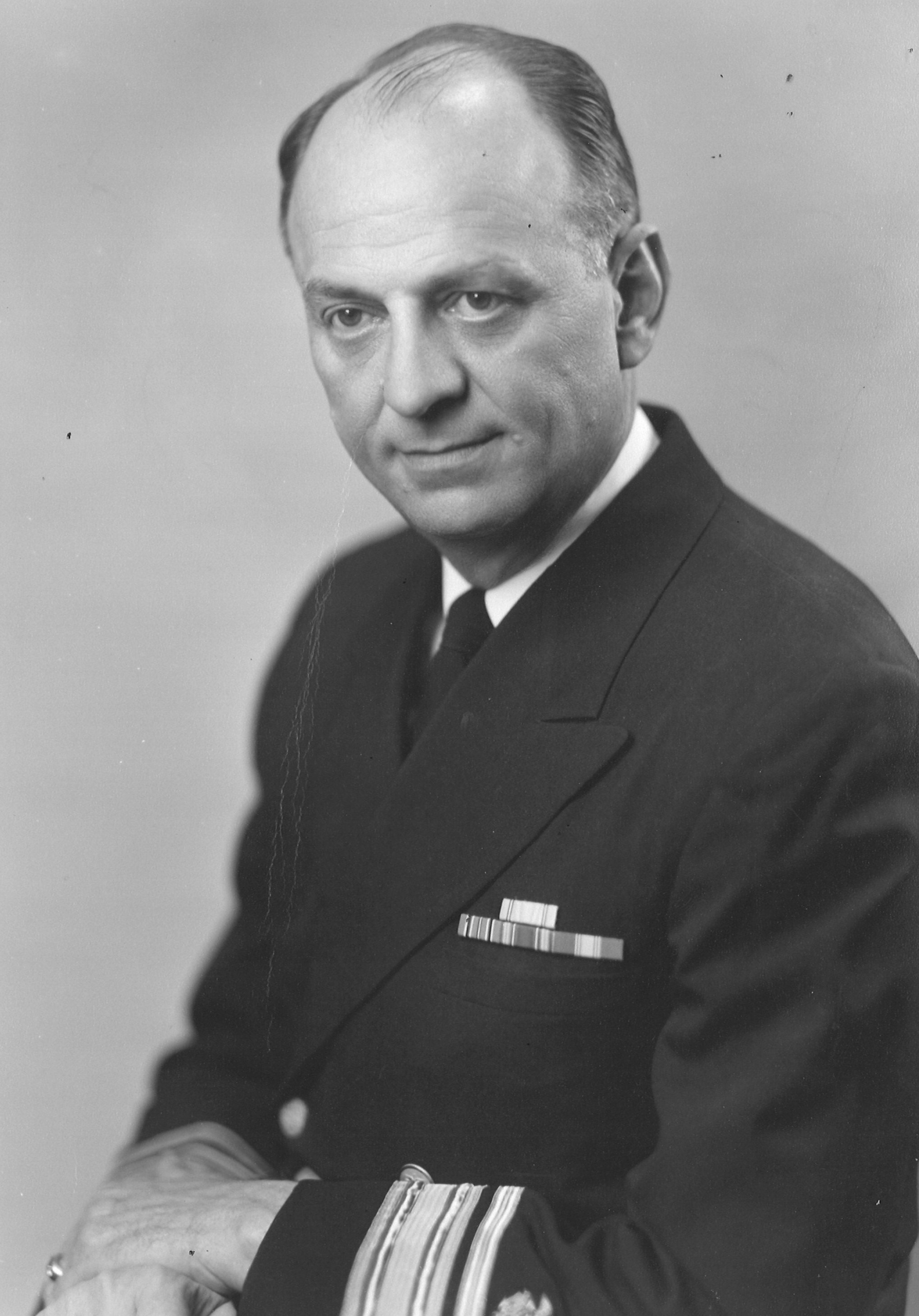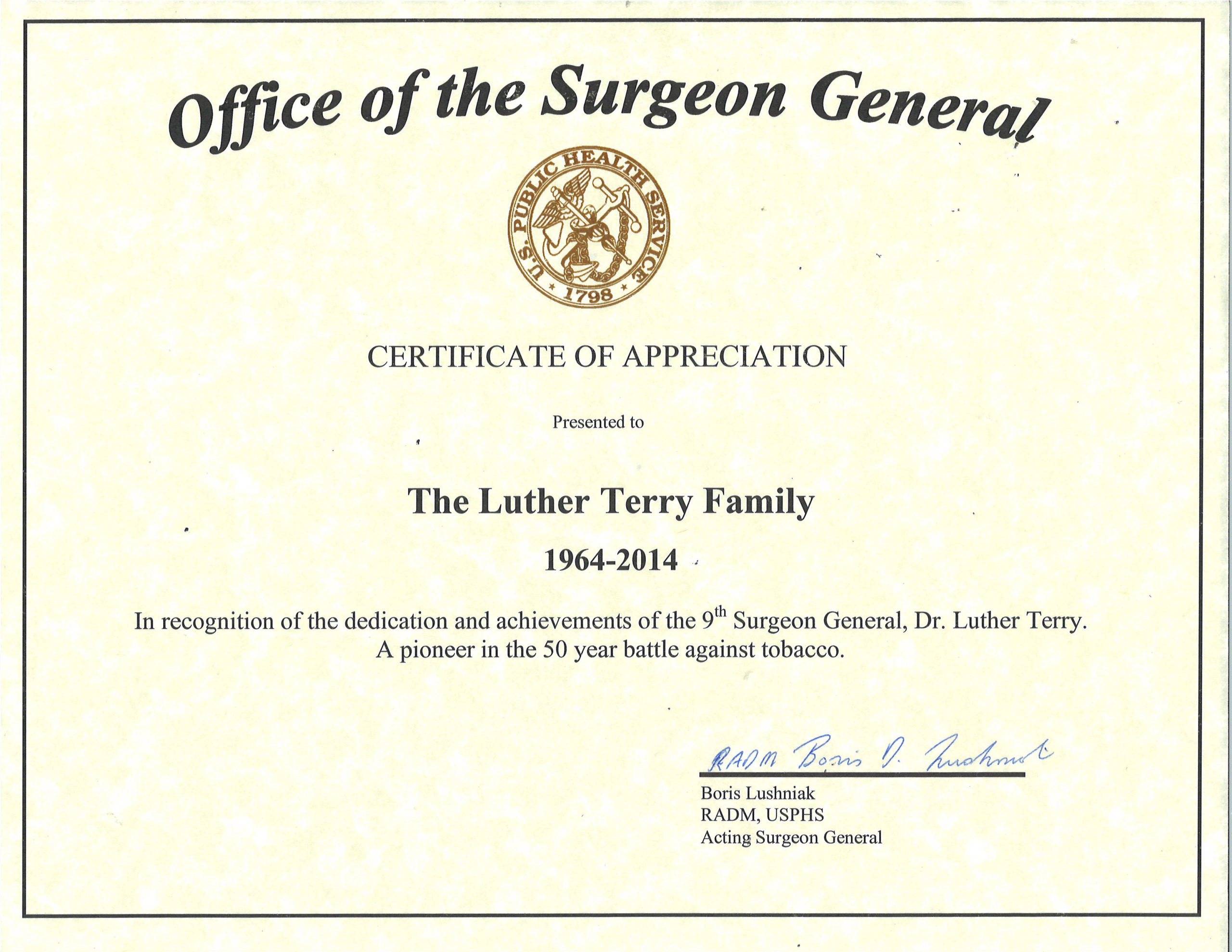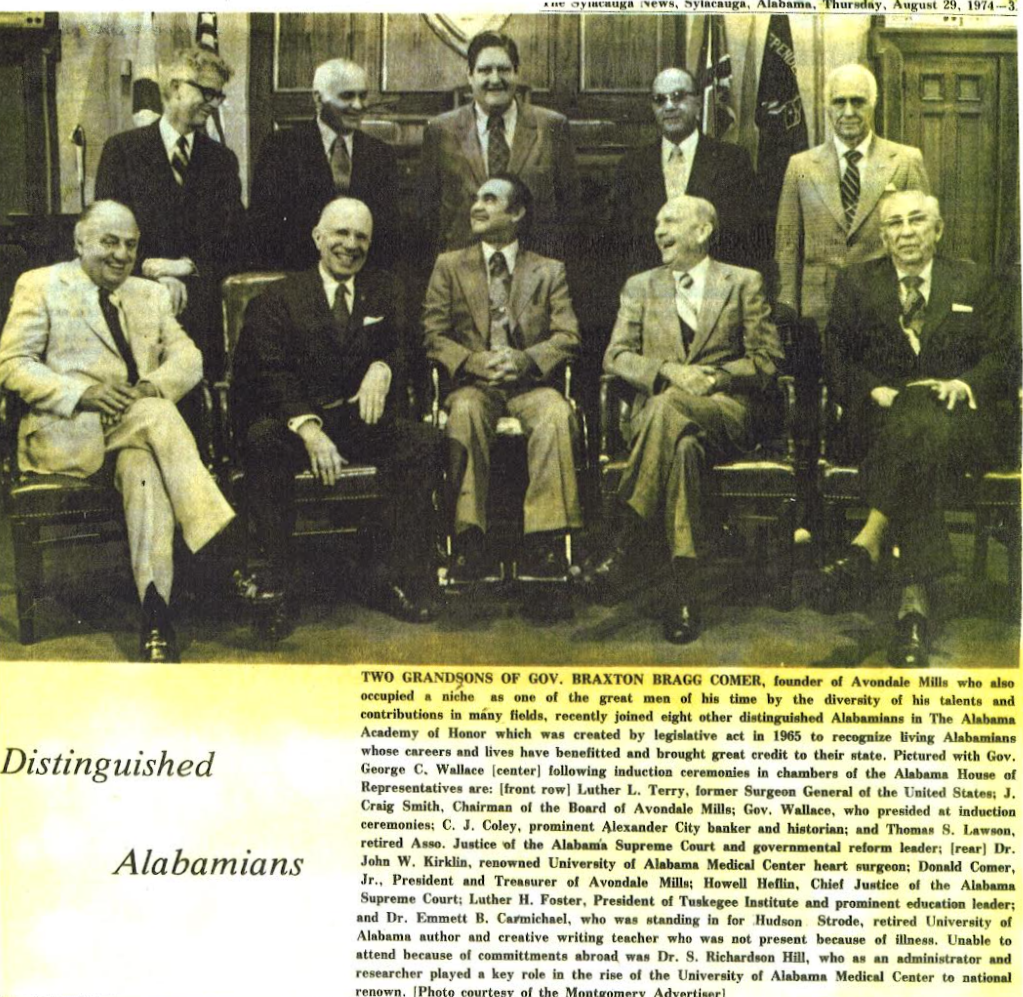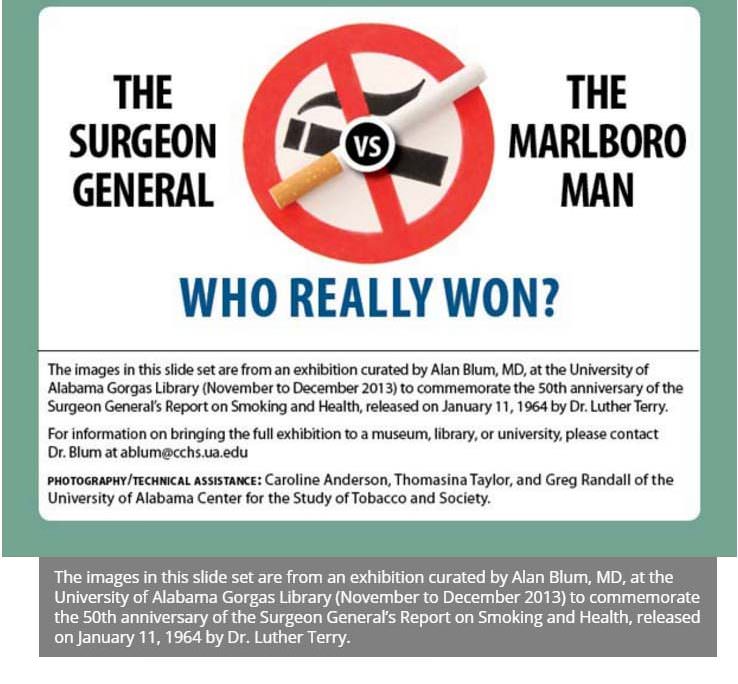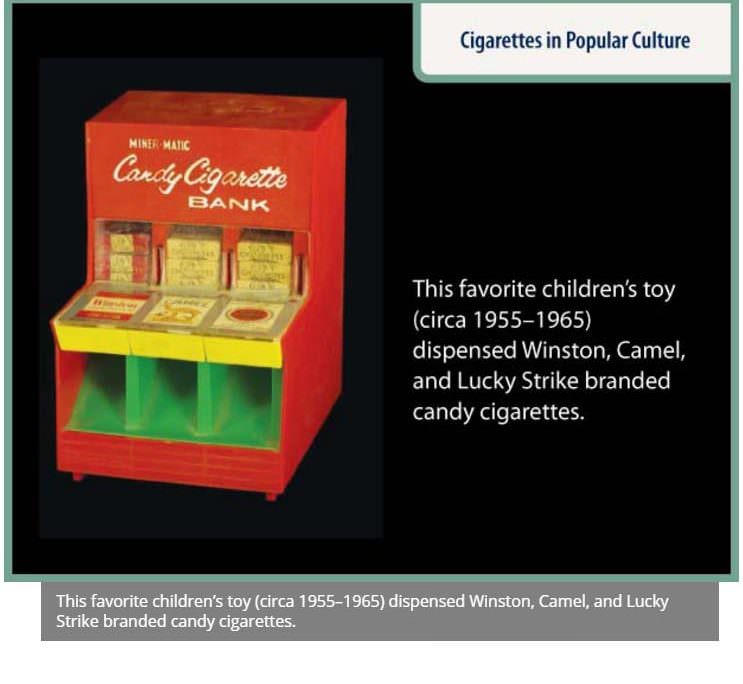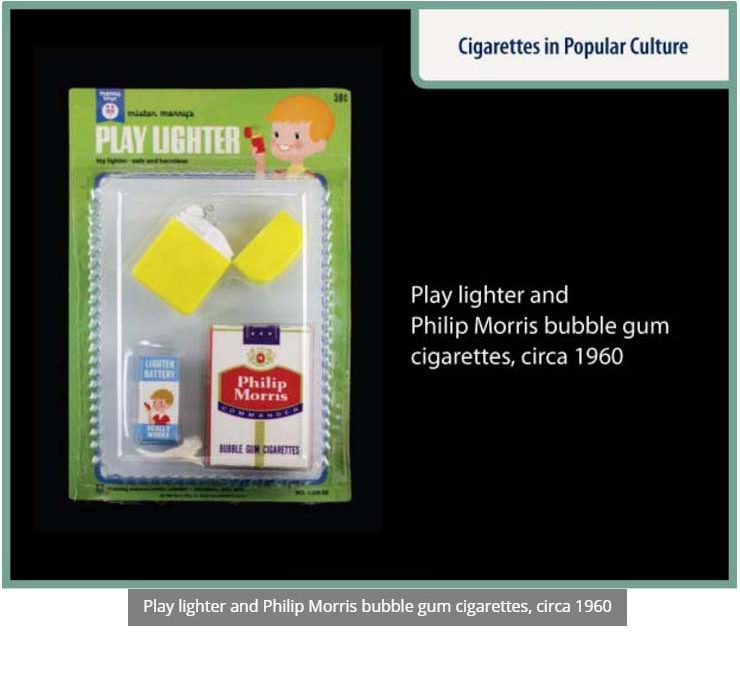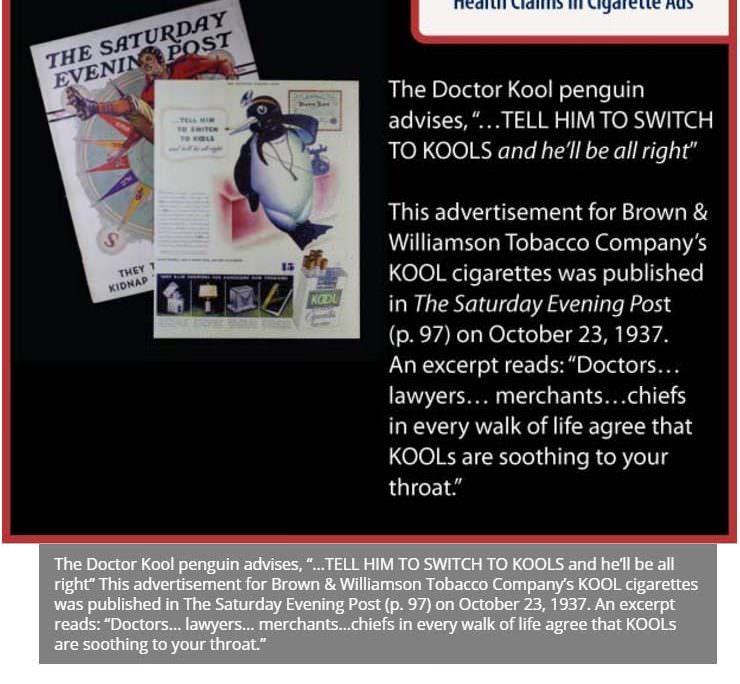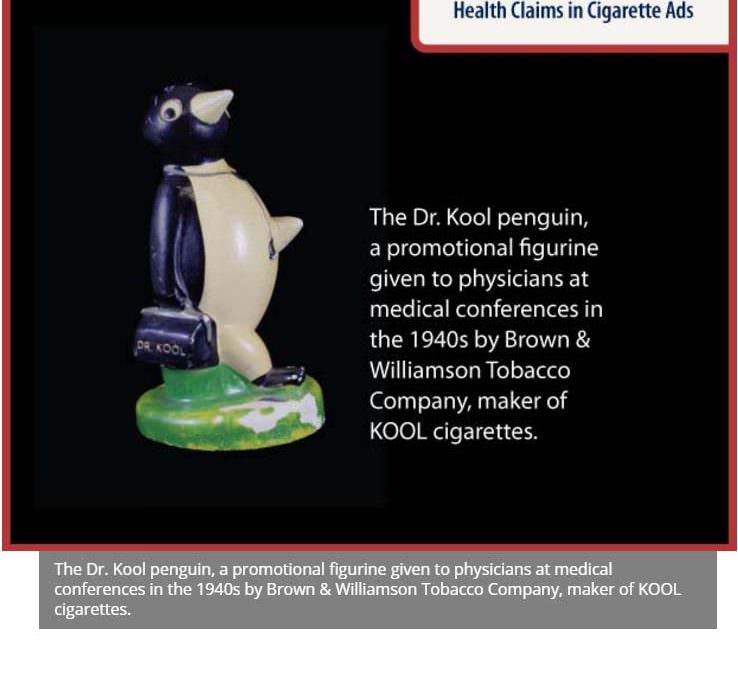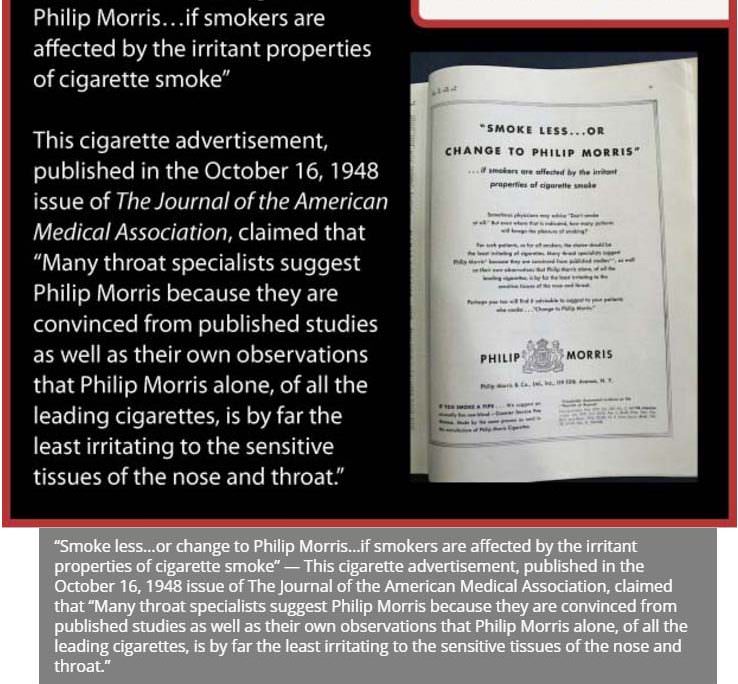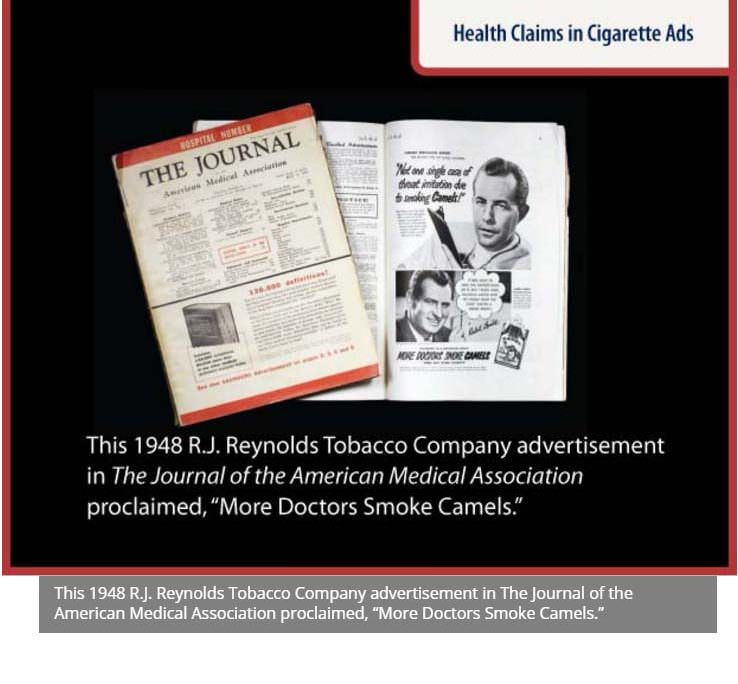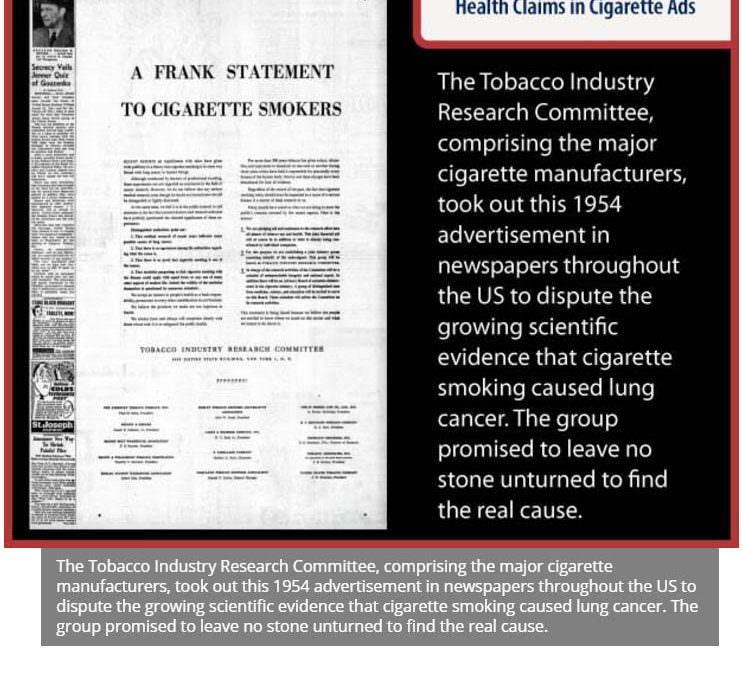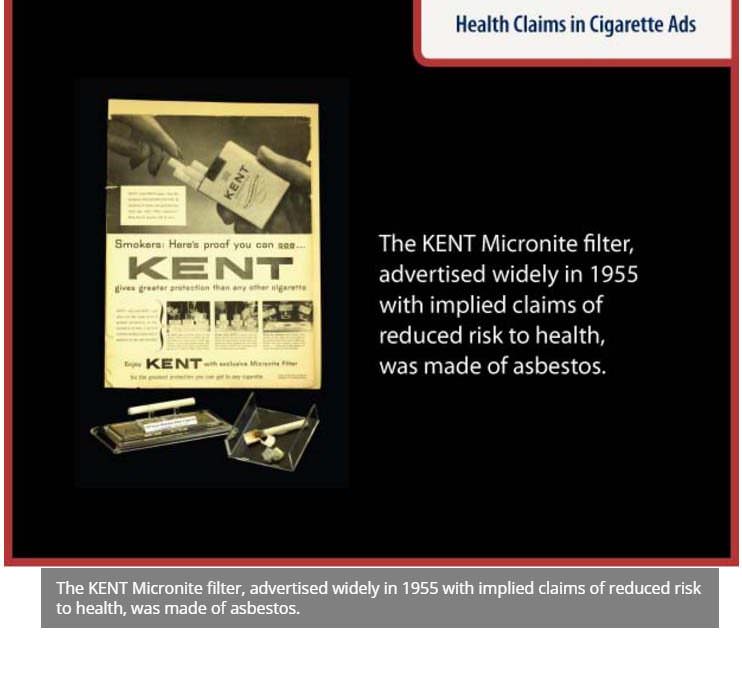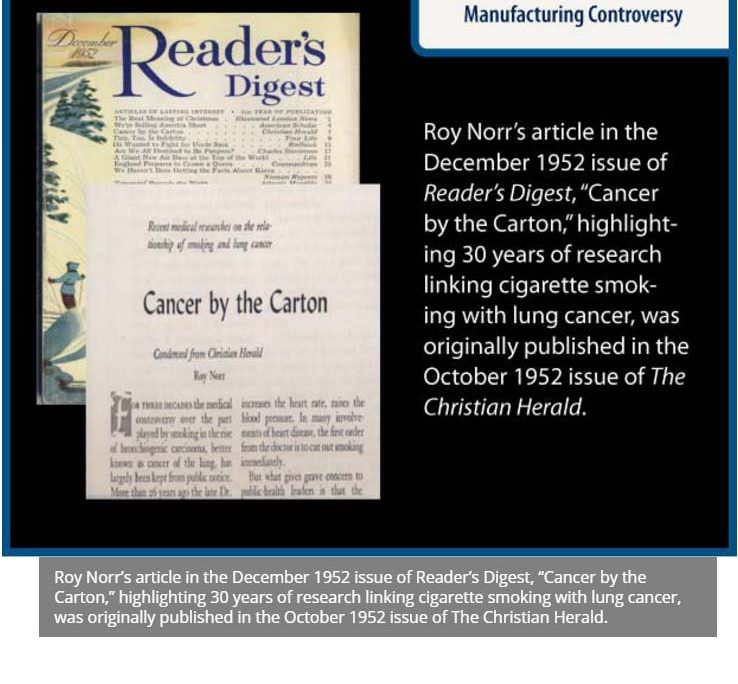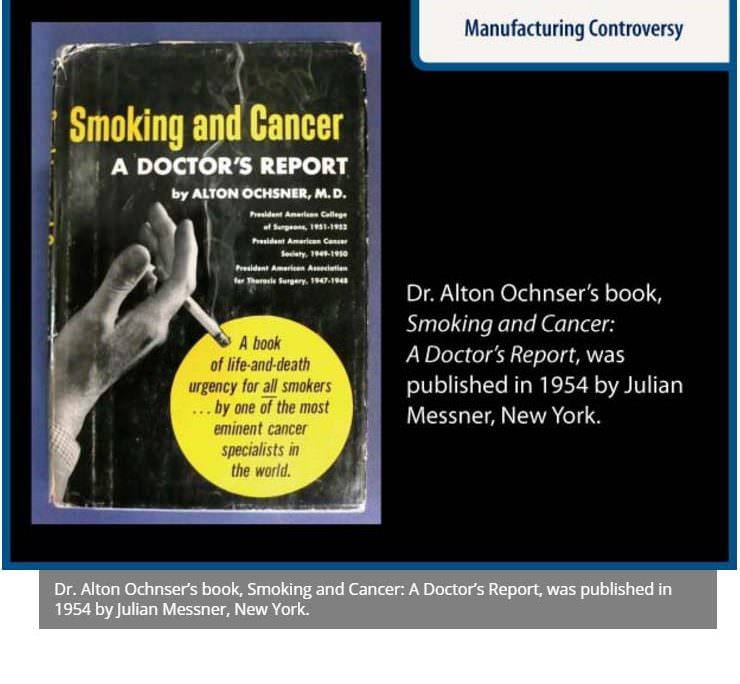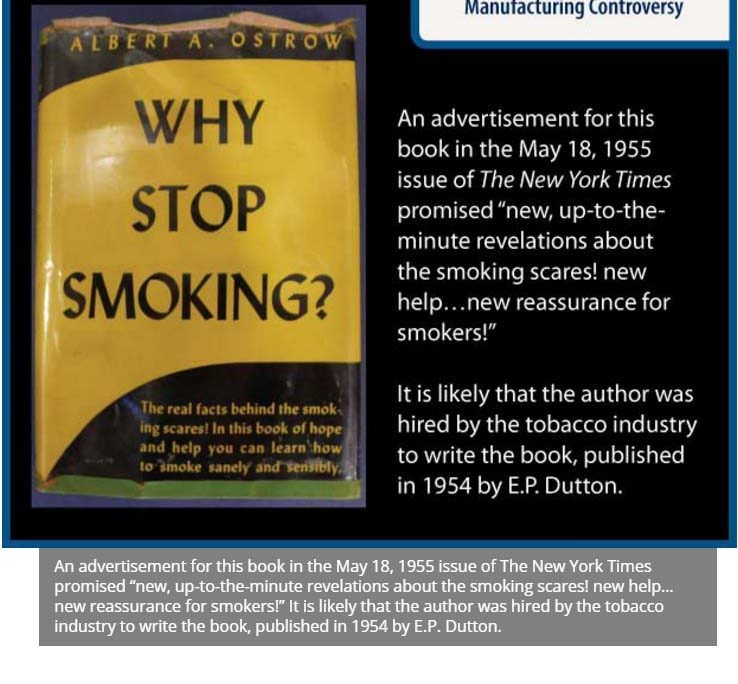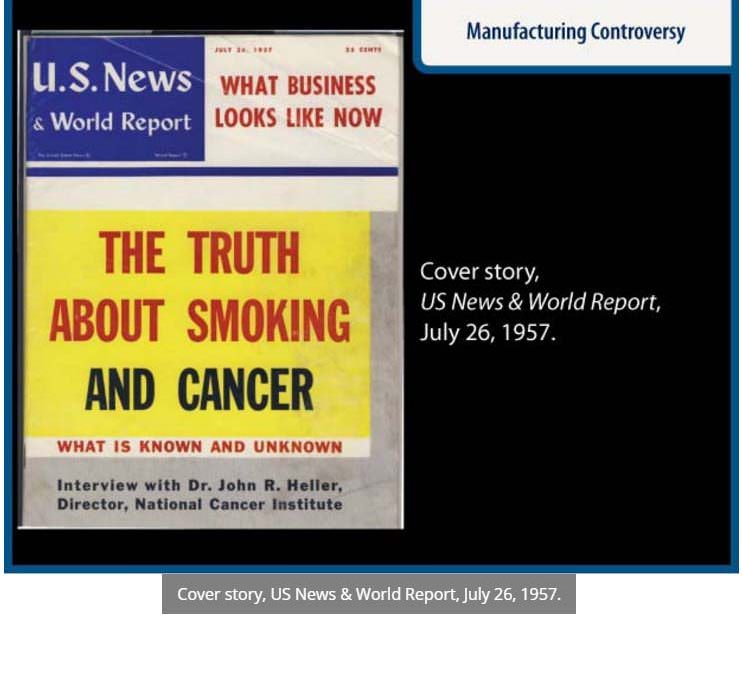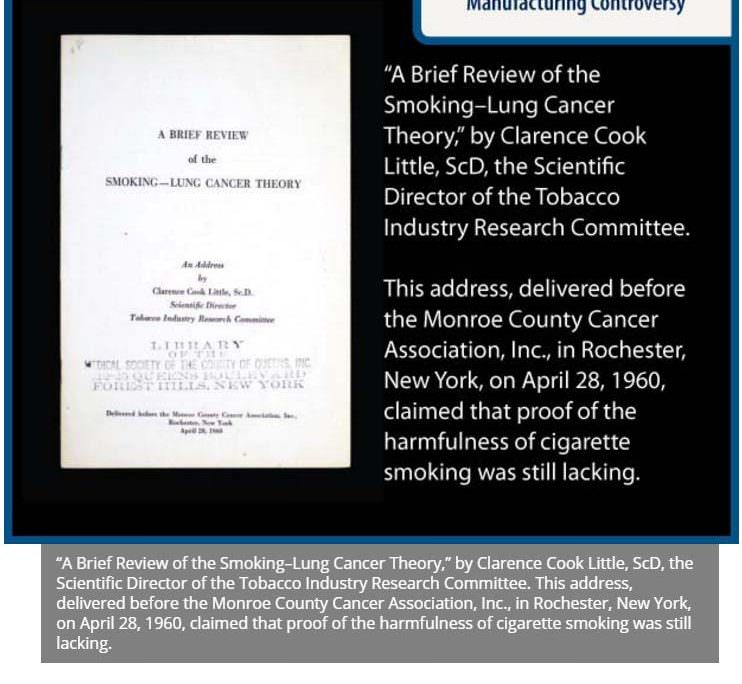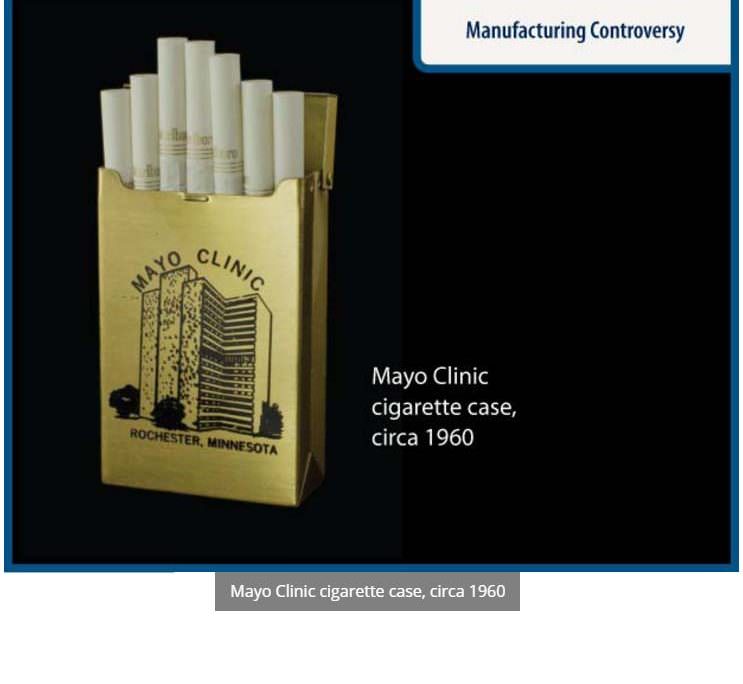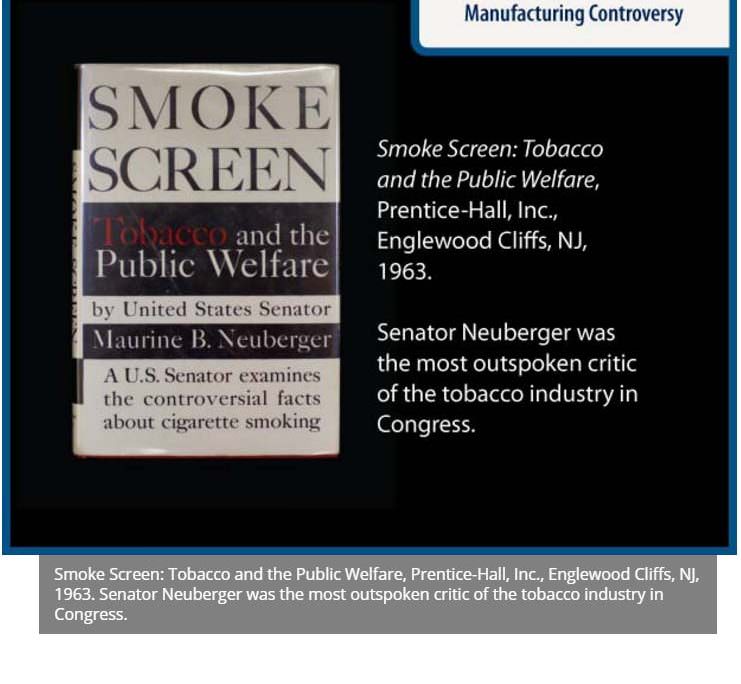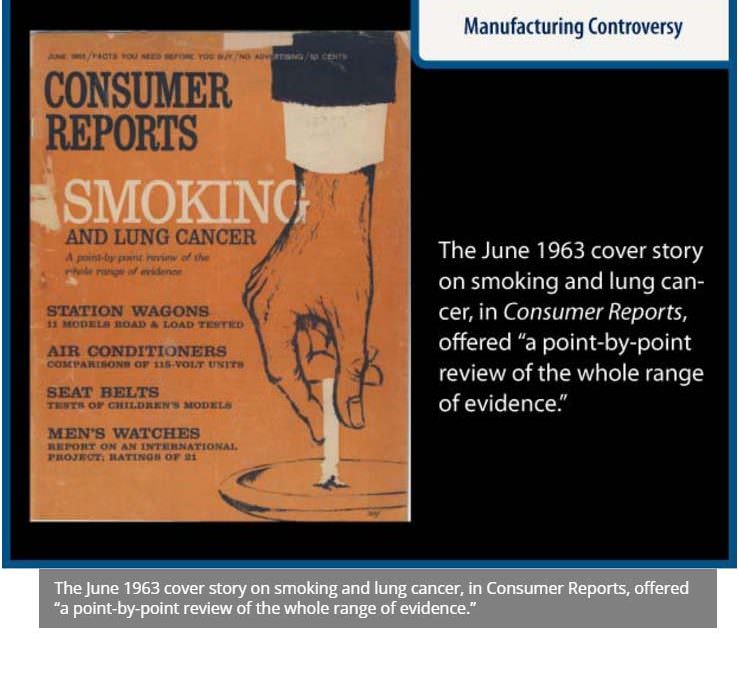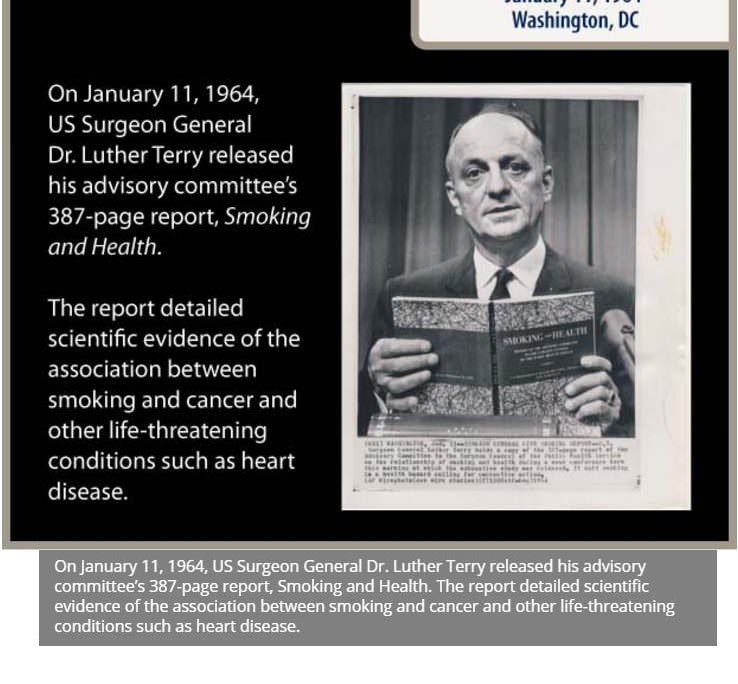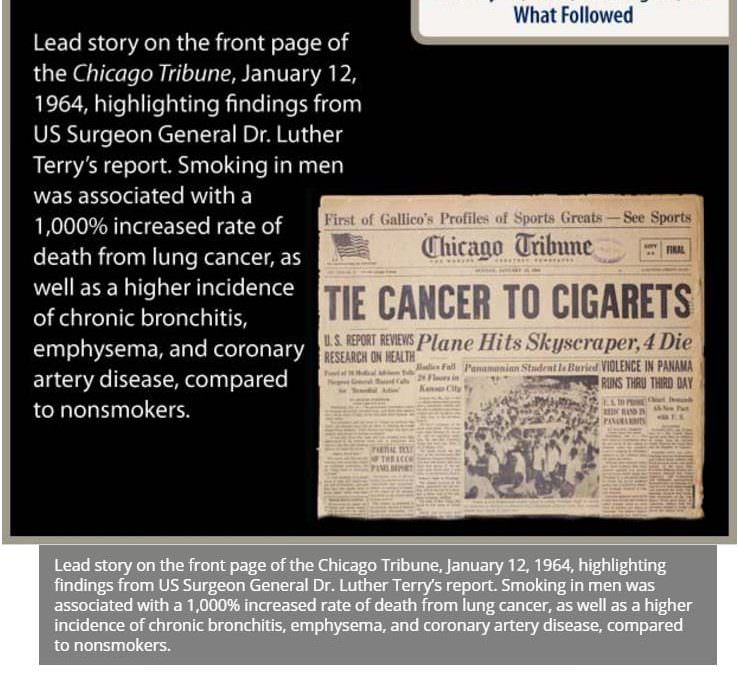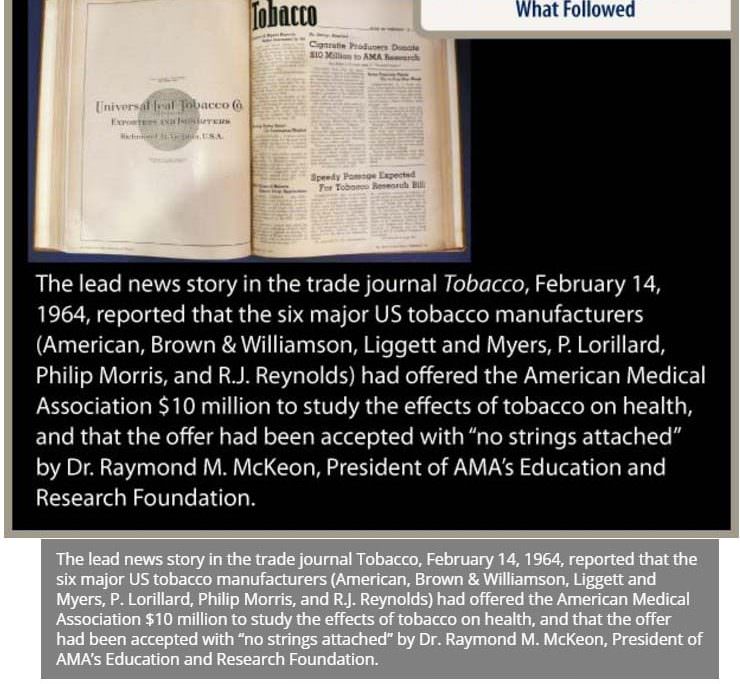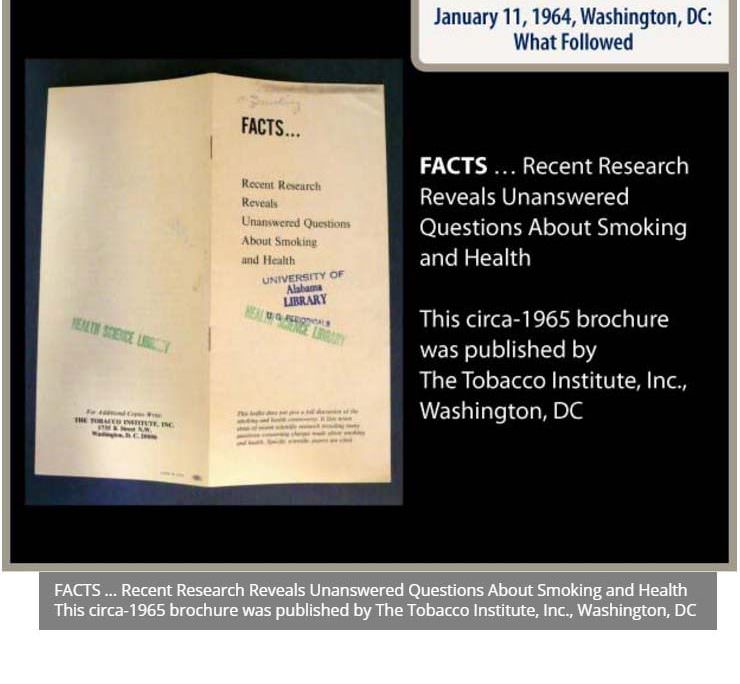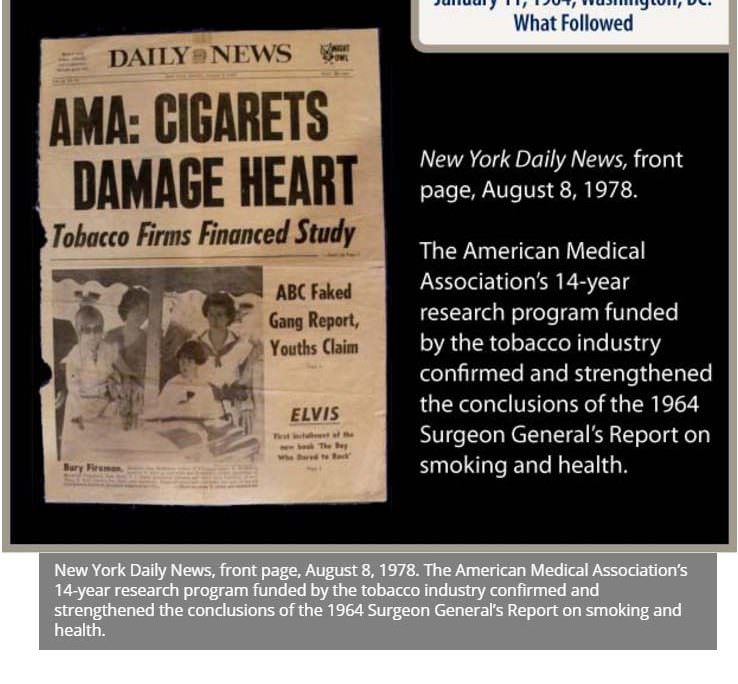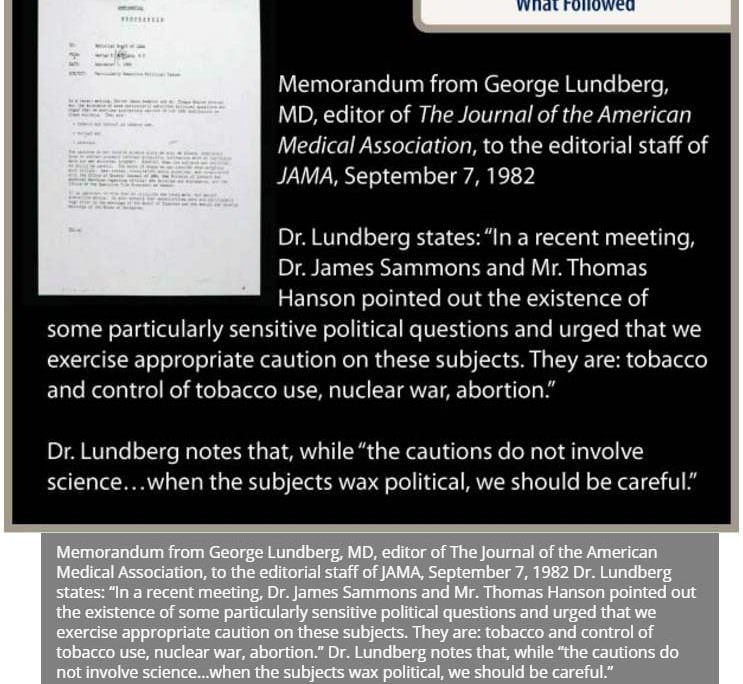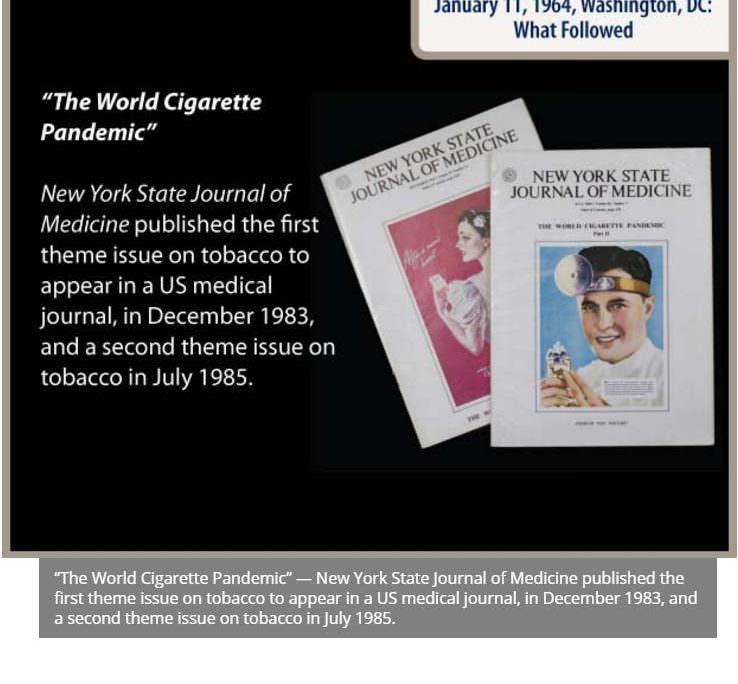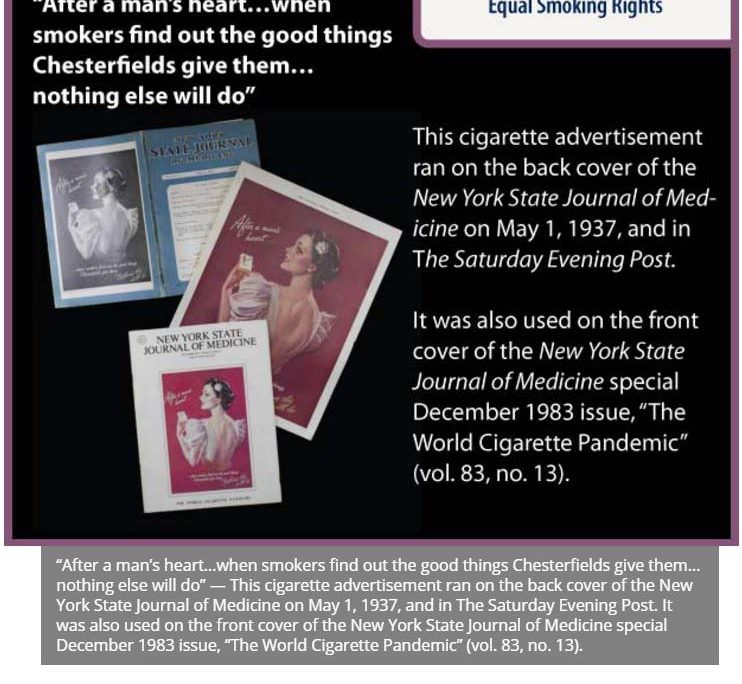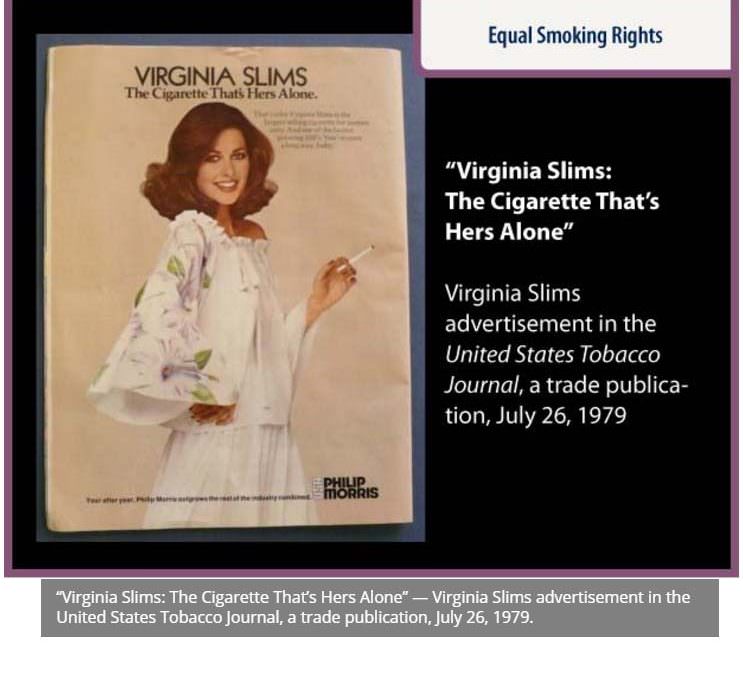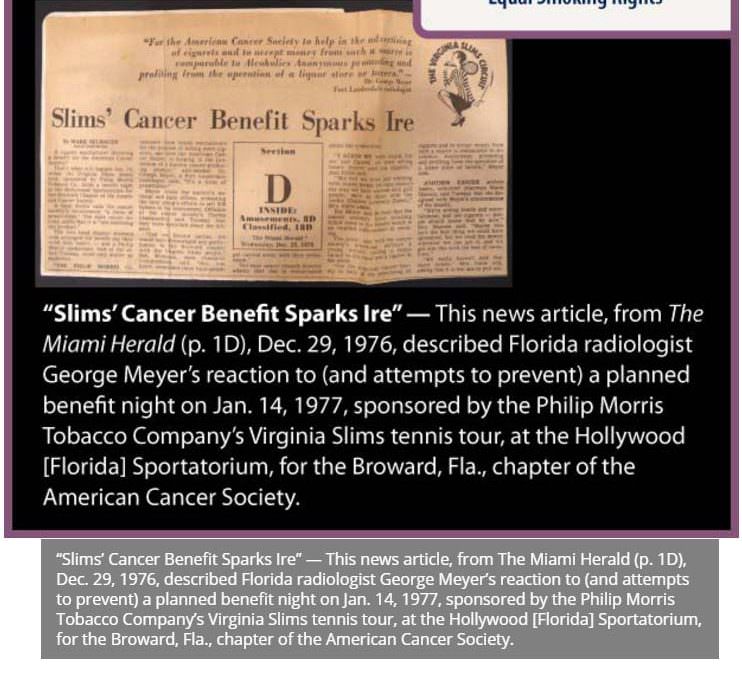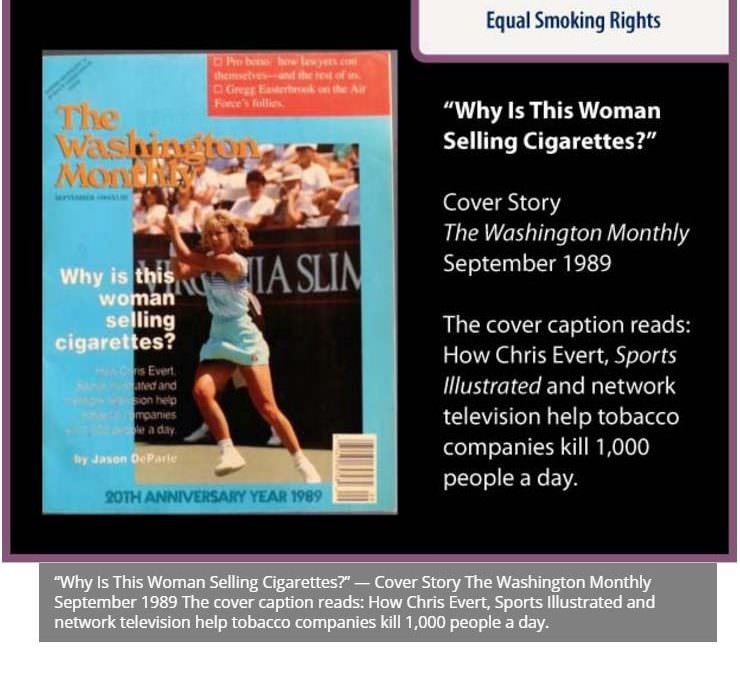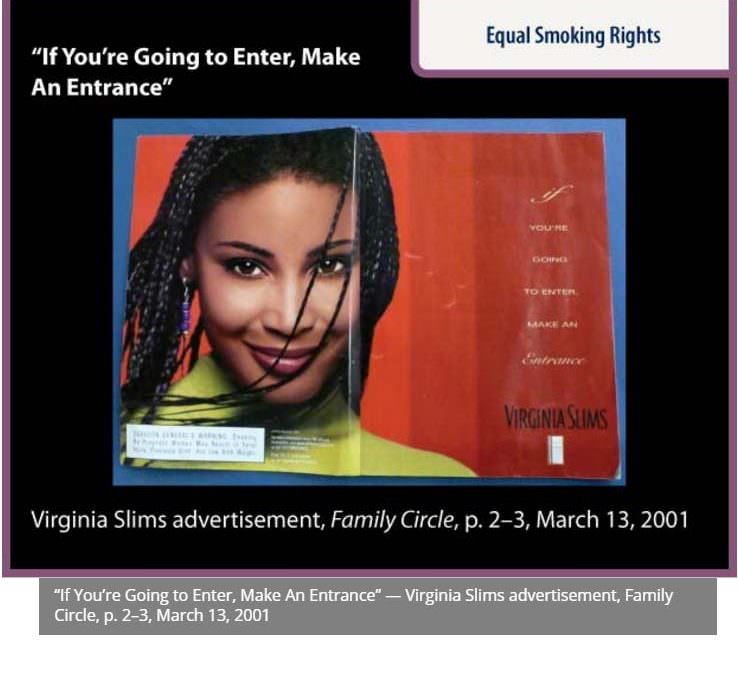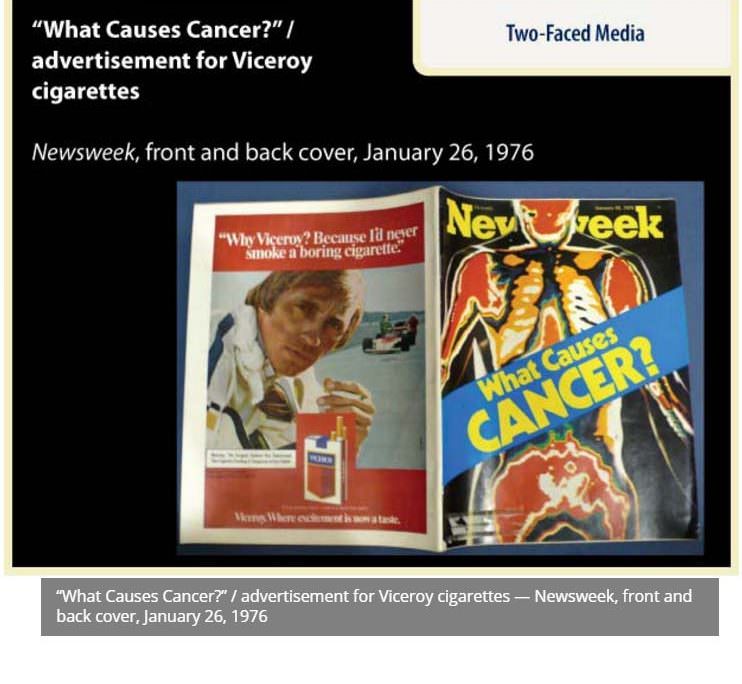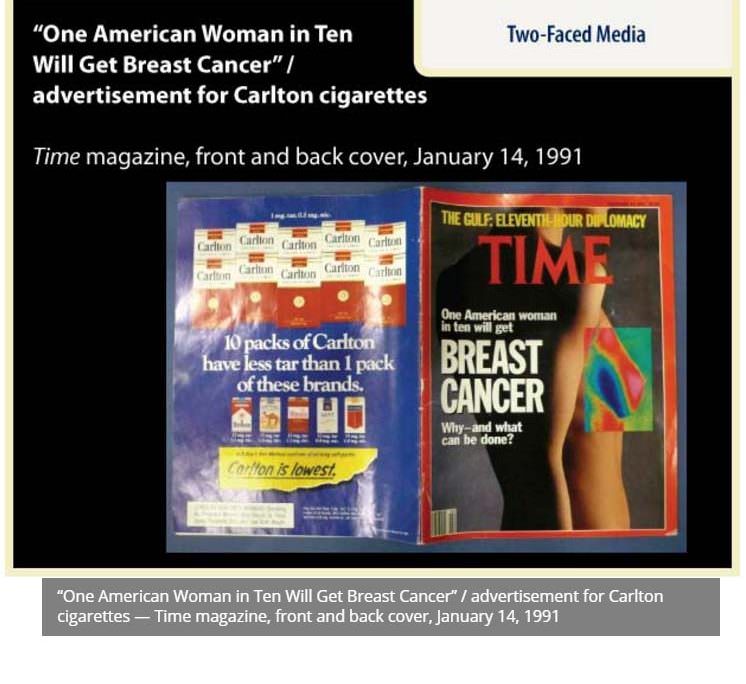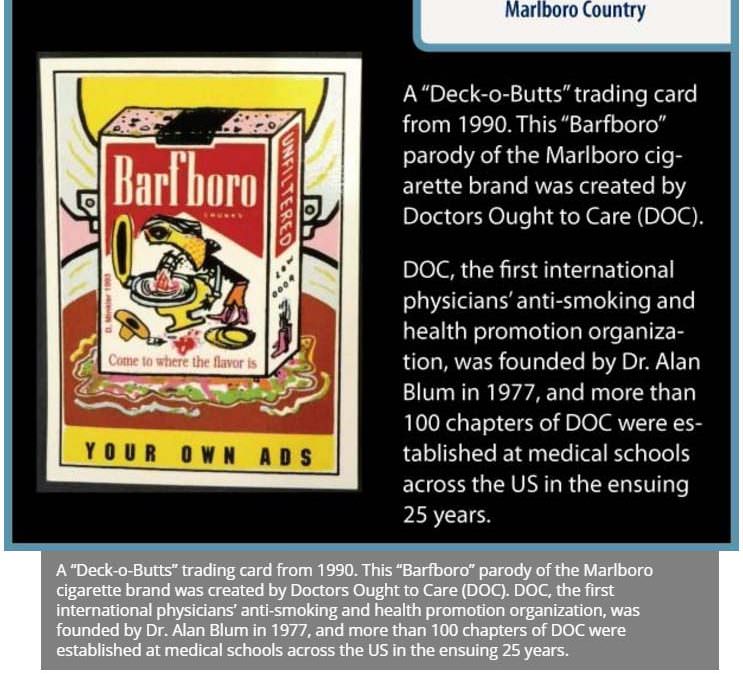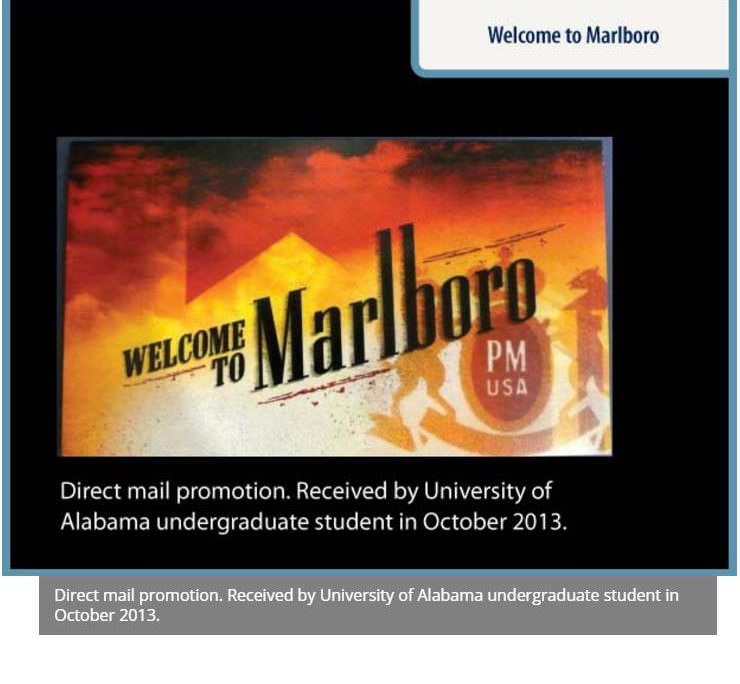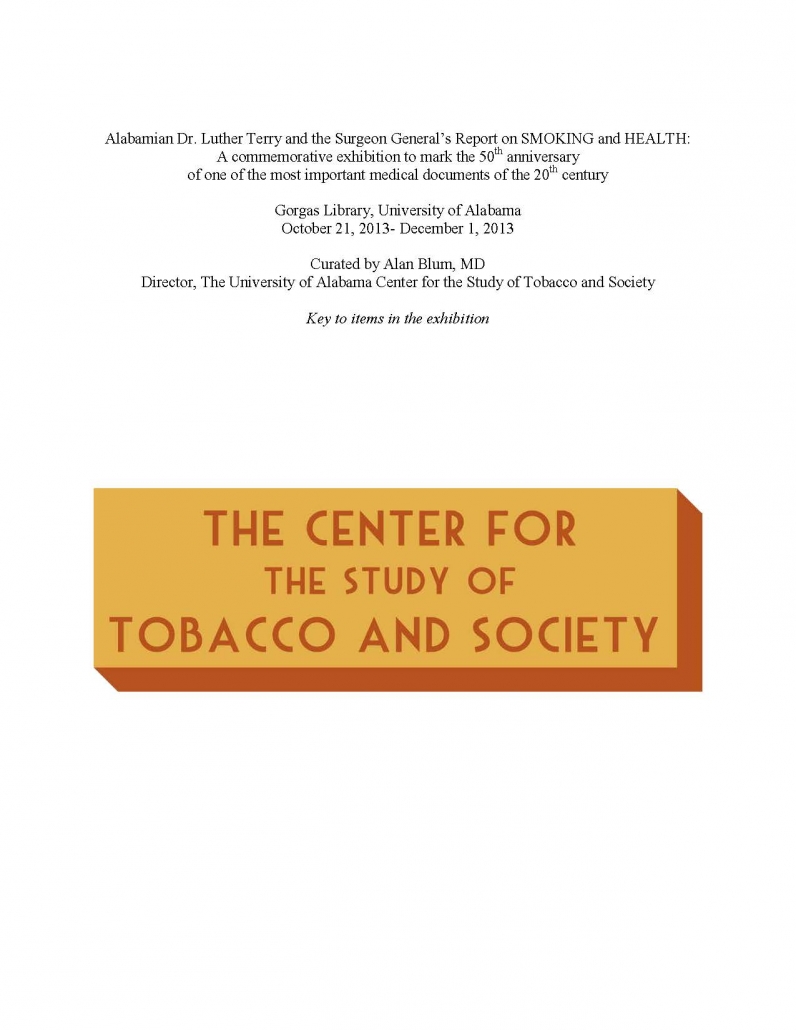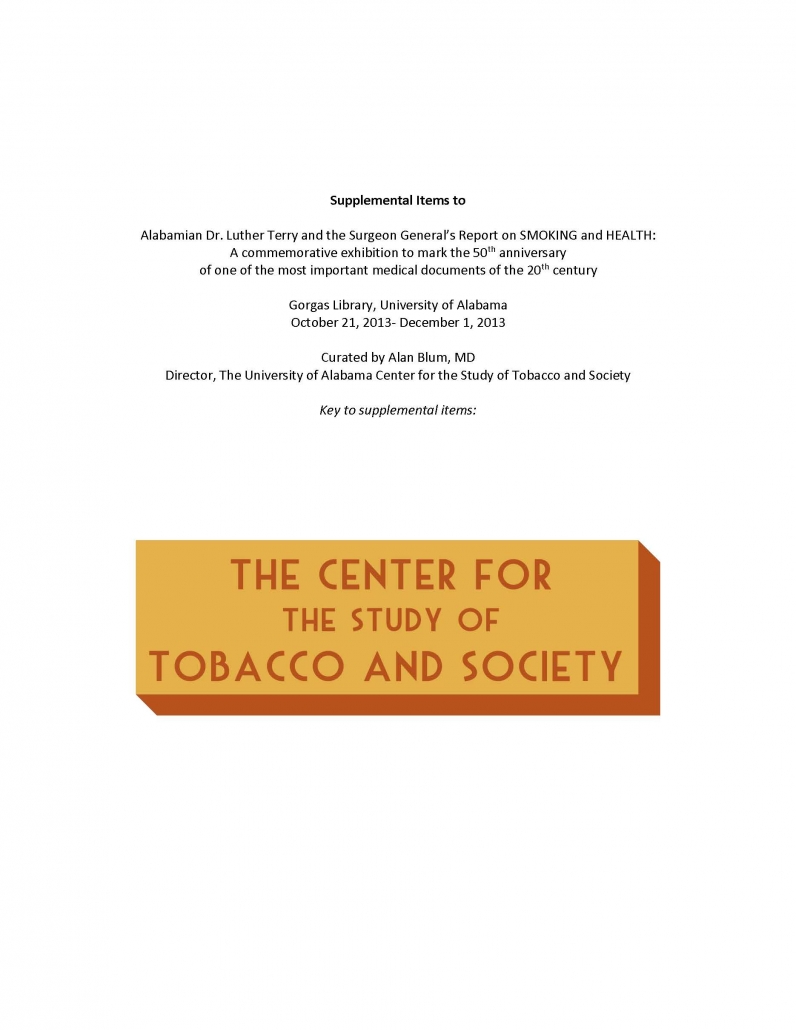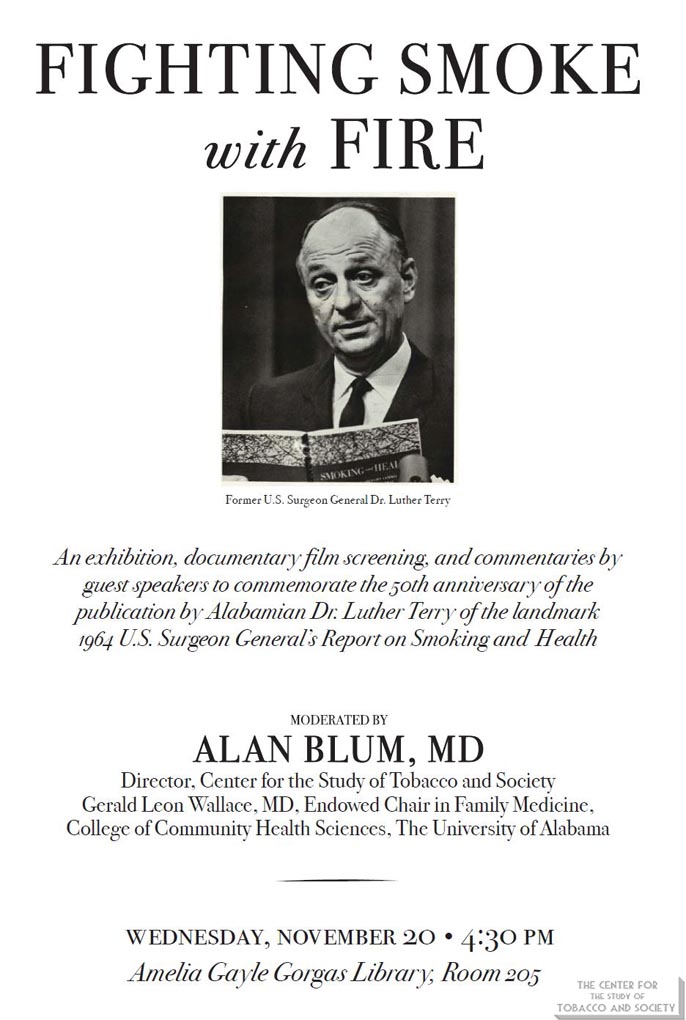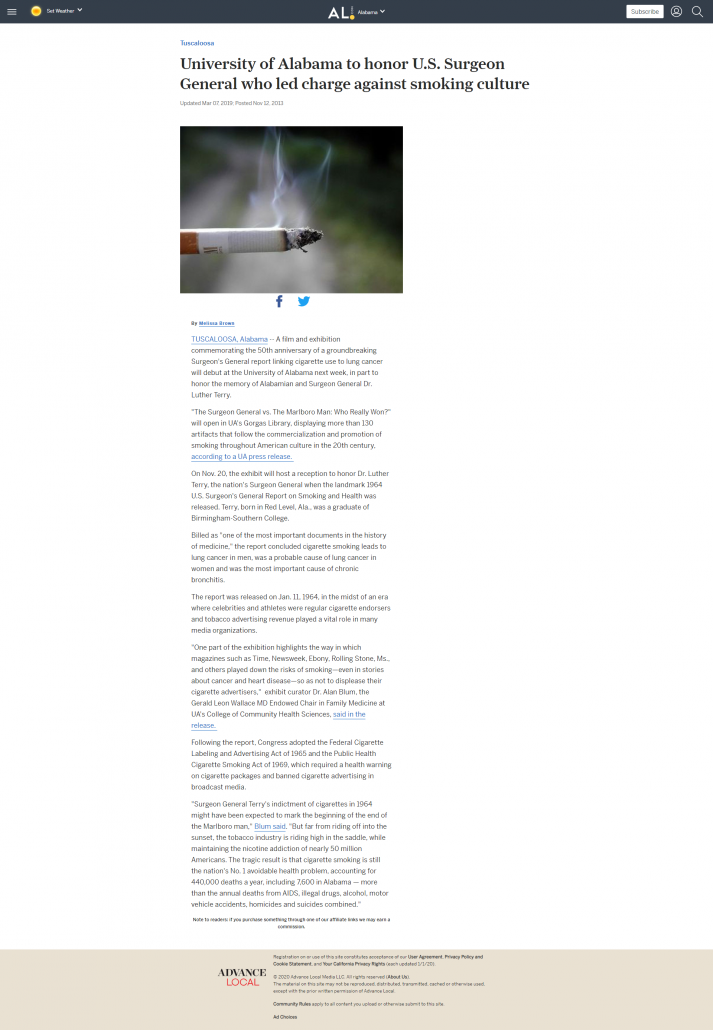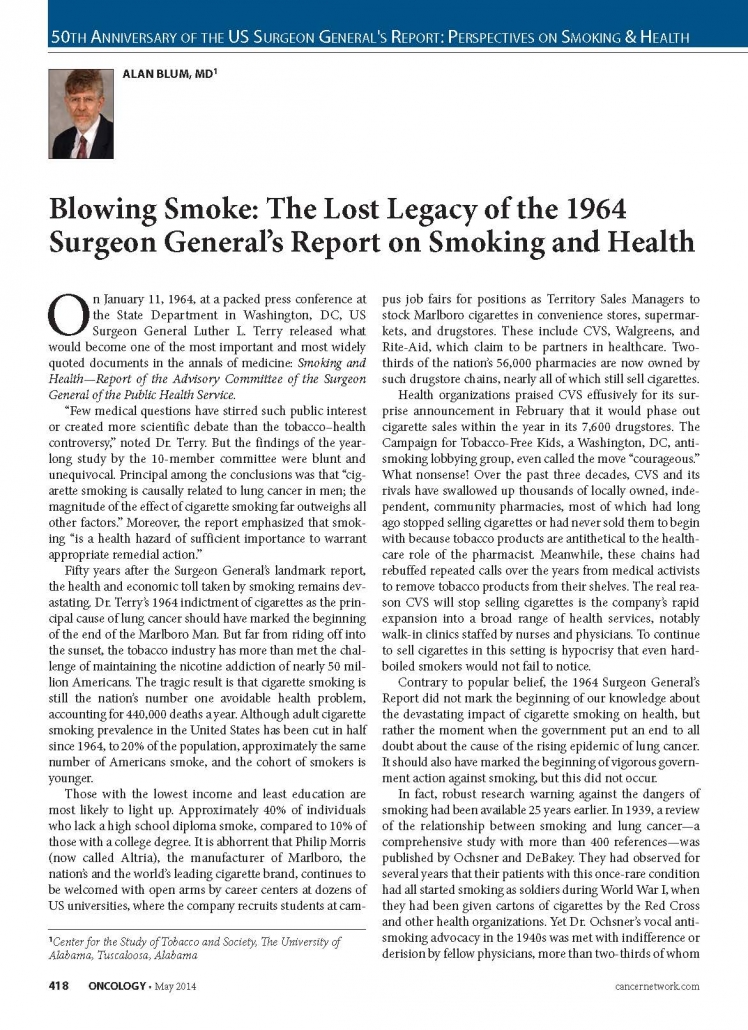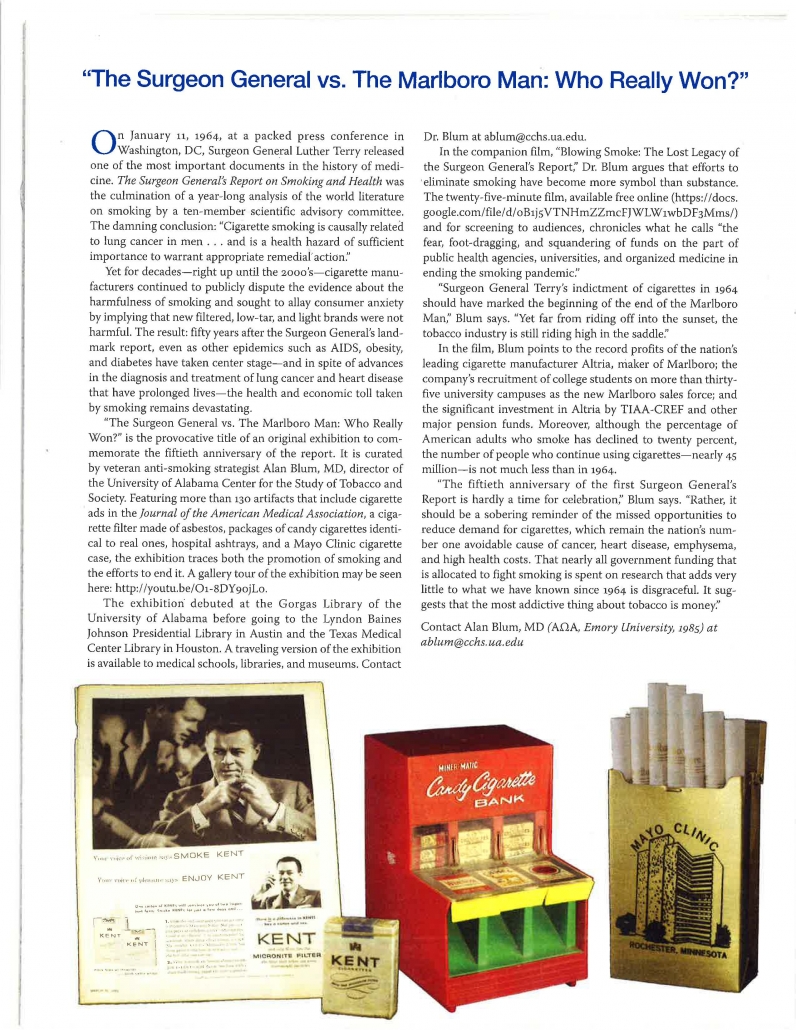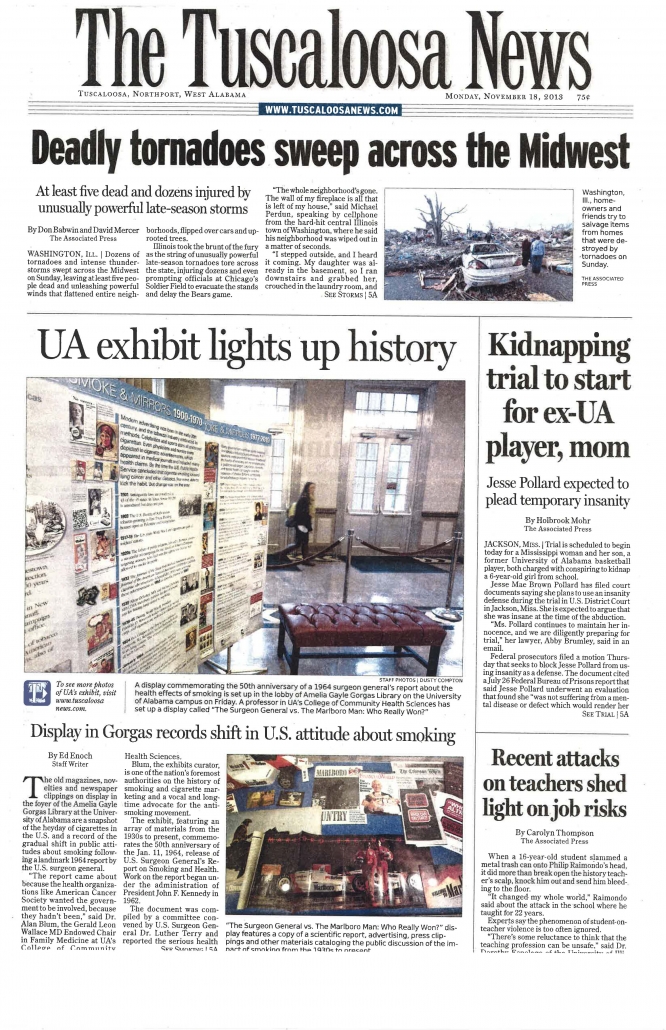Blowing Smoke: The Lost Legacy of the Surgeon General’s Report on Smoking and Health
“Never before had the government branded a product a threat to public health. Those who later would lament the growing involvement of government into Americans’ lives would trace the trend to this landmark report.”
–LOST EMPIRE: The Fall of R.J. Reynolds Tobacco Company
On January 11, 1964, at a packed press conference for over 200 reporters at the State Department in Washington, DC, US Surgeon General Luther L. Terry released what would become one of the most important and most widely cited documents in the annals of medicine: Smoking and Health—Report of the Advisory Committee of the Surgeon General of the Public Health Service.
“Few medical questions have stirred such public interest or created more scientific debate than the tobacco–health controversy,” Terry noted. But the findings of the 14-month study by the 10-member committee were blunt and unequivocal. Principal among the conclusions: “Cigarette smoking is causally related to lung cancer in men; the magnitude of the effect of cigarette smoking far outweighs all other factors,” and “it is a health hazard of sufficient importance to warrant appropriate remedial action.”
Dr. Terry’s indictment of cigarettes as the principal cause of lung cancer was intended to mark the beginning of the end of the Marlboro Man. But far from riding off into the sunset, the tobacco industry has more than met the challenge of maintaining the nicotine addiction of tens of millions of Americans and 1.3 billion people overall (22% of the world’s population). The health and economic toll taken by tobacco remains devastating.
This exhibition commemorates — but does not celebrate — the 60th anniversary of the publication of the Surgeon General’s Report. In 1995 the New York Public Library featured the Report in an exhibition of 100 “Books of the Century.” The Report was one of 10 scientific works, including Rachel Carson’s Silent Spring, James Watson’s The Double Helix, and Albert Einstein’s The Meaning of Relativity.
Drawn from the Center’s print and broadcast collections, Blowing Smoke reviews the report’s origins and the reactions to its release by the mass media, organized medicine, and the tobacco industry. It highlights Dr. Terry’s plea to physicians — the majority of whom still smoked — to advise patients to stop, as well as his leadership in urging the public health community to launch anti-smoking educational campaigns. The exhibition also includes sections on Dr. Leroy Burney, the first Surgeon General to state publicly that cigarette smoking caused lung cancer; L. Edgar Prina, the reporter who asked President John F. Kennedy the question that led to the formation of the advisory committee; Senator Maurine Neuberger, the first Member of Congress to take on the politically powerful tobacco industry and its allies such as the American Medical Association; Sir George Godber, the head of the United Kingdom’s National Health Service, who encouraged Dr. Charles Fletcher of the Royal College of Physicians to issue a public report on the health consequences of smoking; and Senator Robert F. Kennedy, who, at the First World Conference on Smoking and Health in 1967, gave a stirring call for actions to reduce cigarettes’ devastating toll.
Blowing Smoke provides sobering lessons about the failure of government, academia, foundations, and health organizations alike to overcome their addiction to money for endless research, not action — a strategy set in motion in 1954 by the six major U.S. cigarette manufacturers when they created the Tobacco Industry Research Committee [renamed the Council for Tobacco Research in 1964 following publication of the Surgeon General’s Report], which offered lucrative employment for scientists willing to cast doubt on the growing evidence of cigarette smoking as a major cause of death and disease. Although the state attorneys general would force the tobacco industry to shut down the Council in the late-1990s and publish corrective advertisements acknowledging that smoking causes cancer, these manufacturers, led by Philip Morris International, now portray themselves as veritable pharmaceutical companies offering not just their ever-profitable cigarette brands but also a range of smoke-free, “reduced harm” products touted by hirelings from academia, the World Health Organization, the Food and Drug Administration, and the American Legacy Foundation–as if addiction to nicotine were just a minor side effect.
Alan Blum, MD
Director, The Center for the Study of Tobacco and Society
The Immediate Reaction to the Report
Exhibition curator Alan Blum, MD, sets the stage for one of the major announcements in the history of public health. (01:32)
SMOKING and HEALTH
REPORT OF THE ADVISORY COMMITTEE TO THE SURGEON GENERAL OF THE PUBLIC HEALTH SERVICE (29-page excerpt)
Front cover; click on image to read Part I: Introduction, Summaries, and Conclusions
Washington, DC: US Department of Health, Education, and Welfare
Public Health Service Publication No. 1103
387 pages
January 11, 1964
“Since the turn of the [20th] century, scientists have become increasingly interested in the effects of tobacco on health. Only within the past few decades, however, has a broad experimental and clinical approach to the subject been manifest; within this period the most extensive and definitive studies have been undertaken since 1950.
“Few medial questions have stirred such public interest or created more scientific debate than the tobacco-health controversy. The interrelationships of smoking and health undoubtedly are complex. The subject does not lend itself to easy answers. Nevertheless, it has been increasingly apparent that answers must be found…”
— Foreword by Luther L. Terry, Surgeon General
“Verdict on Cigarets: Guilty as Charged” (17 pages)
News article; three cigarette advertisements; one cigar advertisement
LIFE Magazine
January 24, 1964
“The 10-man jury had been out for more than a year weighing the case against cigarets. Now surgeon general Luther L. Terry, holding in his hand the jury’s 387-page report, announced to the nation its unanimous verdict on the cigaret: guilty as charged of being a menace to health.
“Cigarets, said the report, are a major cause of lung cancer and chronic bronchitis. And they help shorten a smoker’s life in a number of other ways. This had been said before. But now it was being said with greater authority by the Surgeon General’s Advisory Committee, a group distinguished medical men whose appointments were approved by the tobacco industry.
“Many Americans had hoped the verdict would be different: tobacco people, farmers, politicians, suppliers, salesmen, advertising men — and, not least of all, the American smoker, who has mightily resisted the idea that his old and comforting friend, the cigaret, had all along been a villain…”
(Curator’s note: This issue also included advertisements by RJ Reynolds Tobacco Company for Winston cigarettes (back cover), P. Lorillard Tobacco Company for Newport cigarettes, Philip Morris Inc. for LARK cigarettes, and General Cigar Company for White Owl cigars.)
“WASHINGTON, Jan. 11 — SAYS SMOKING IS DAMAGING — Dr. Luther Terry, U.S. Surgeon General, answers a question at news conference discussion of blue ribbon federal panel’s studies of the dangers of smoking on health. He said he would warn his patients against smoking and if they insisted on doing it he would make sure they understood they would face serious health hazards.”
Assocated Press Wirephoto
Jamuary 11, 1964
“CIGARETTES PERIL HEALTH,
U.S. REPORT CONCLUDES;
‘REMEDIAL ACTION’ URGED;
CANCER LINK CITED;
Smoking Is Also Found ‘Important’ Cause of Chronic Bronchitis” (5 pages)
Article by Walter Sullivan
The New York Times
January 12, 1964
14 related articles:
“Summary and Conclusions of U.S. Report on Links Between Smoking and Health”
“Industry Is Still Prospering;
CIGARETTE SALES CONTINUE TO RISE”
By Alexander H. Hammer
“3 Networks Will Review Policy On Use of Tobacco Advertising”
“Clergy Is Urged to Set Example on Cigarettes”
“Increase Is Expected in Suits Over Cancer”
“Tobacco Institute Says Report ‘Is Not Final Chapter’ In Debate Over Health Issue
RESEARCH URGED BY ITS PRESIDENT”
By John H. Allan
“SMOKING BANNED AT NEWS PARLEY
But Some Reporters Puff Sheepishly in Corridors”
By Marjorie Hunter
“Medical Study in 1859 First Cited Hazards;
Tobacco Linked to Cancers by French Doctor [Dr. Bouisson of Montpelier]
— Other Data Made Little Stir”
By Harold M. Schmeck, Jr.
“SMOKER IN STREET LARGELY DEFIANT
But Some Concede They’re Frightened by the Report”
By Douglas Robinson
“Pending Smoking Bills”
“Sketches of Members of Government Study Panel”
“Smoking Report Poses Issue of Public Policy”
“Head of Cancer Society Asks Follow Up Action”
“Report Not Convincing to a Scientist at Yale”
See also The Dallas Morning News, January 12, 1964: “Smoking Held Cancer Cause” (4 pages)
“U.S. Plans Legal War to Cut Cigaret Smoking” (2 pages)
News article by Robert C. Toth
The Detroit News
January 11, 1964
(Curator’s note: In the 1960s most US cities still had morning newspapers and afternoon newspapers. This issue of The Detroit News and the adjacent issue of The Macon News are the only examples in the Center’s collection of newspapers that reported on the Surgeon General’s Report within hours after it was published.)
“Smoking Called Major Cause of Lung Cancer;
Panel Finds Filters Do Not Cut Hazard” (2 pages)
News article by the Associated Press
THE MACON NEWS
January 11, 1964
“Senator Neuberger Asks Government To Curtail the Hazards of Smoking”
“Sen. Maurine B. Neuberger, Democrat-Oregon, today called for a sweeping national program to control the hazards of smoking…
“Mrs. Neuberger, who has campaigned for many years against smoking, said she planned to introduce two bills — one to give the Federal Trade Commission the power to regulate cigarette advertising and labeling, and the other to provide education and research on smoking.”
“Smoking Held Cancer Cause
Scientists Urge Remedial Action”
News article by the Associated Press
The Dallas Morning News
January 12, 1964
“THE CIGARET REPORT: Links Cancer, Other Diseases”
Front page coverage of Surgeon General’s Report: Articles by Jack Pickering and Emil J. Steinbruner
New York Journal American
January 12, 1964
“TIE CANCER TO CIGARETS
SCIENTIFIC REPORT REVIEWS RESEARCH ON HEALTH” (8 pages)
Front page article by Michael Pakenham; four pages of related articles, including
“SMOKE REPORT SCARES SOME, ANGERS OTHERS”
“Smoke Panel’s Credentials Told
Variety of Fields Represented by 10 Members”
“U.S. Report on Smoking Seen as a Best Seller”
“U.S. May Seek Cigaret Curbs
Industry Urges Wider Study of Smoking”
Chicago Tribune
January 12, 1964
“Head of A.M.A. Asks Public to Take Heed”
Chicago Tribune
January 12, 1964
“SMOKING AND HEALTH”/
“For Satisfying Pleasure…Kent with the Micronite Filter…” (5 pages)
Cover story and back cover advertisement by P. Lorillard Tobacco Company for Kent cigarettes
Newsweek
November 18, 1963
(Curator’s note: This article is the most definitive coverage in any news magazine about the U.S. Surgeon General’s Advisory Committee on Smoking and Health in the lead up to the publication of the committee’s findings. Just as the committee was winding up its top-secret investigation, and only a few days after this issue of Newsweek was published, President Kennedy was assassinated. There were concerns that the Report would not be released, because President Johns[whom he would nominate to the Supreme Court], had represented the tobacco industry.
The article includes statements from the Tobacco Industry Research Council and several physicians who cast doubt on the evidence that smoking caused cancer. The issue features an advertisement for Kent cigarettes on its back cover.)
“SPOTLIGHT ON BUSINESS: To Smoke — Or Not to Smoke?” (6 pages)
Article by Lawrence S. Martz
Newsweek
January 27, 1964
“MEDICINE: Smoking: The Government Report” (5 pages)
Article on the publication of the Surgeon General’s Report; advertisement by the American Tobacco Company for Montclair cigarettes
TIME Magazine
January 17, 1964

